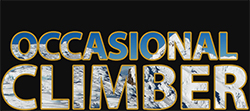Views on outdoor photography
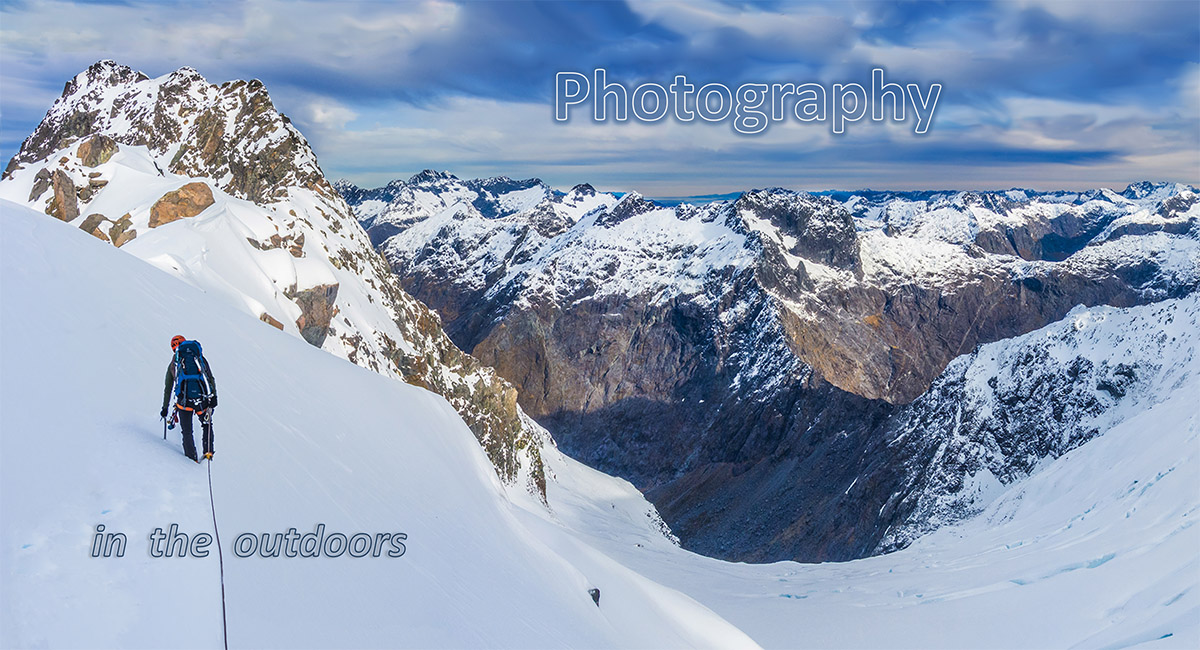
This is a presentation about what I think you need to know to be able to create beautiful outdoor images

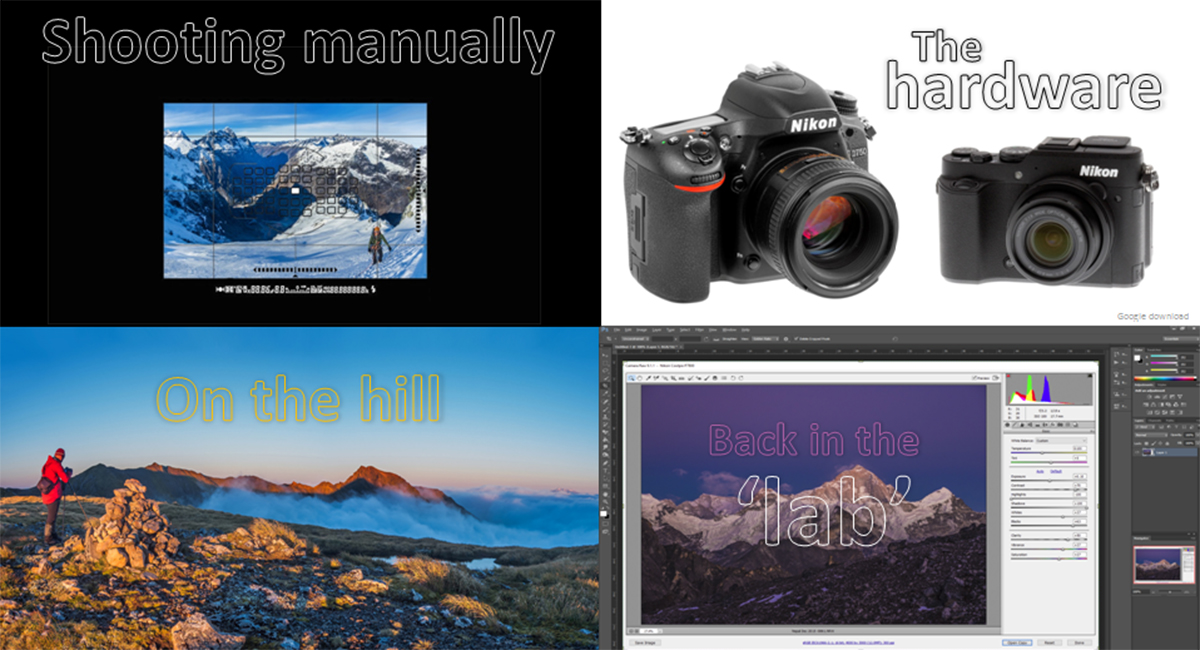
There are four main sections

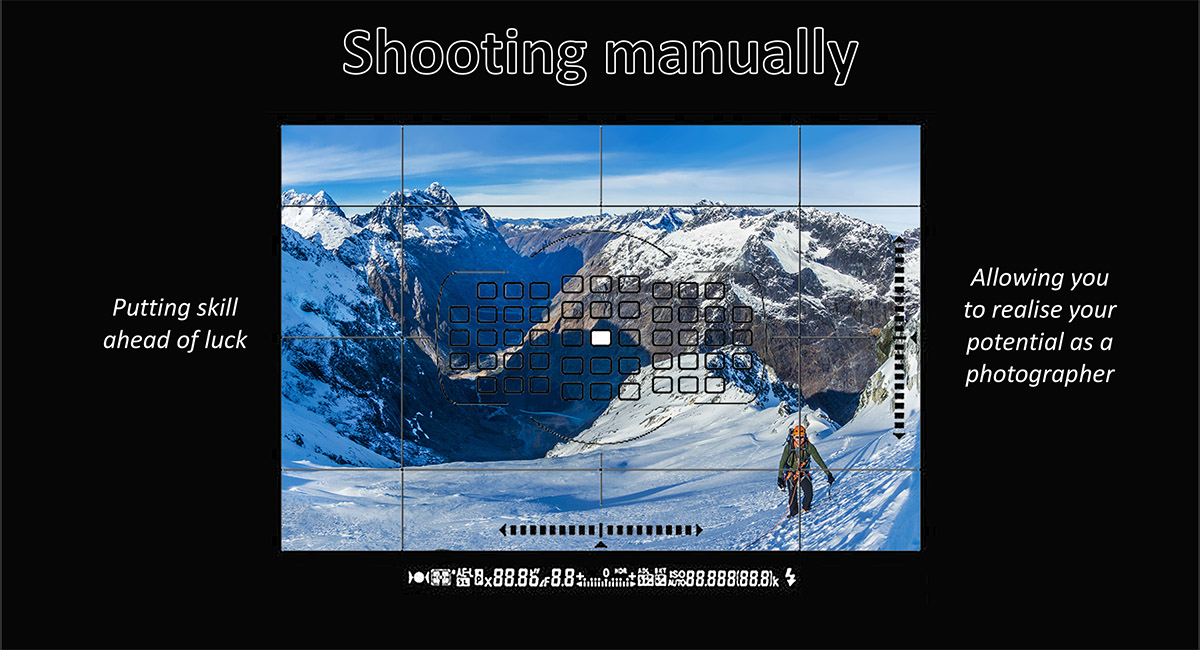
The first is about the dry technical stuff, but if you can't use your camera manually then you'll never get the best from it

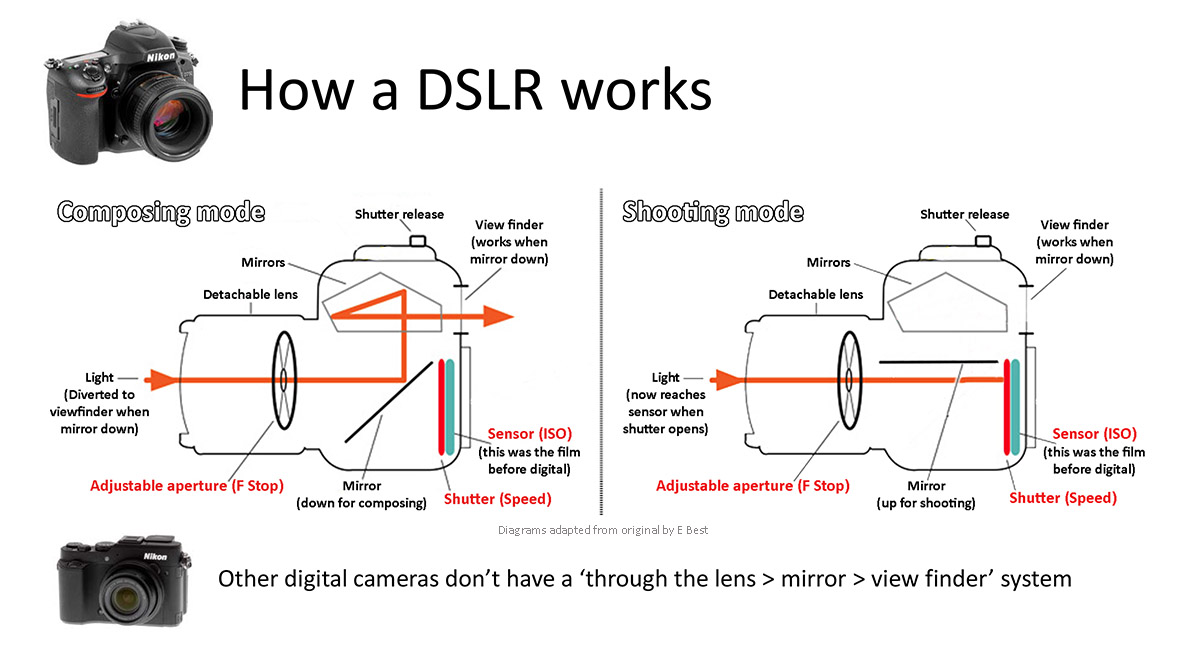
It's helpful to understand how a DSLR, or any digital camera for that matter, works. This screen only touches on the basics. New mirrorless technology is getting better and better too, enabling all the capabilities of DSLRs to come in smaller, more lightweight cameras

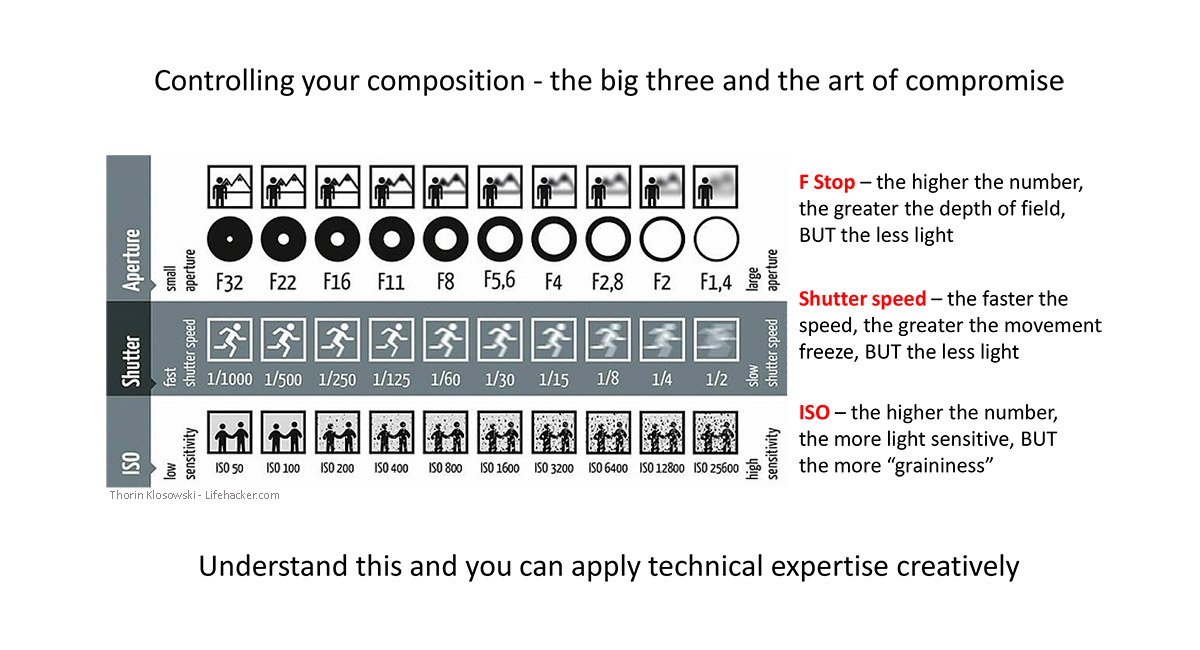
Understanding how to use F Stop, shutter speed and ISO competently and creatively is at the heart of good outdoor photography

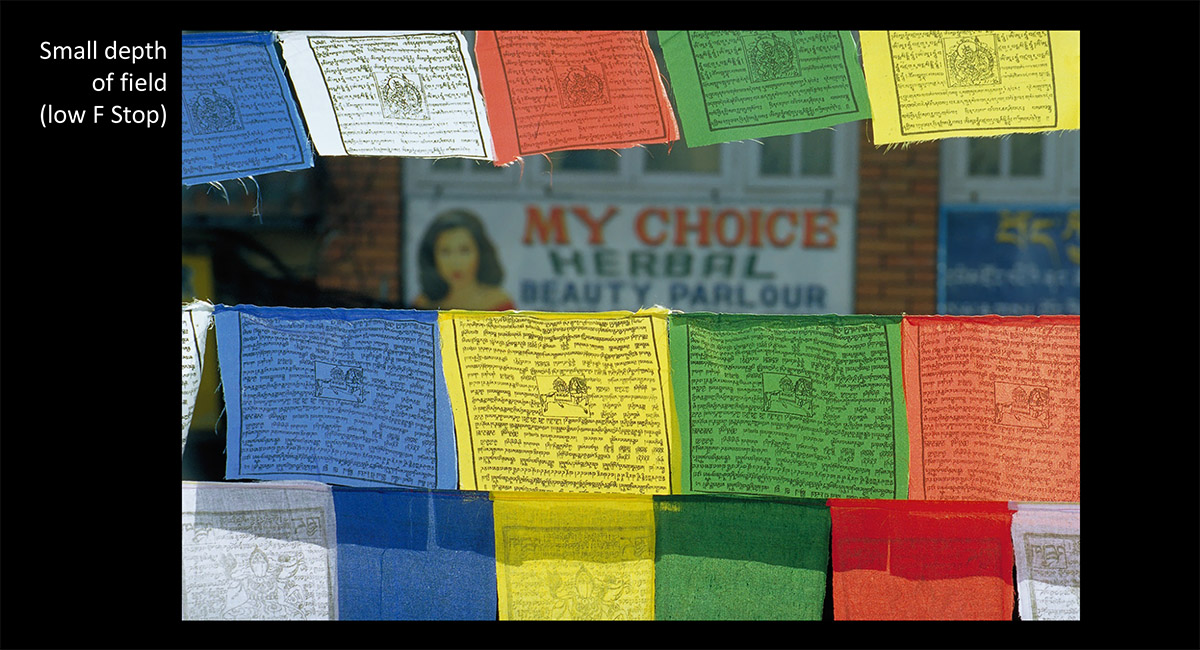
Here I chose to blur the background by using a low F Stop

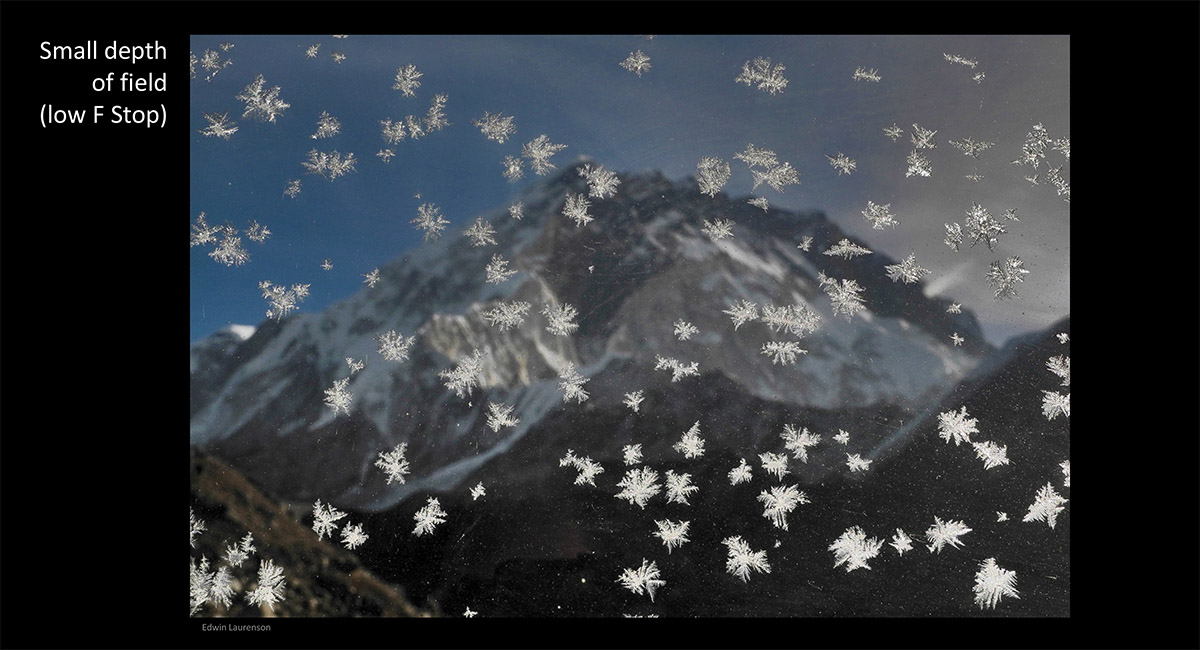
This image, taken by my son while we were in Nepal, is a nice demonstration of how a small depth of field accentuates the focus on the ice crystals that had formed on our bedroom window over night

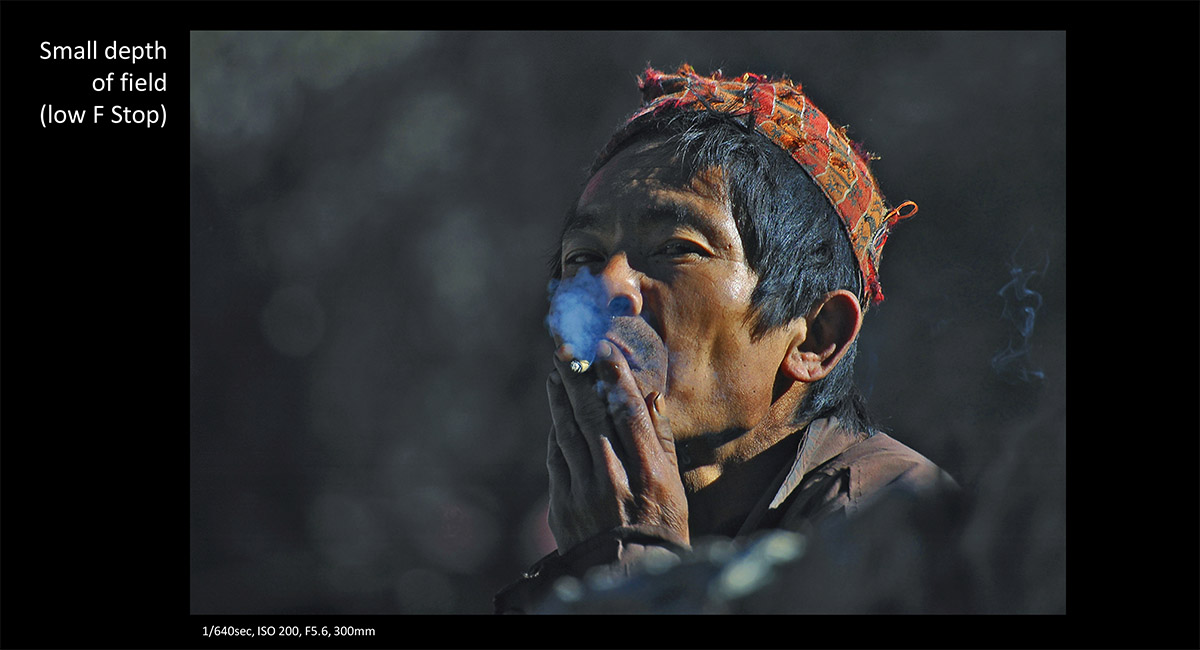
And here a small depth of field blurs out any unwanted distractions so that the smoker is the only point of attention

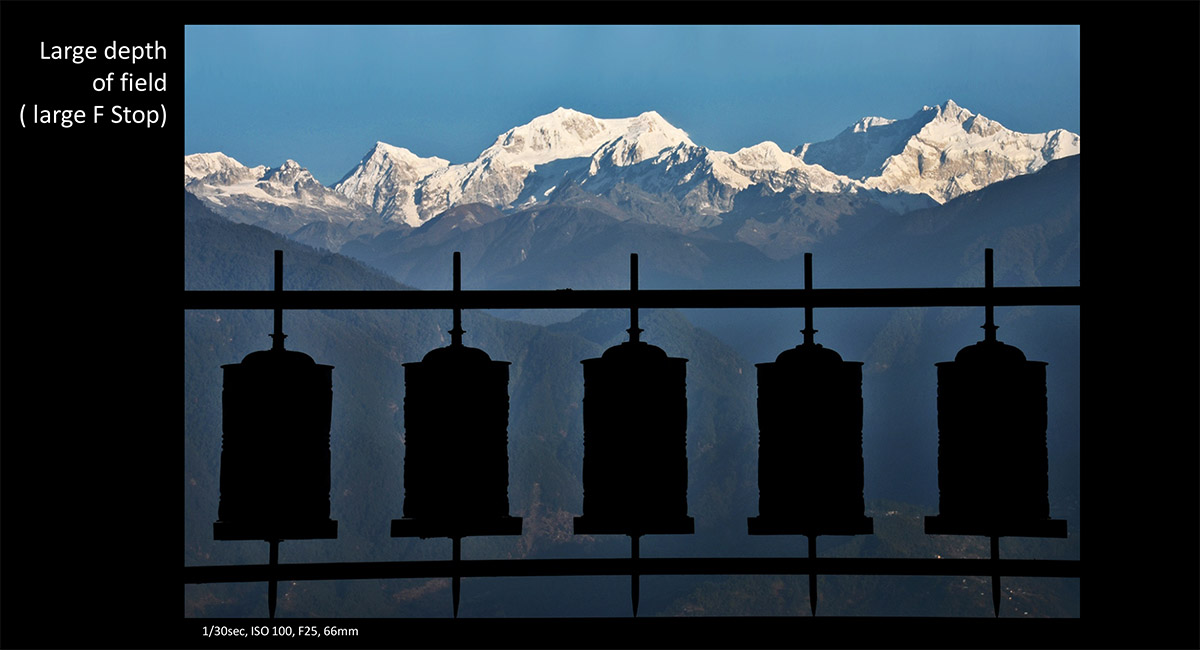
This image demonstrates how a big depth of field, with everything in sharp focus, can be very effective

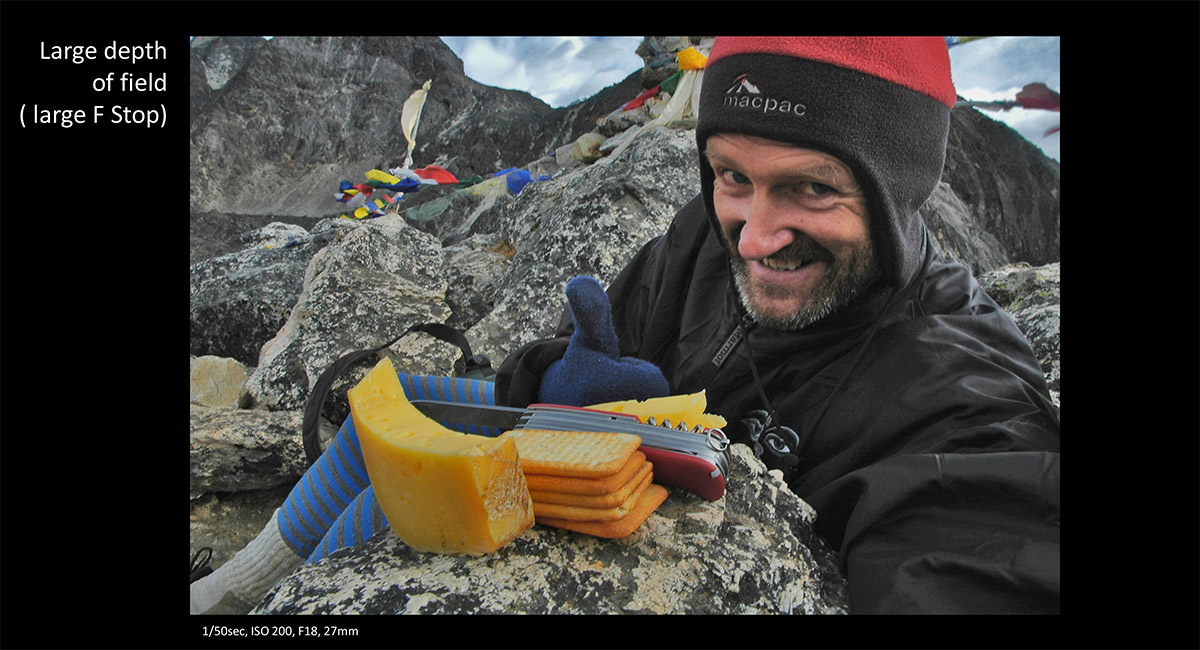
Likewise here, using a large F Stop, my yak cheese and crackers high point selfie has everything in focus even though the camera is just an arm's length away

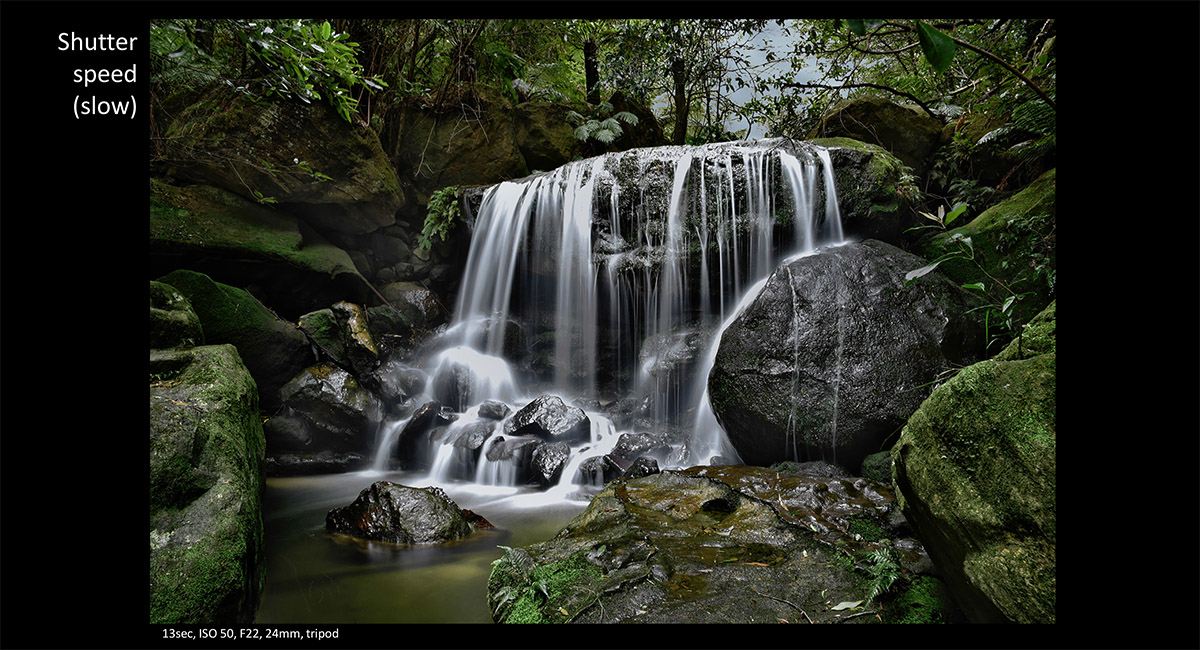
To achieve a sense of movement in a static image, you can use a very slow shutter speed so that the moving elements in a scene effectively blur - here the moving water appears soft and silky

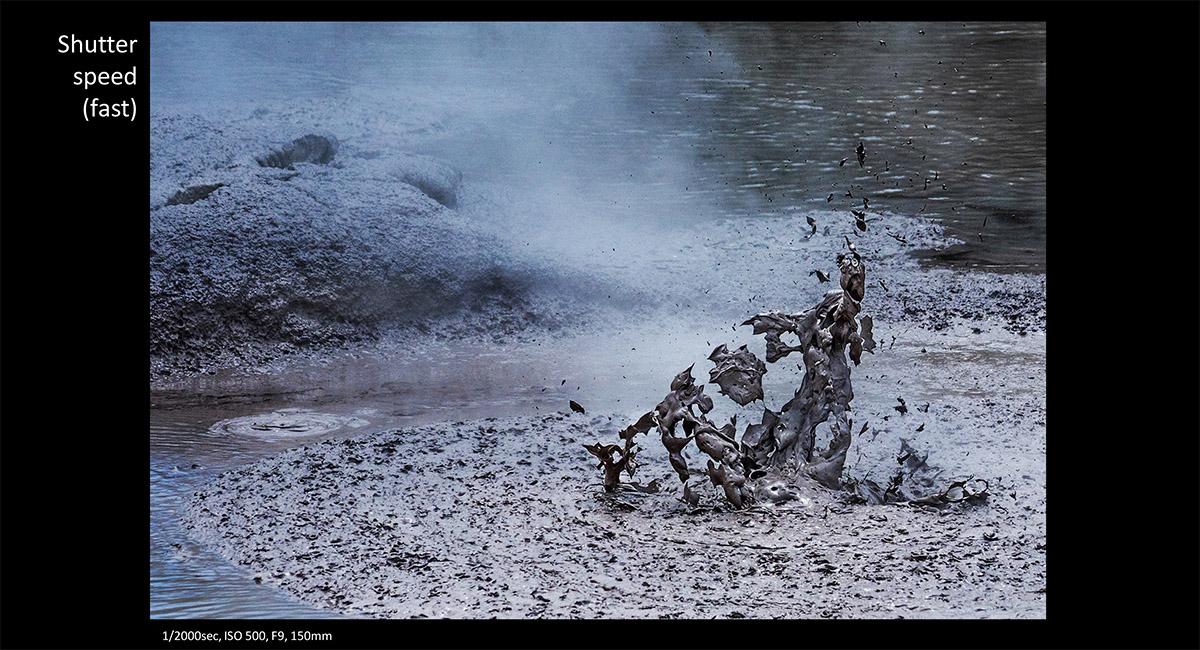
At the other end of the spectrum, where you need to freeze movement, a very fast shutter speed is needed

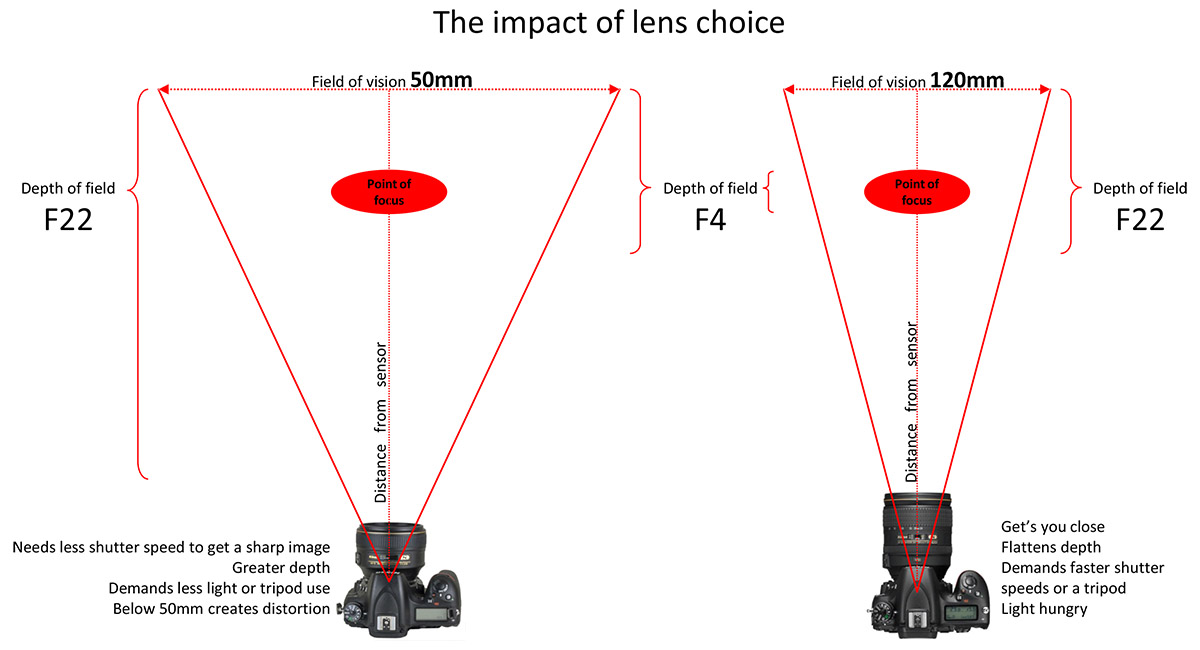
This is only a conceptual and approximate representation of the impact of different lens focal lengths

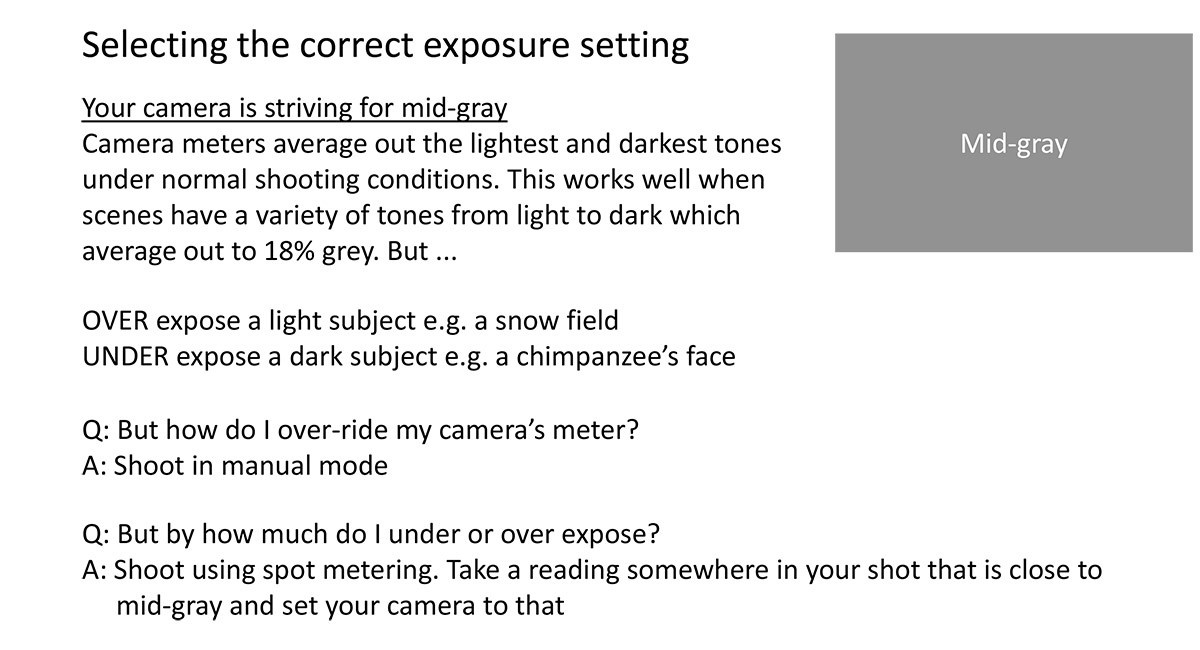
This may seem simple, but it's a fundamental insight, so make sure you get it

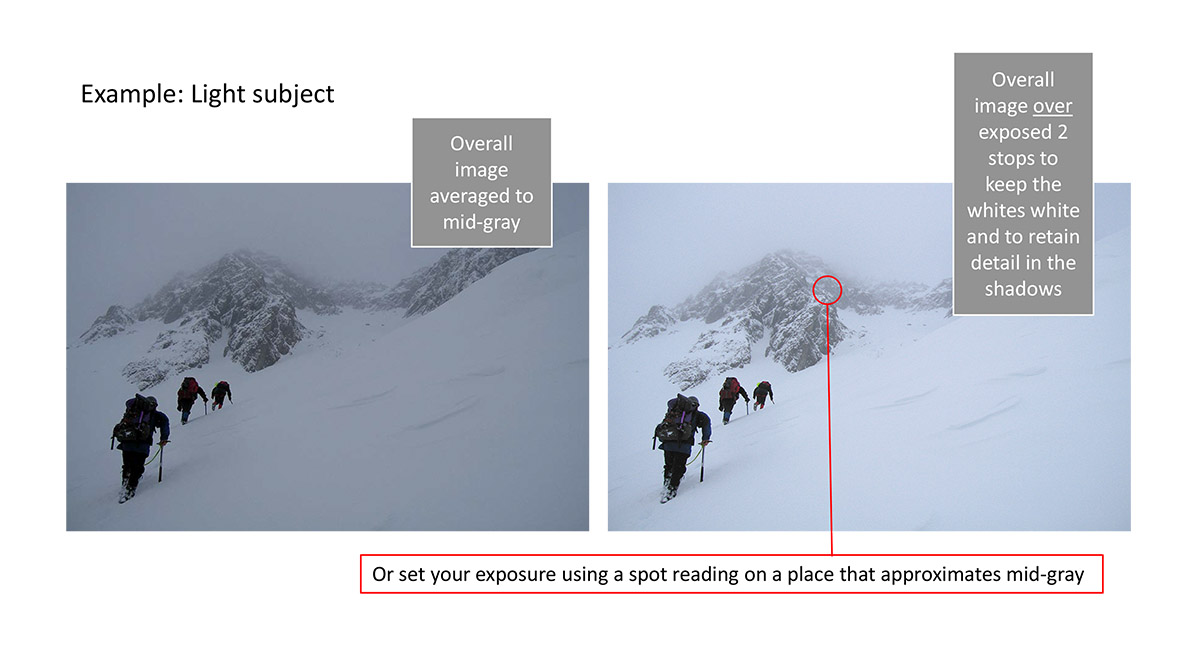

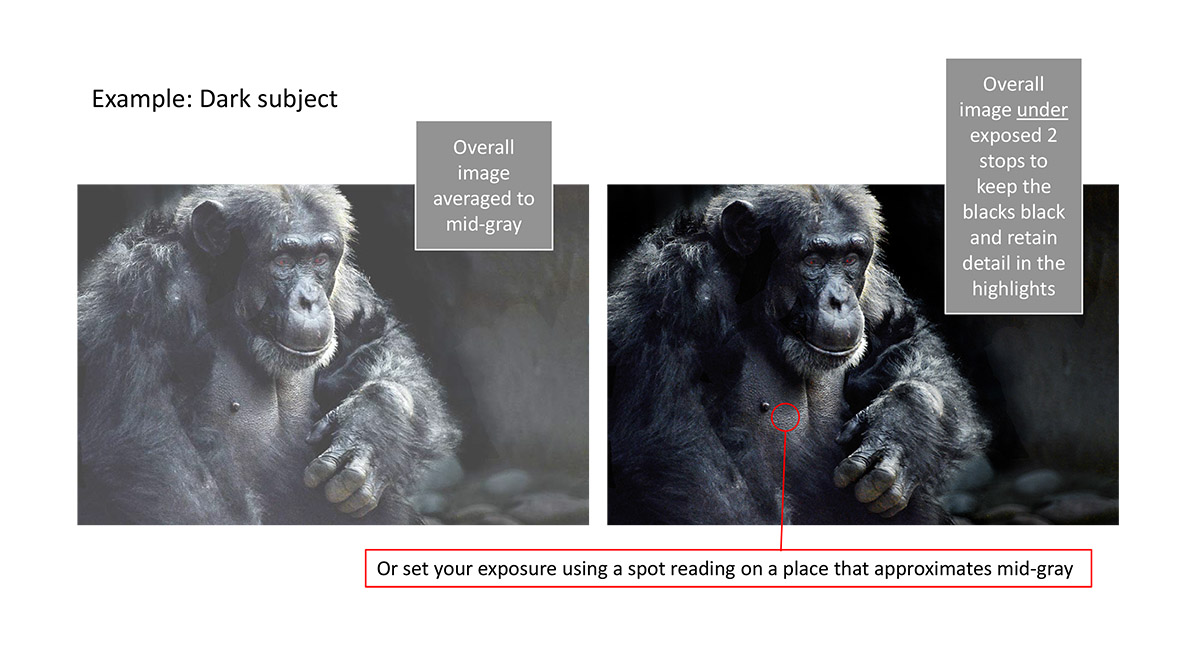

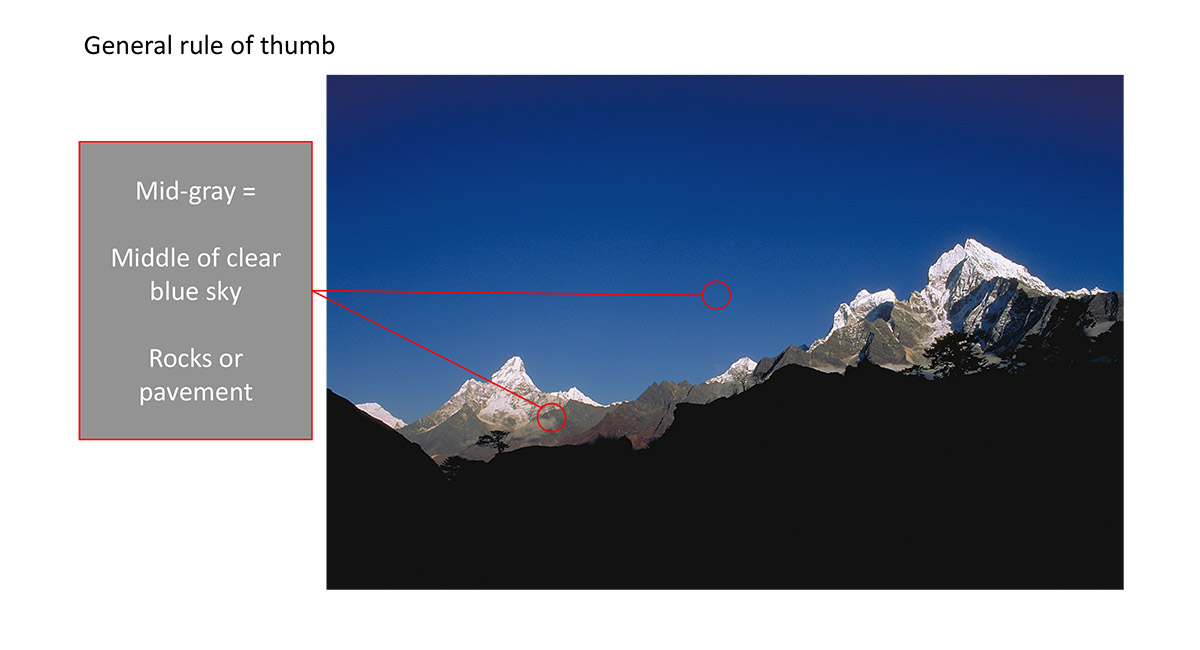
When in manual mode, you can point your spot meter point at a part of the scene that approximates mid-gray, then set your exposure to that. Then you can go back to composing your shot without worrying that the camera will auto adjust the exposure to some other less appropriate part of the scene

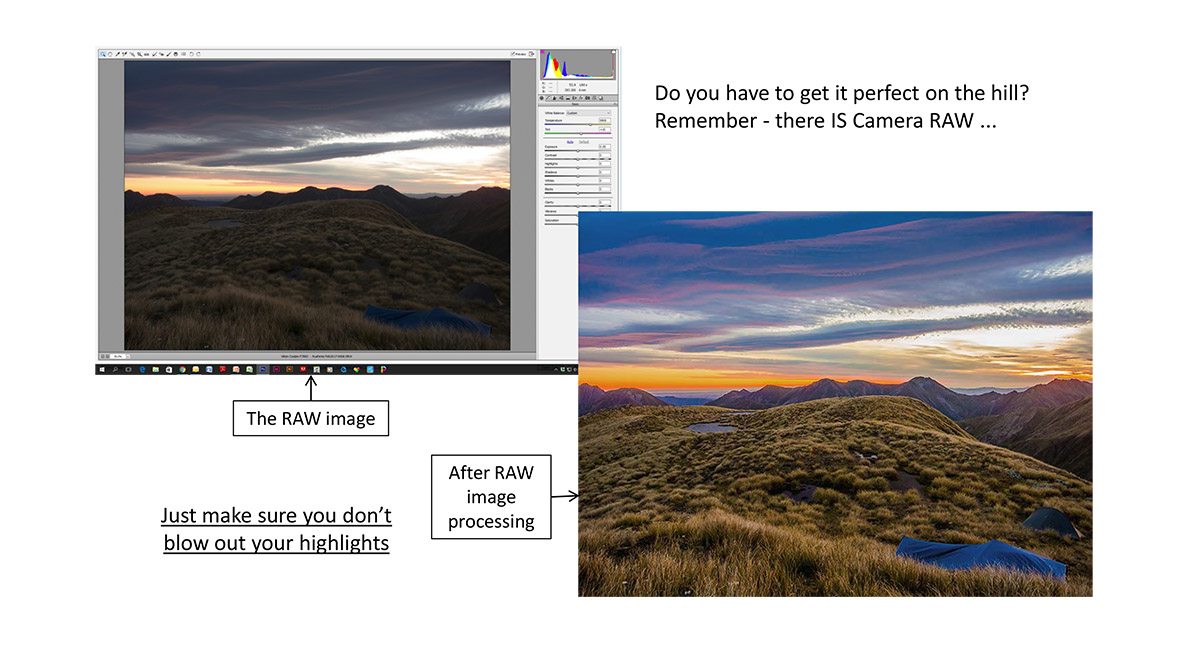
Knowing how to work with Camera RAW gives you more leeway to correct your image after the event. It also significantly improves your ability to creatively capture what you were setting out to. But more on RAW processing in the last section

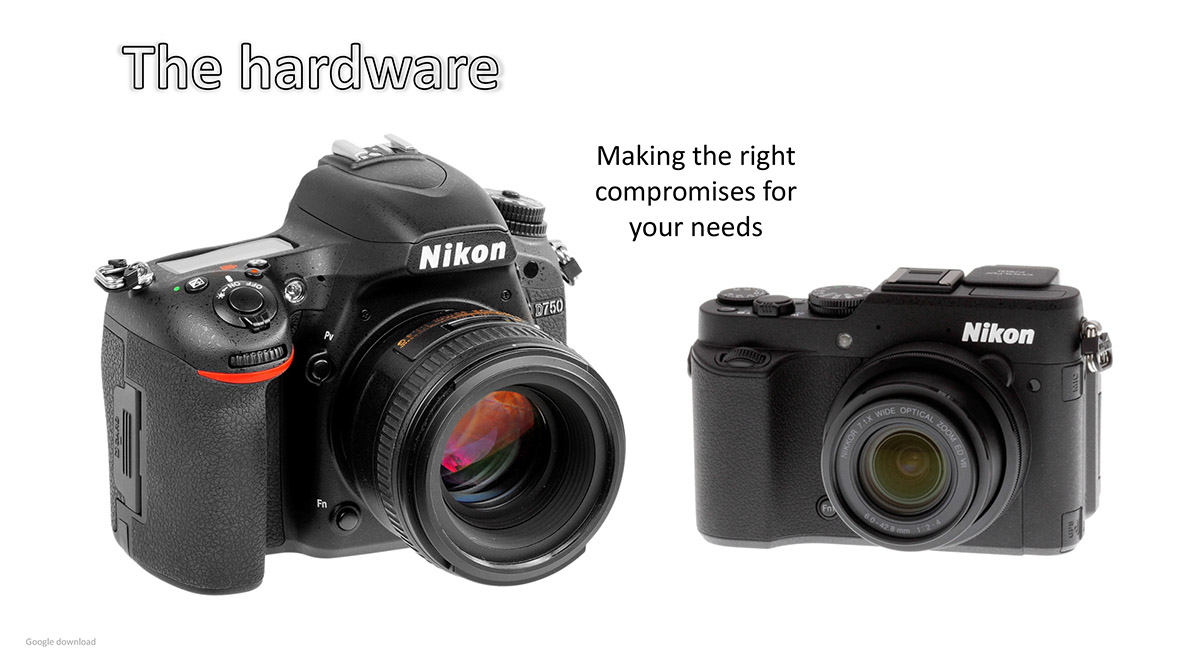
If you know how to shoot in manual mode then you can get more out of your camera. So, with so many choices out there, what's the right gear for you? Excuse my Nikon bias. There are of course other great camera manufacturers out there, but I've always been a Nikon fan

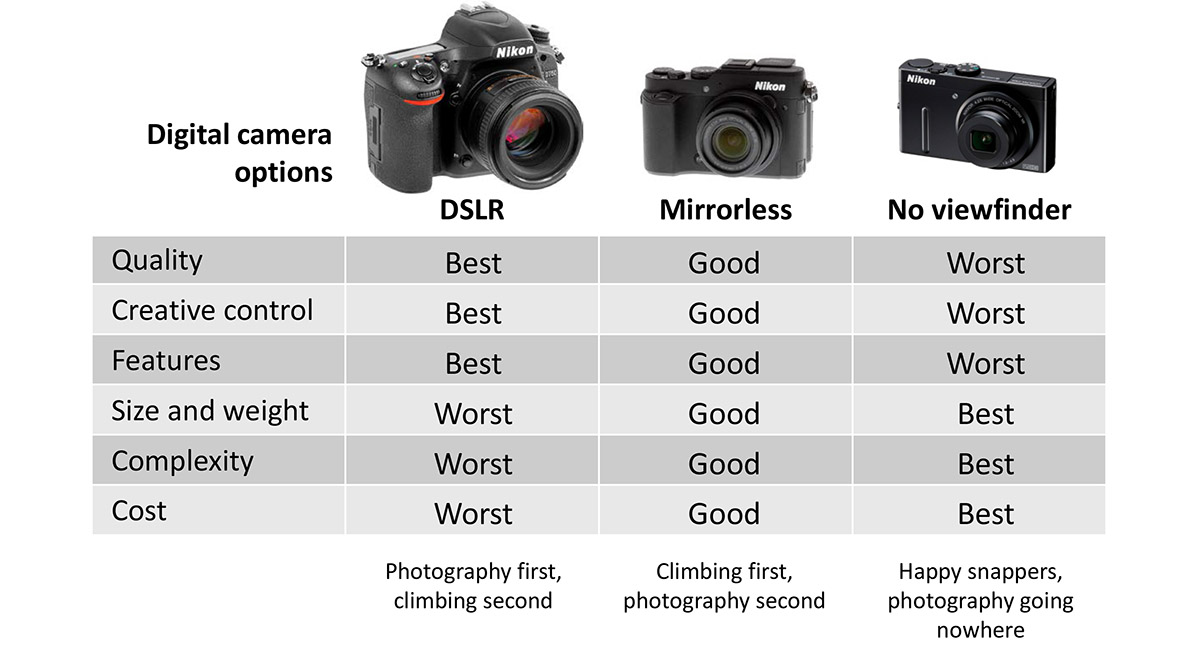
I love my D750 (pictured above), but for the outdoor photographer these days, the option of more lightweight, less bulky, but still very good quality mirrorless cameras is definitely worth considering. Many of the images featured in this website were taken on my little P7800 (pictured above). Unlike the ultra-compact pictured on the right, it still has a digital, mirrorless, through the lens viewfinder and the ability to shoot fully manual, in RAW, using spot meter - great for summit day

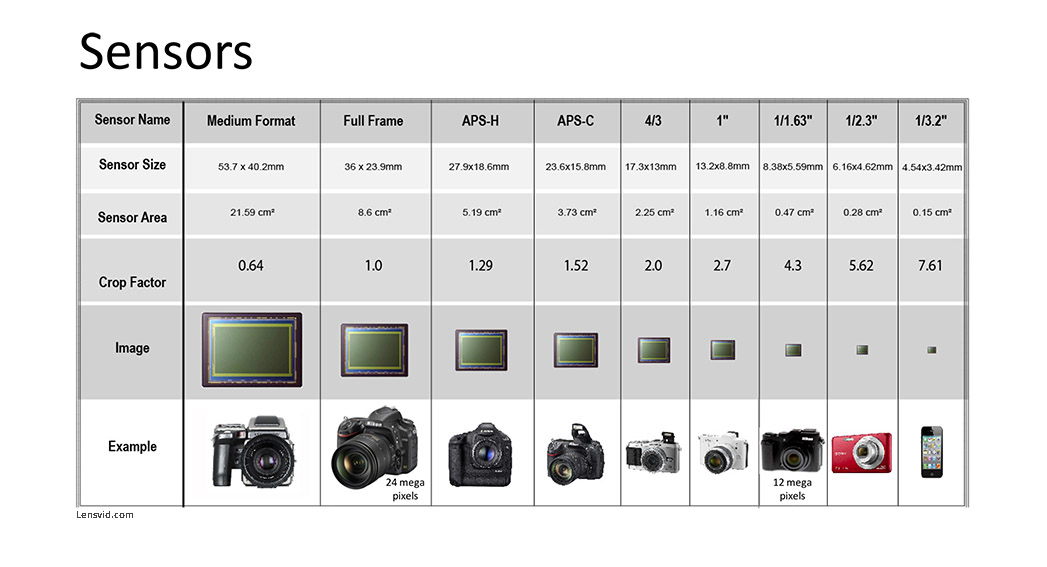
In digital cameras the sensor (what has effectively replaced film, when combined with data storage) is a major determinant of image file size and quality. Smart phones are very portable and their cameras are getting much better, but if you're serious about photography you still need a proper camera

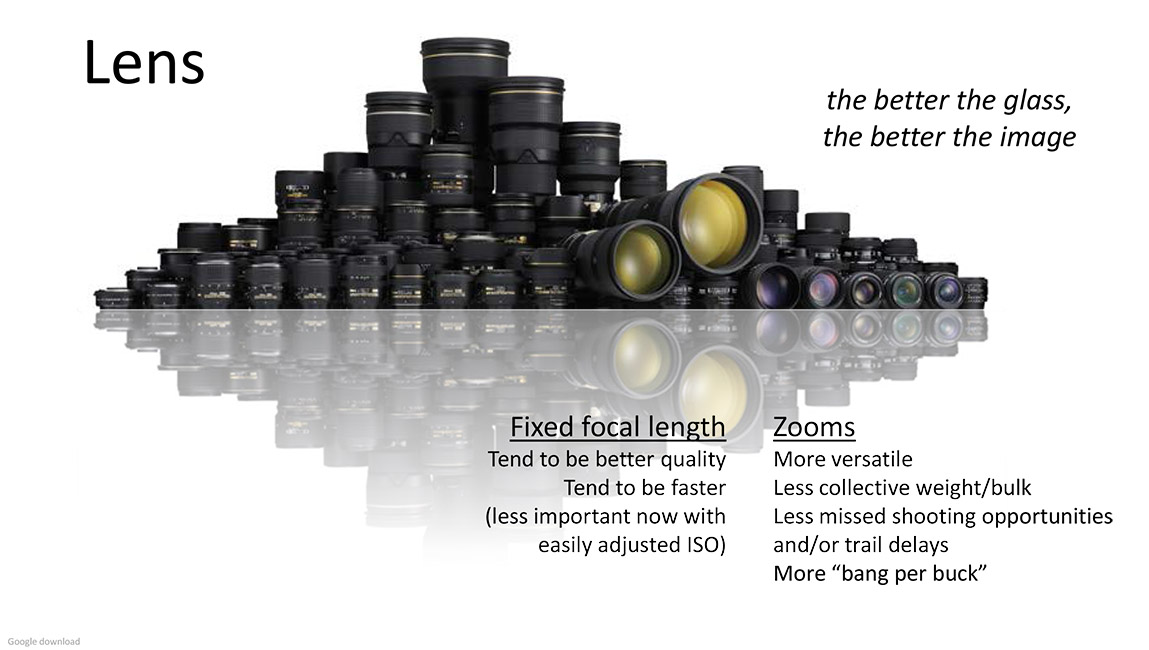

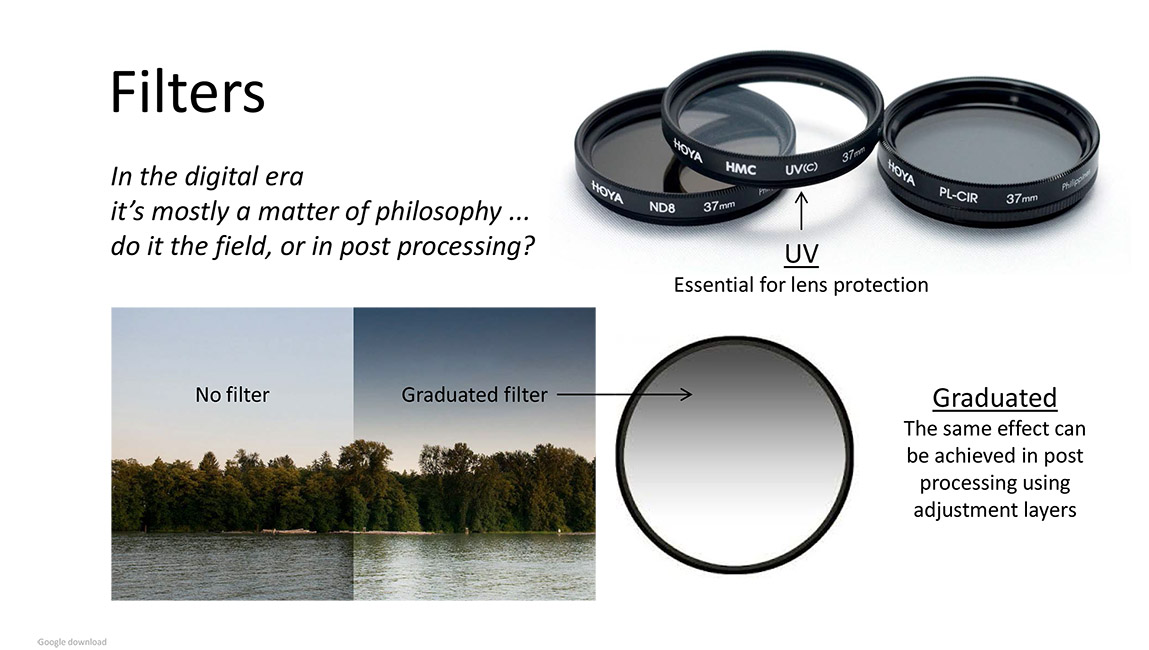

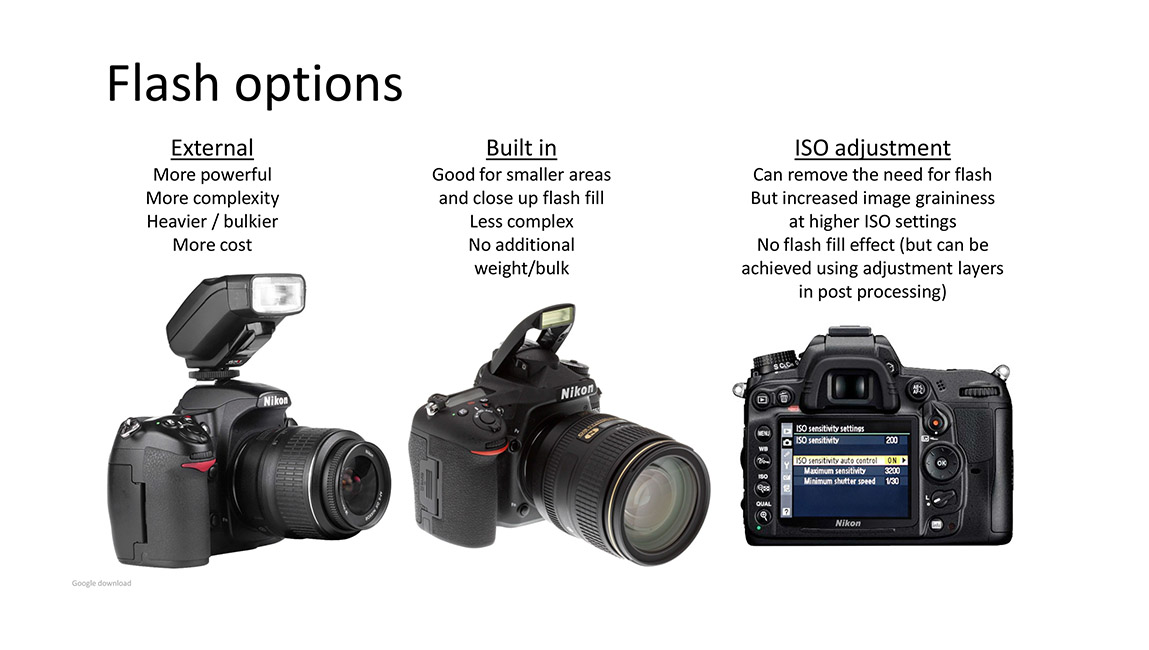

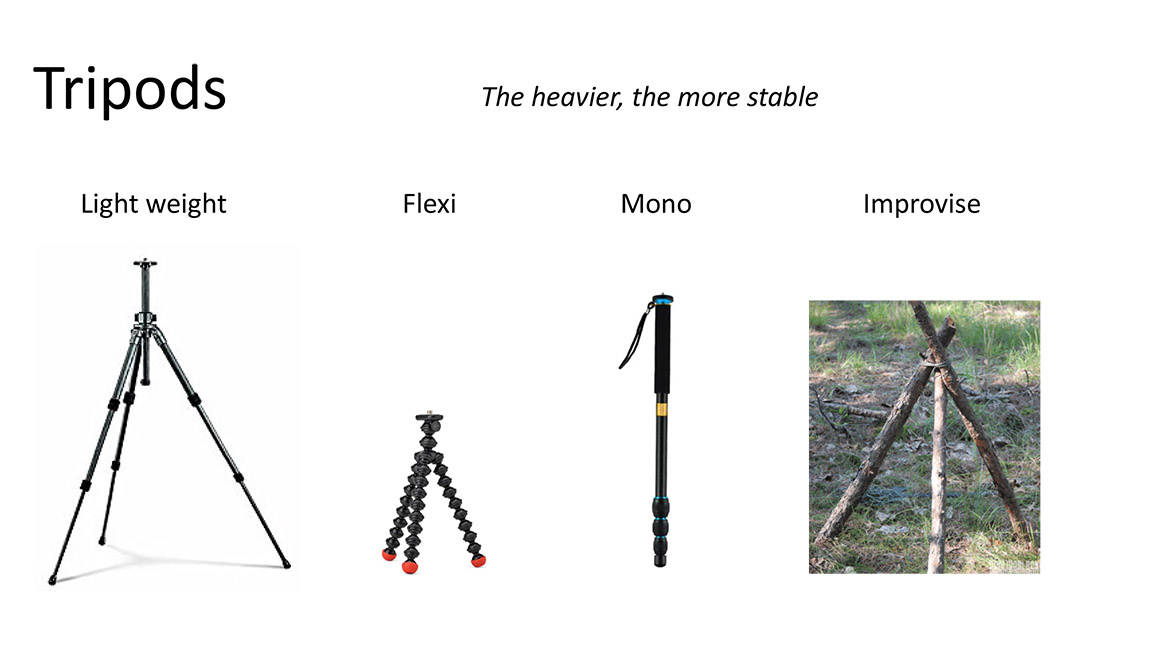

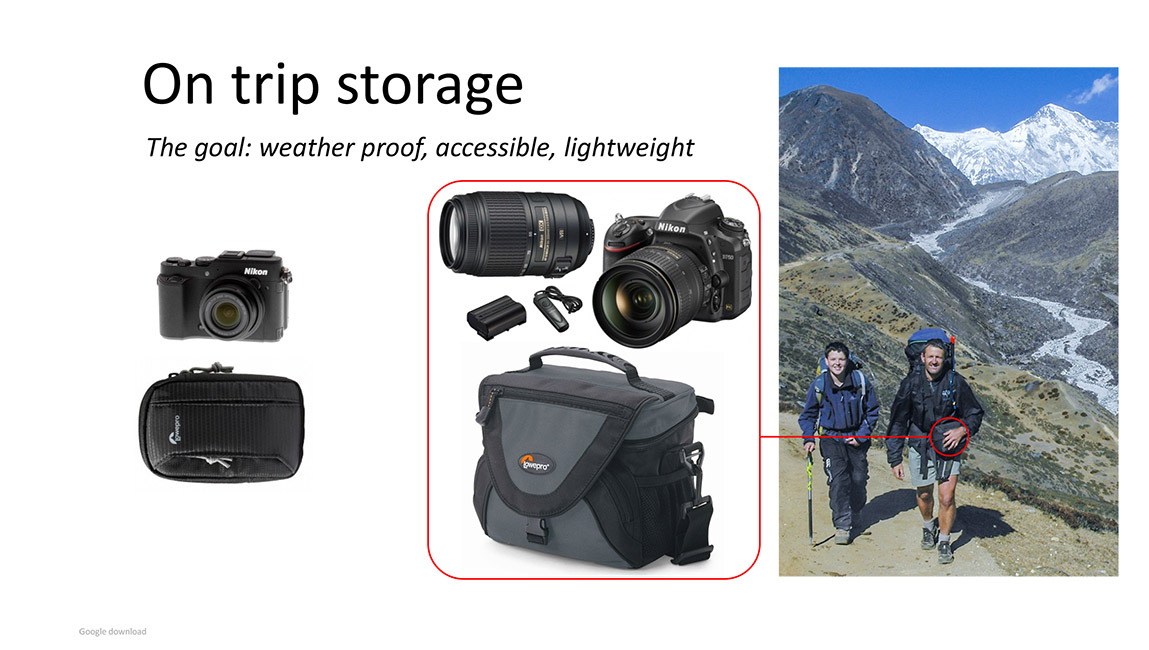
My D750 kit can be carried fairly compactly, but it weighs about 3.2kgs and gets annoying and dangerous dangling around on steep terrain. And if it's stowed in my back pack I'm less likely to use it at all - might as well leave it at home! That's where my compact, lightweight, mirrorless P7800 comes in. It just sits strapped to the front cross hitch of my backpack - right there when I want it, but I can still see my crampons

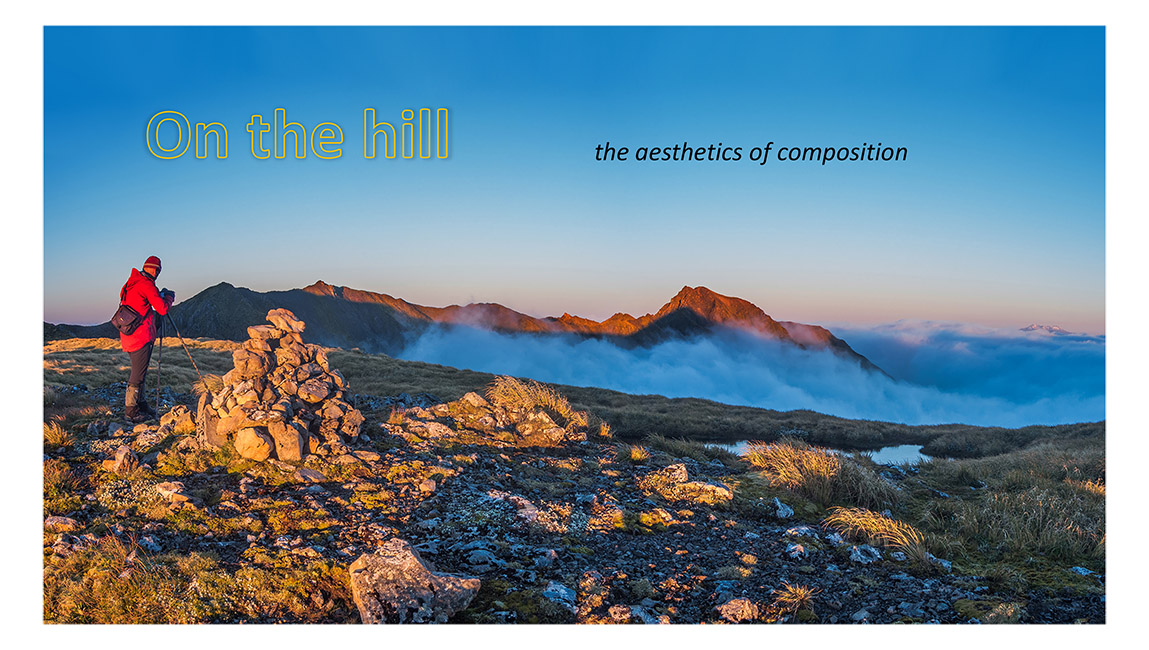
Now armed with the right gear, plus the knowledge of how to use it manually, let's take a look at some important considerations when you're actually out there composing photos

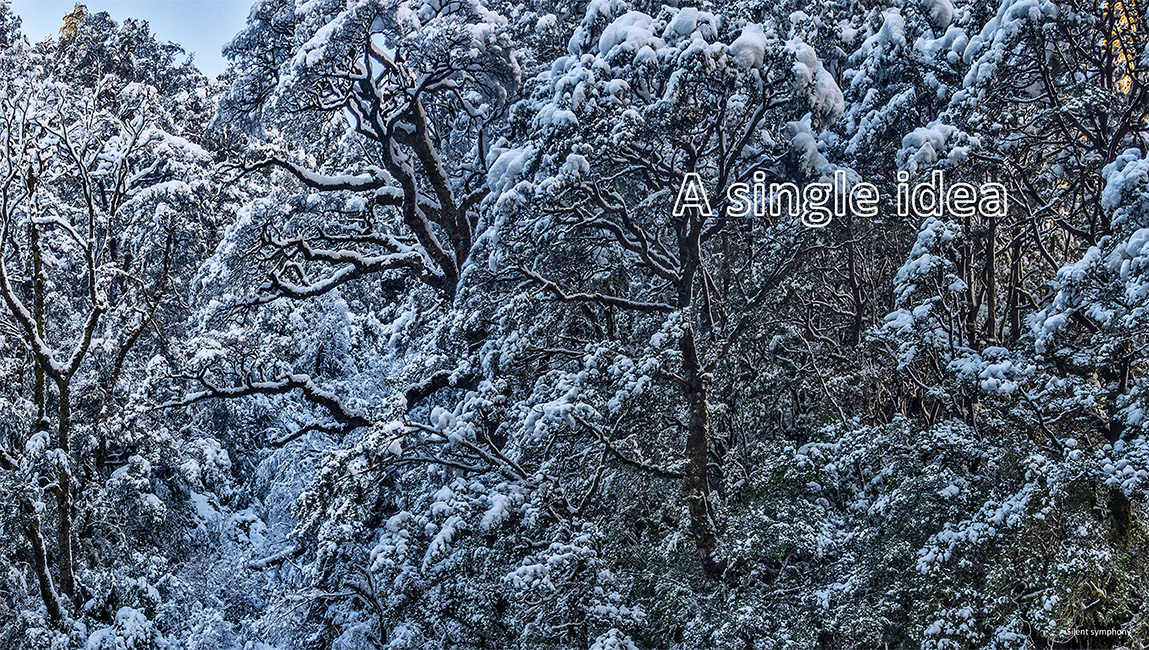
Big landscapes can be so lovely that we're tempted to try to capture it all in a single frame - not always the route to a great image. Often less is more. Focusing on a detail rather than the whole can be much more compelling. And working selectively with aspects of a scene can produce a much more creative and aesthetically pleasing image. This one is about the 'silent symphony'

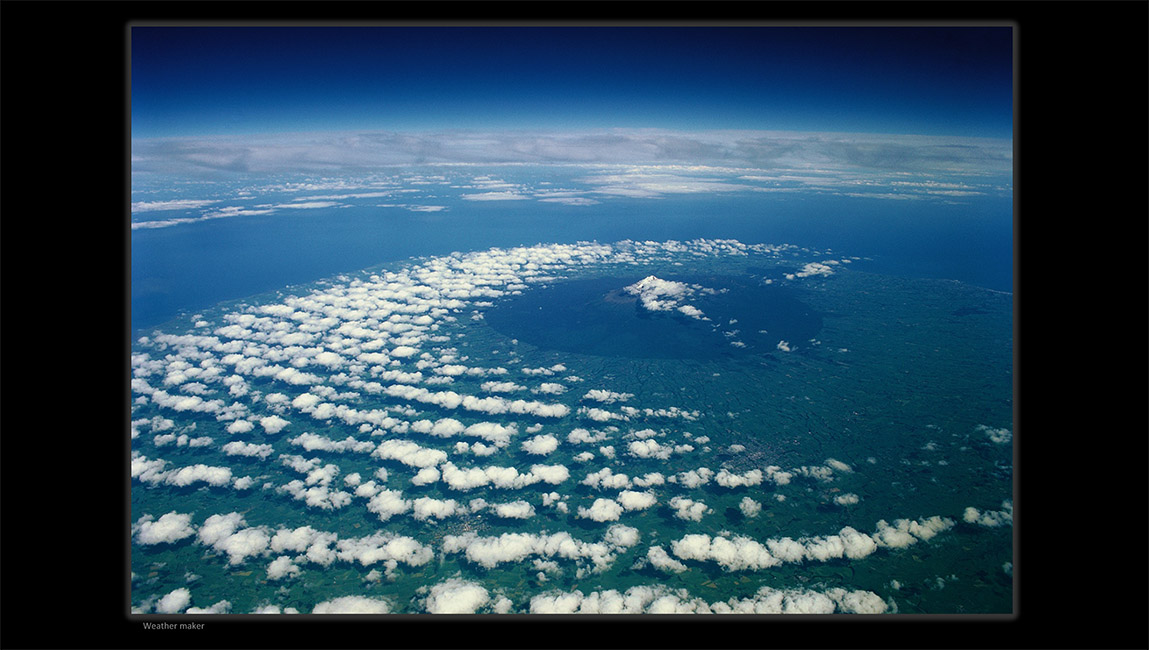
Here is 'The weather maker'

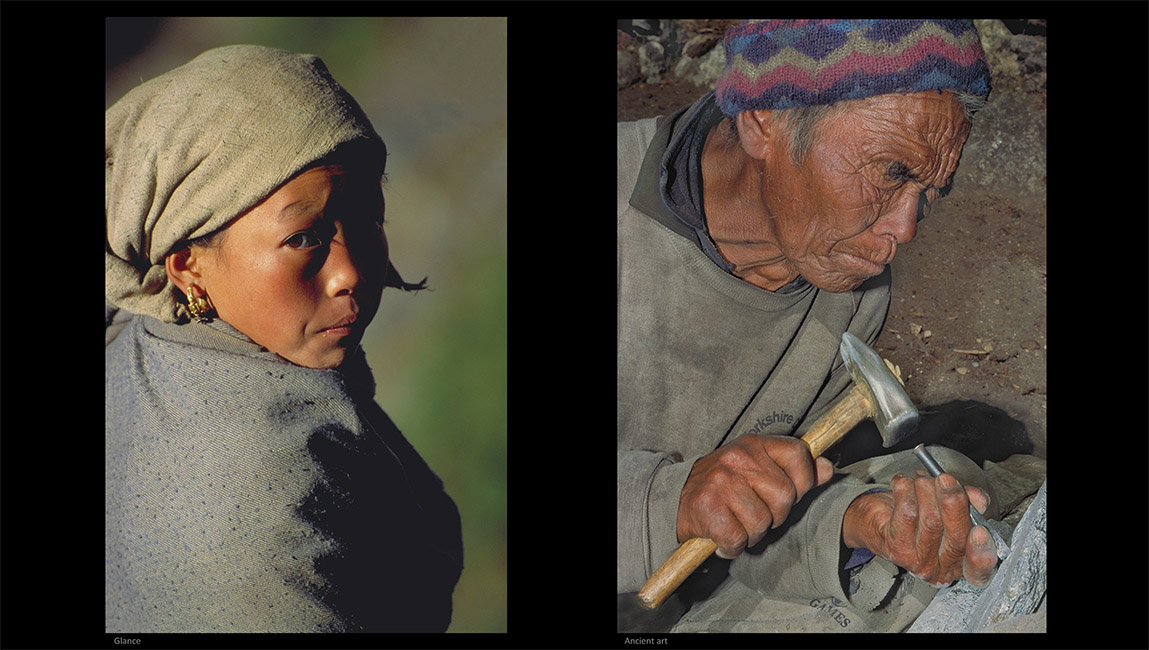
'Glance' and 'Ancient art'

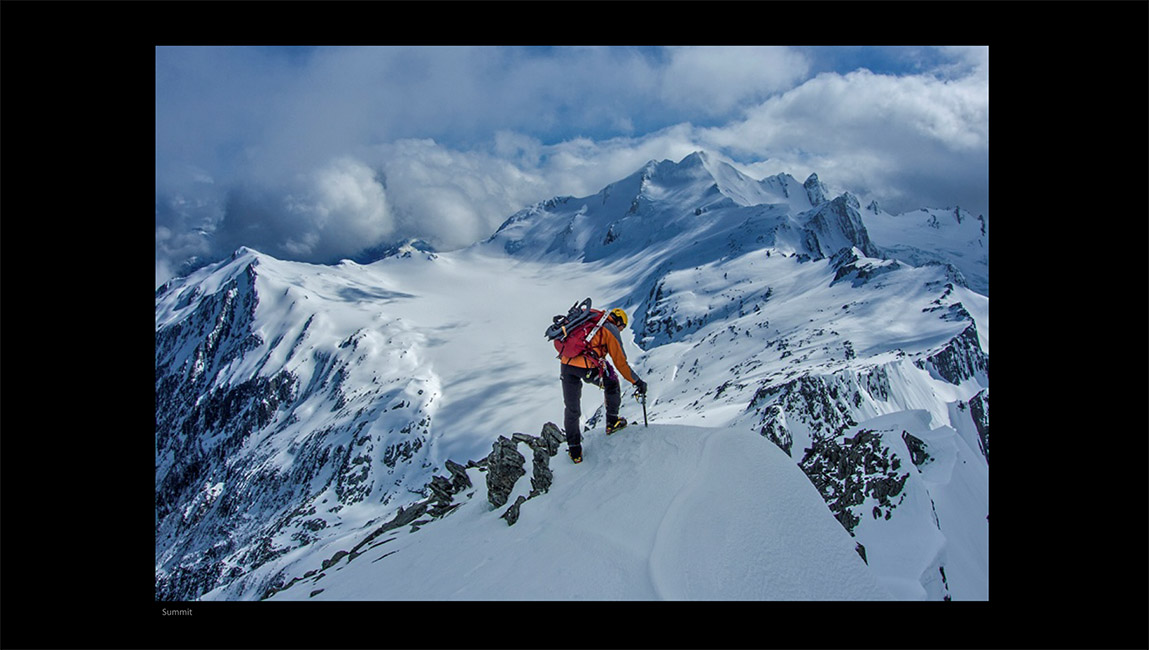
'Summit'

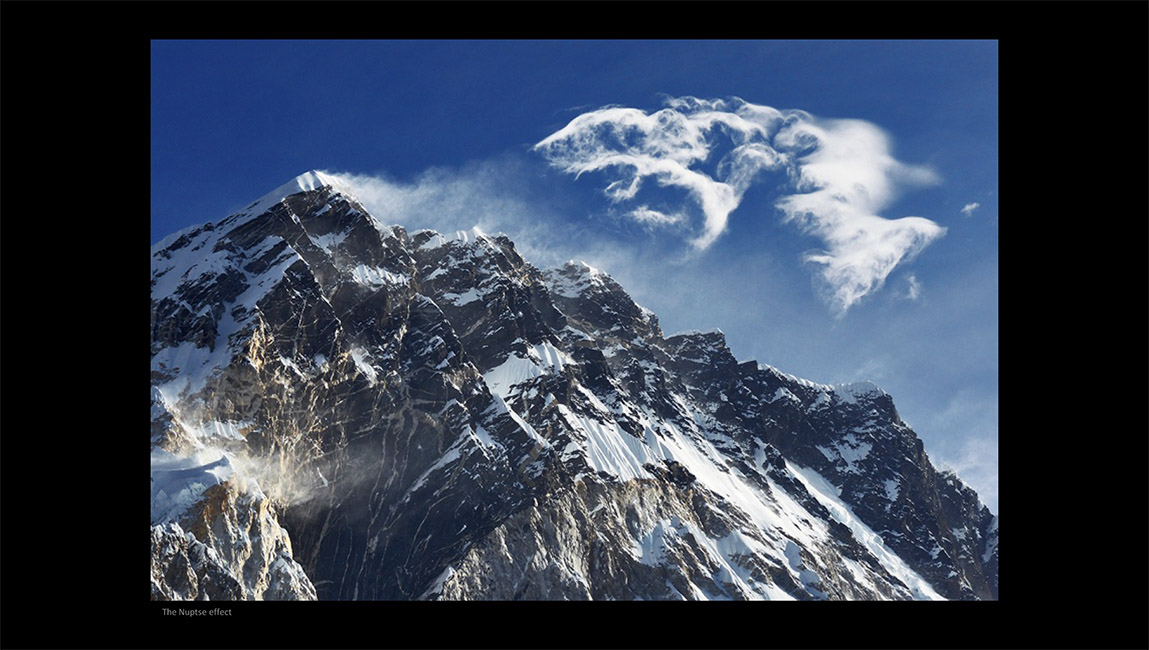
'The Nuptse effect'

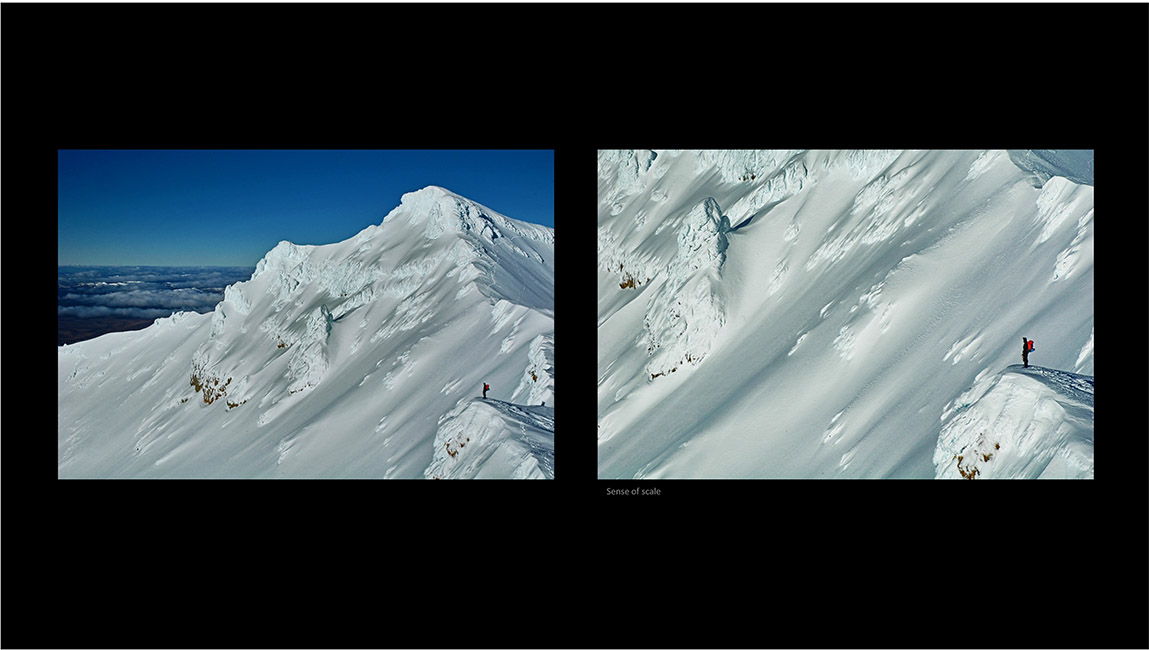
Sometimes an impressive wide landscape can become even more powerful by zooming or cropping in

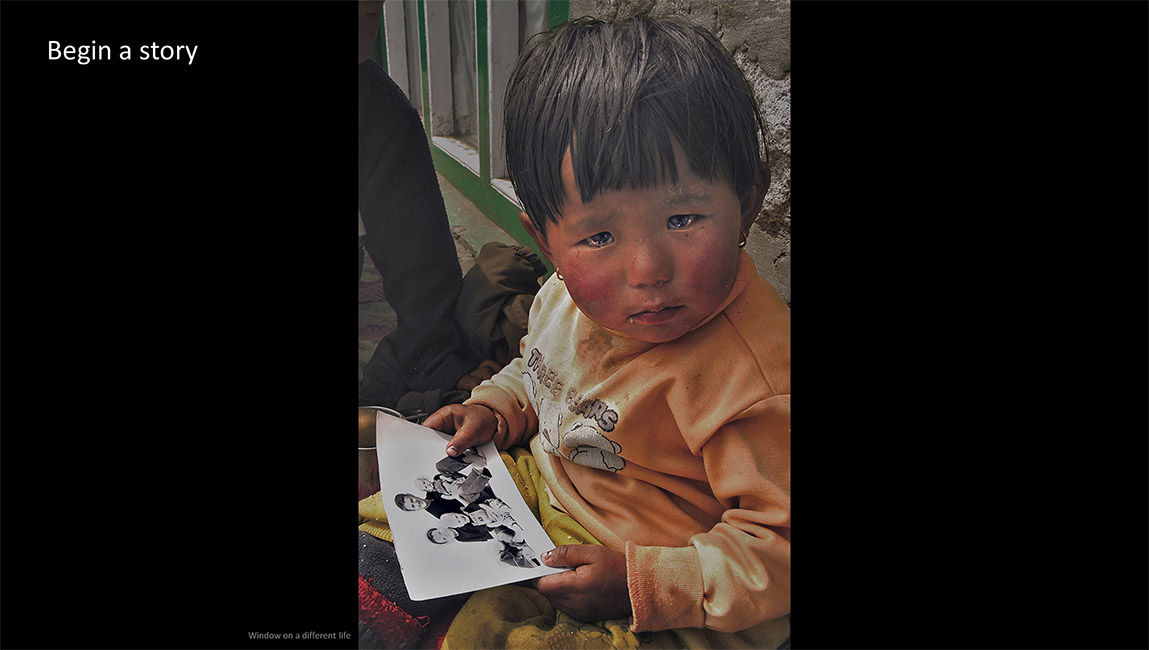
This little Sherpa boy was having a grizzle so, to distract him, I passed him a picture of my three boys and I. It worked. As he looked back and forth between me and the picture, it occurred that he looked through a 'Window on a different life'

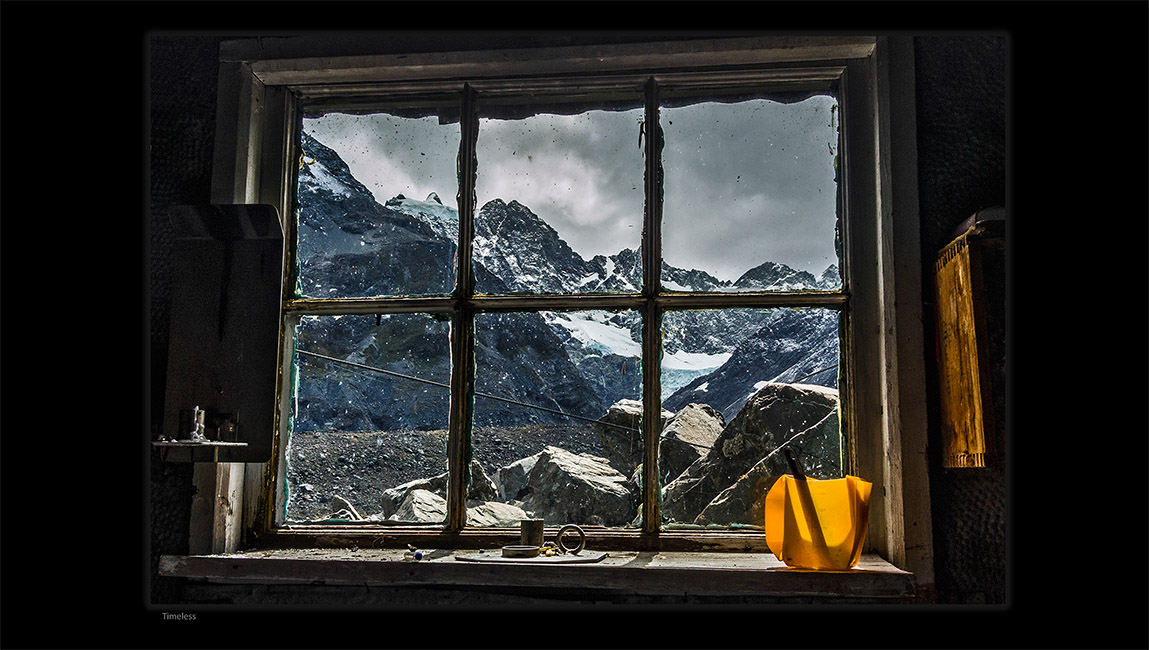
A view out the window of Godley Hut that would have appeared the same fifty years ago - 'Timeless'

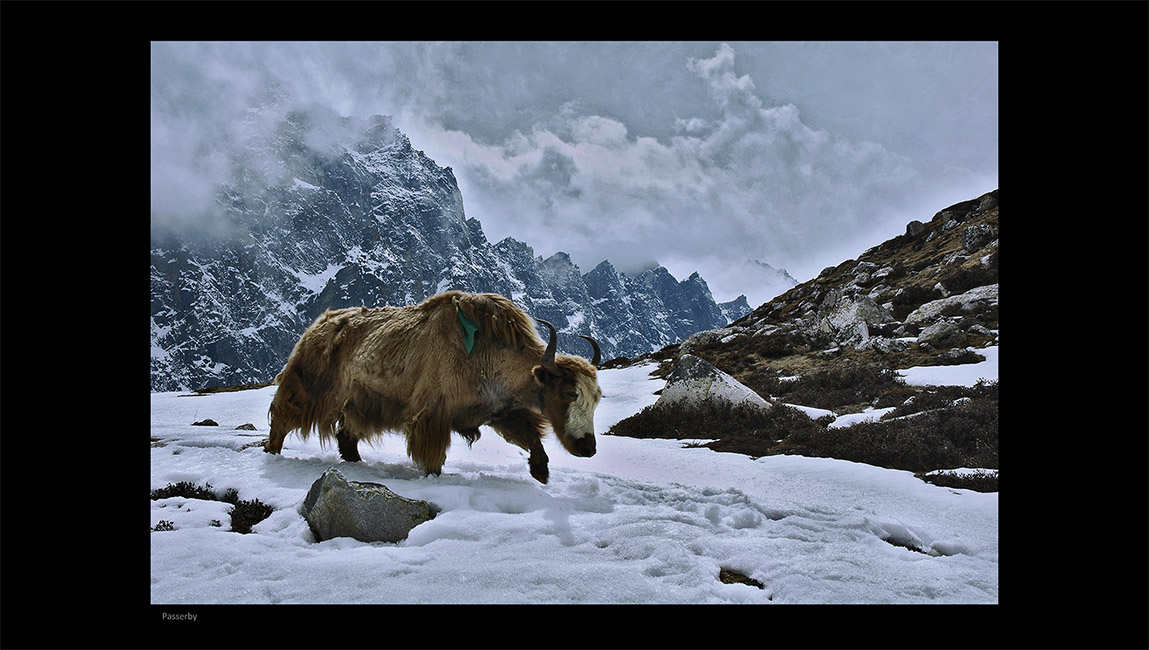
He appeared out of the gloom, alone, but walking with purpose towards the base of Cho Oyu. I bet if he could talk he would have some stories to tell. But in his silence he was 'The passerby'

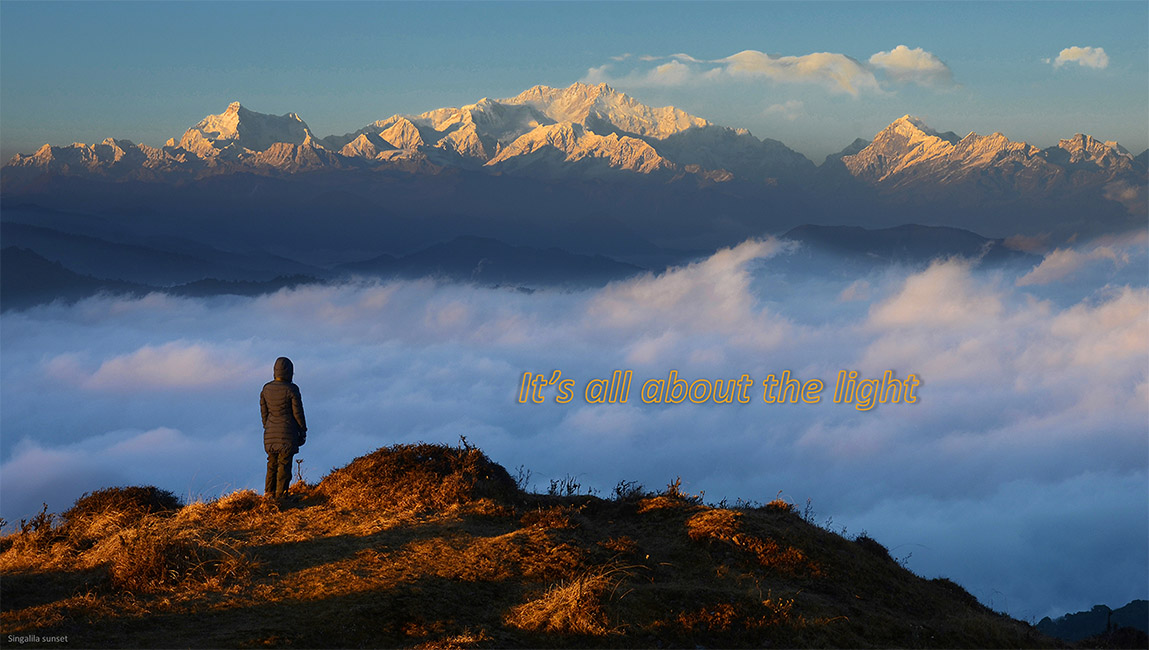
YES! The outdoors are at their most lovely around dawn and dusk. That's when you're most likely to capture the images that make people go oooooohh and aaahhhh

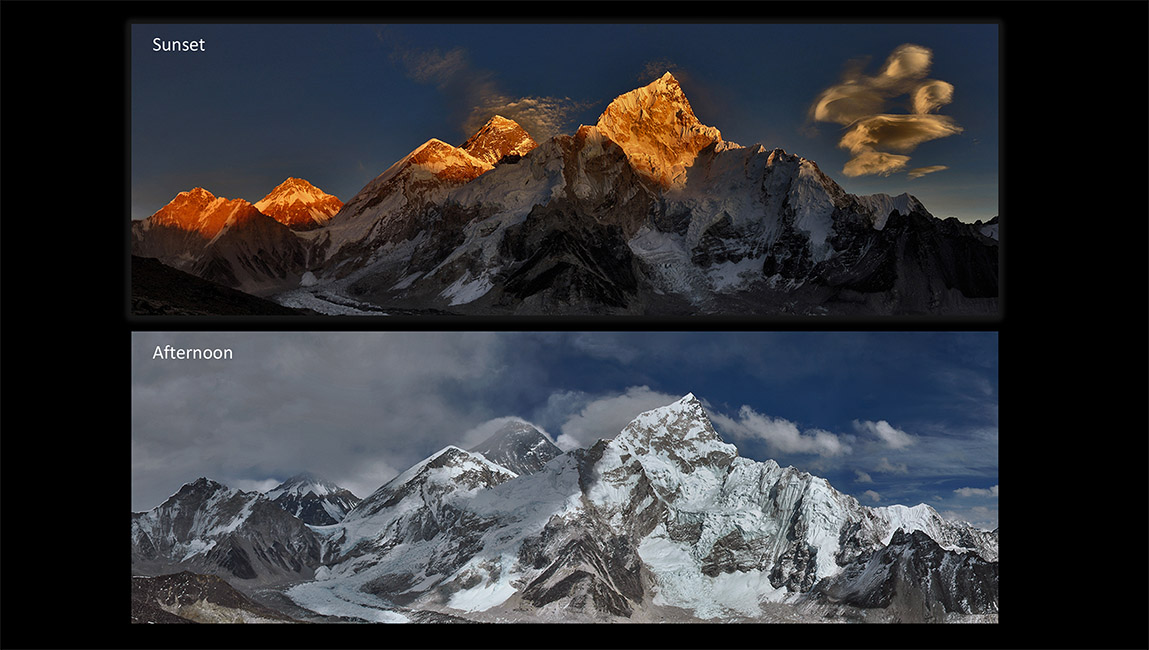
Mount Everest Base Camp on the Khumbu Glacier - a stunning location, no matter what time of day - but sunset beats afternoon

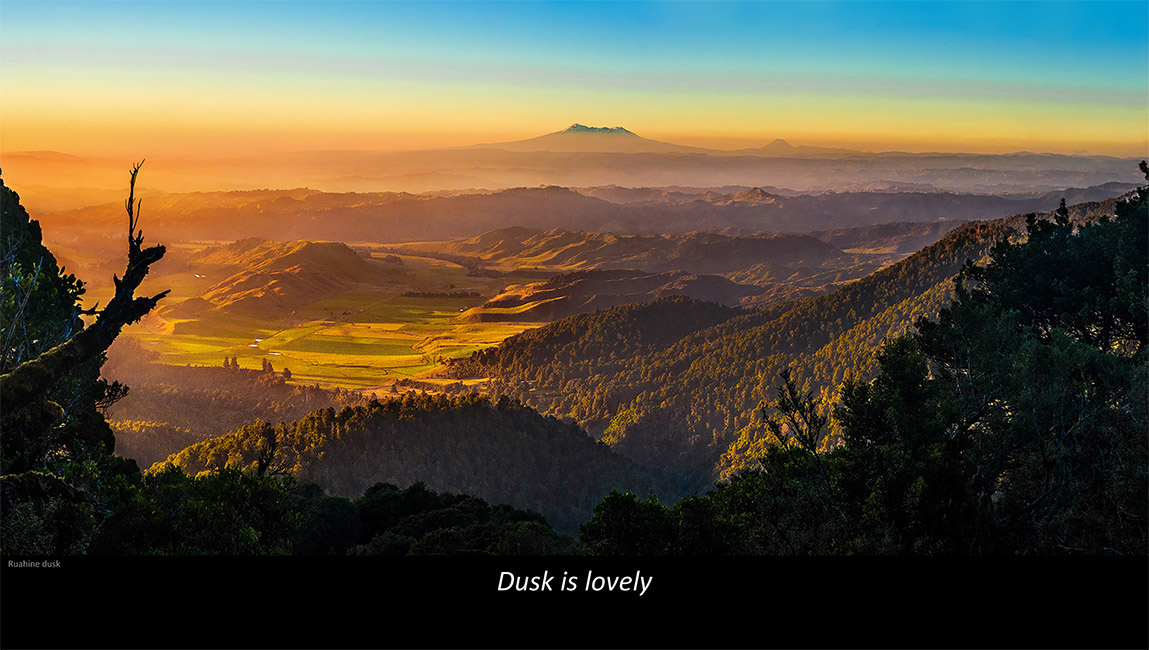

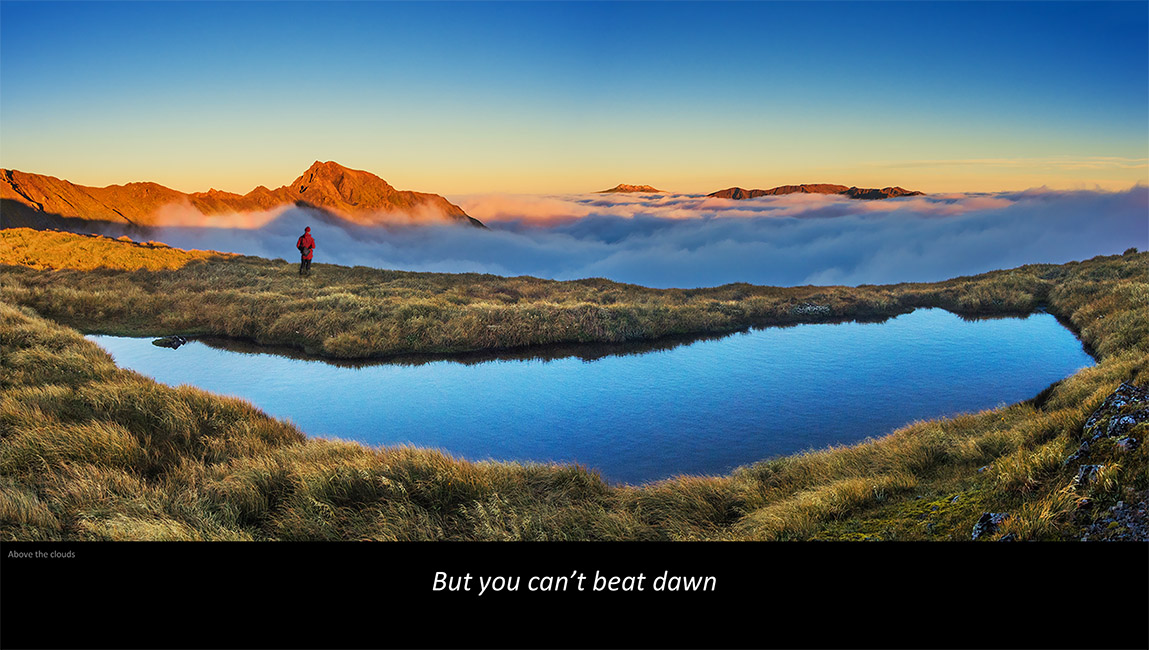
Wakey wakey! I find that dawn tends to last longer, with more subtle hues leading up to the point when the sun appears above the horizon. Then you get a second sitting as the much more direct light changes the whole picture

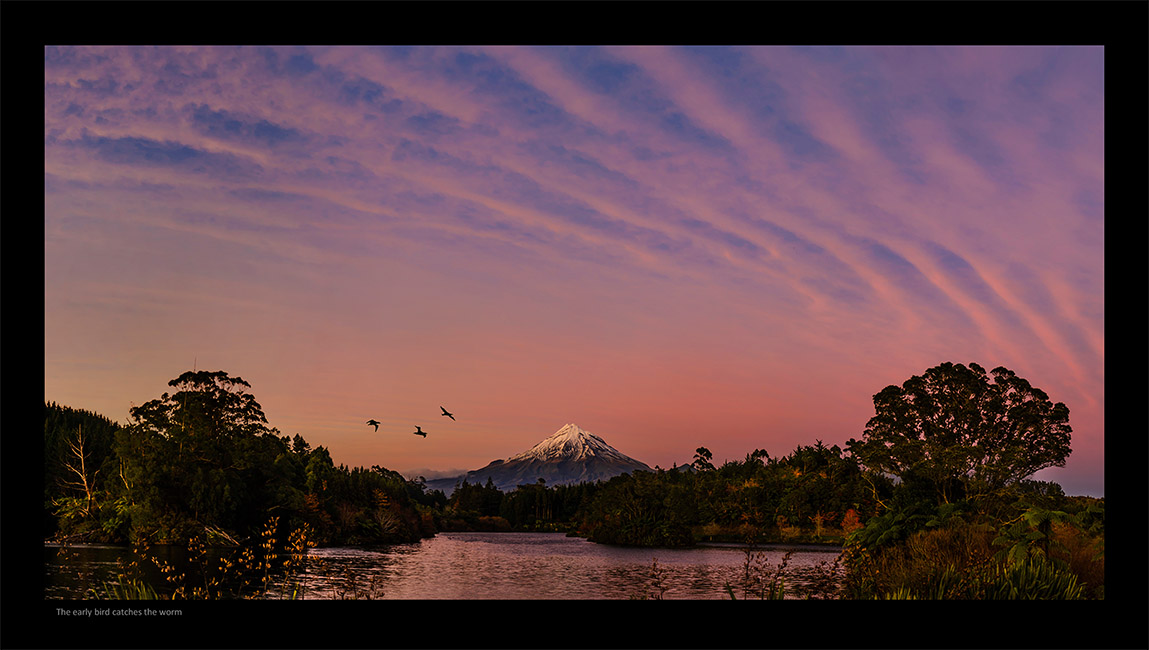

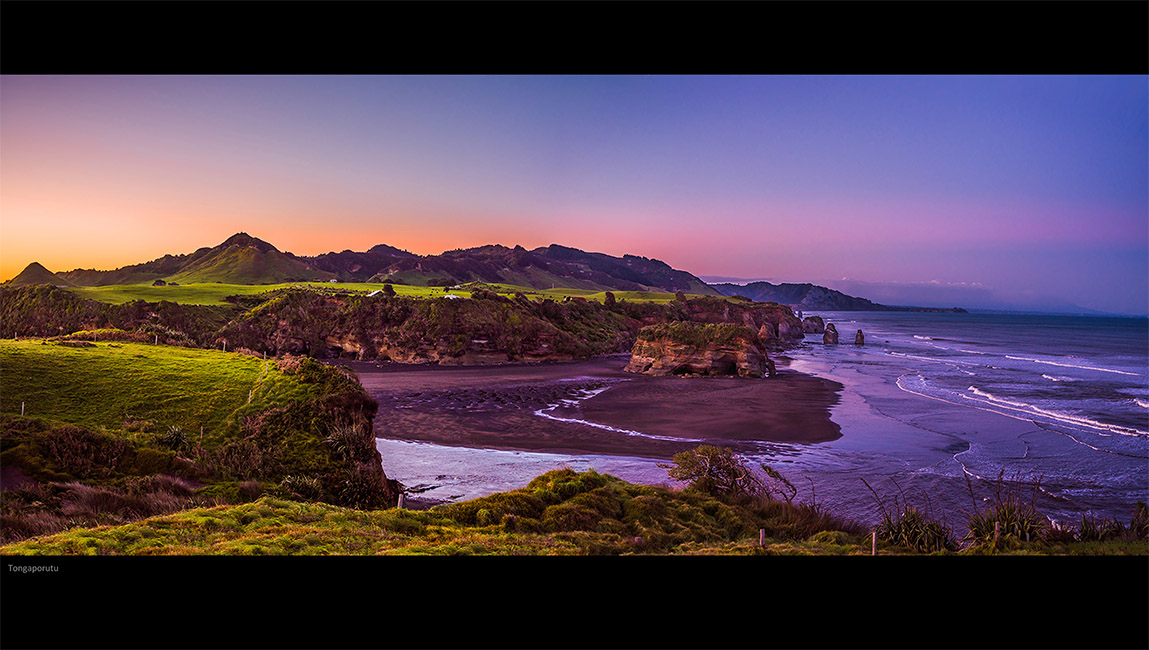

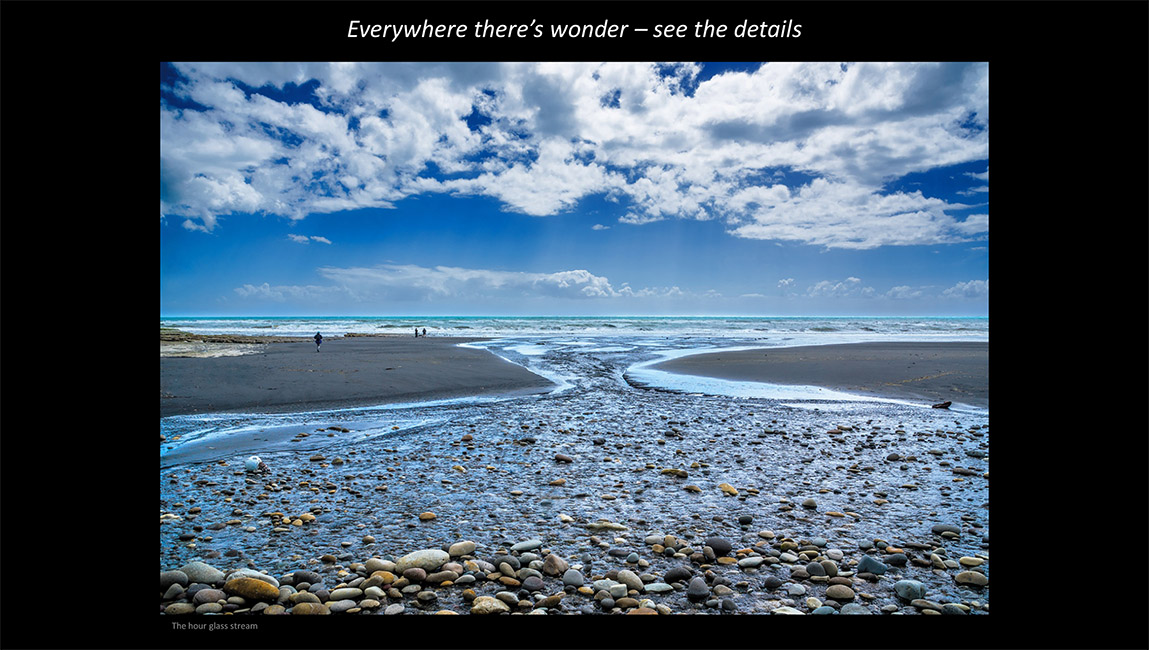
Here a flat horizon is transformed by the texture above in the clouds and below in the river stones. The hourglass shape of the river leads in and then out again to the horizon

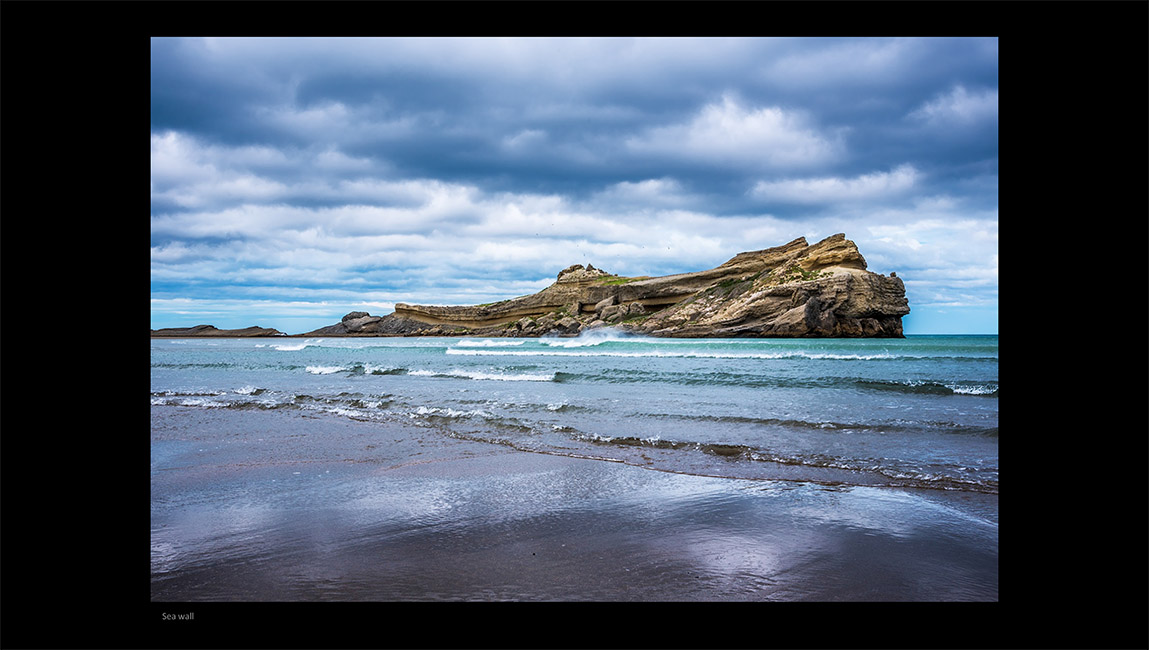

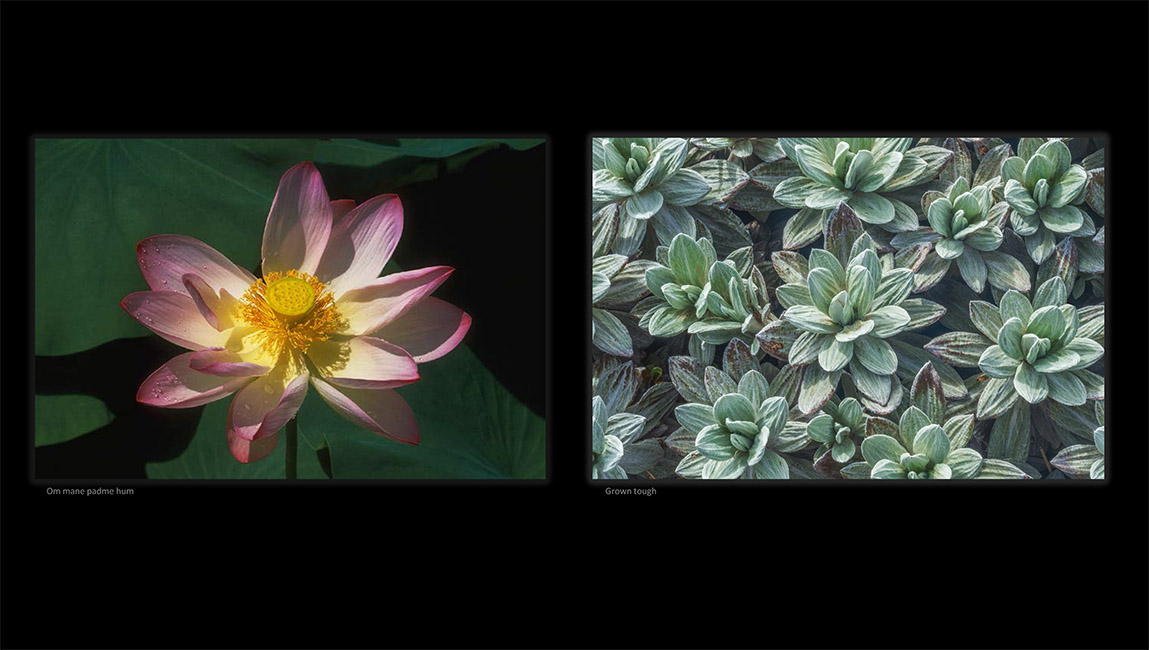
Remember to look at your feet sometimes. The trick is to be focused. Resist the temptation to try to capture everything in one shot

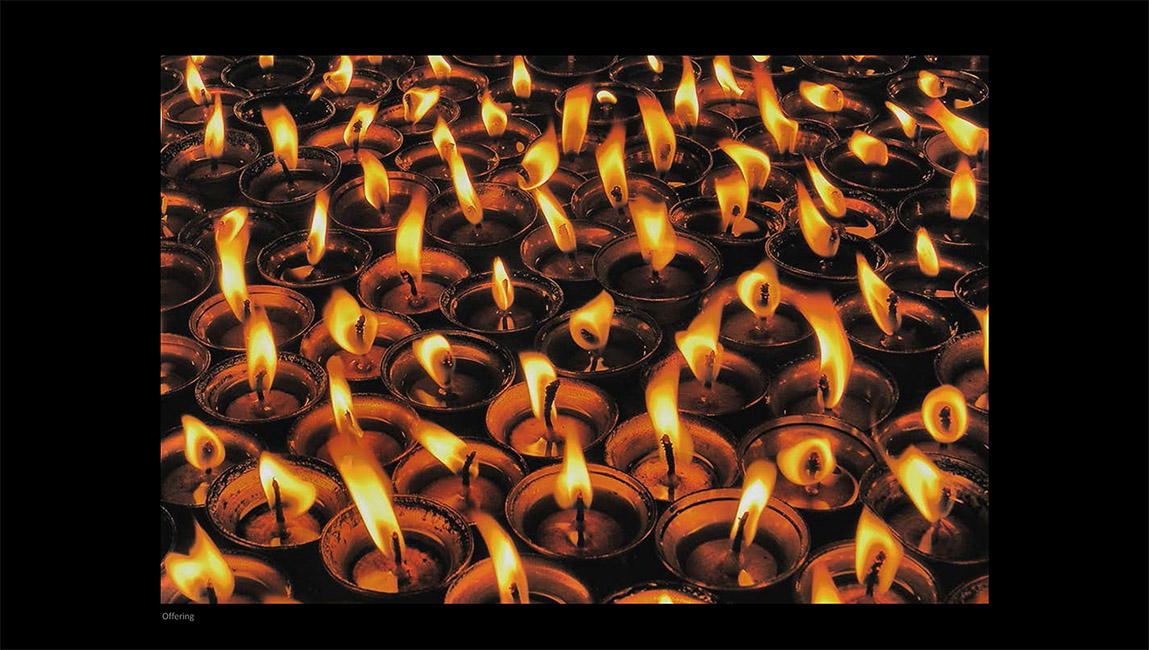

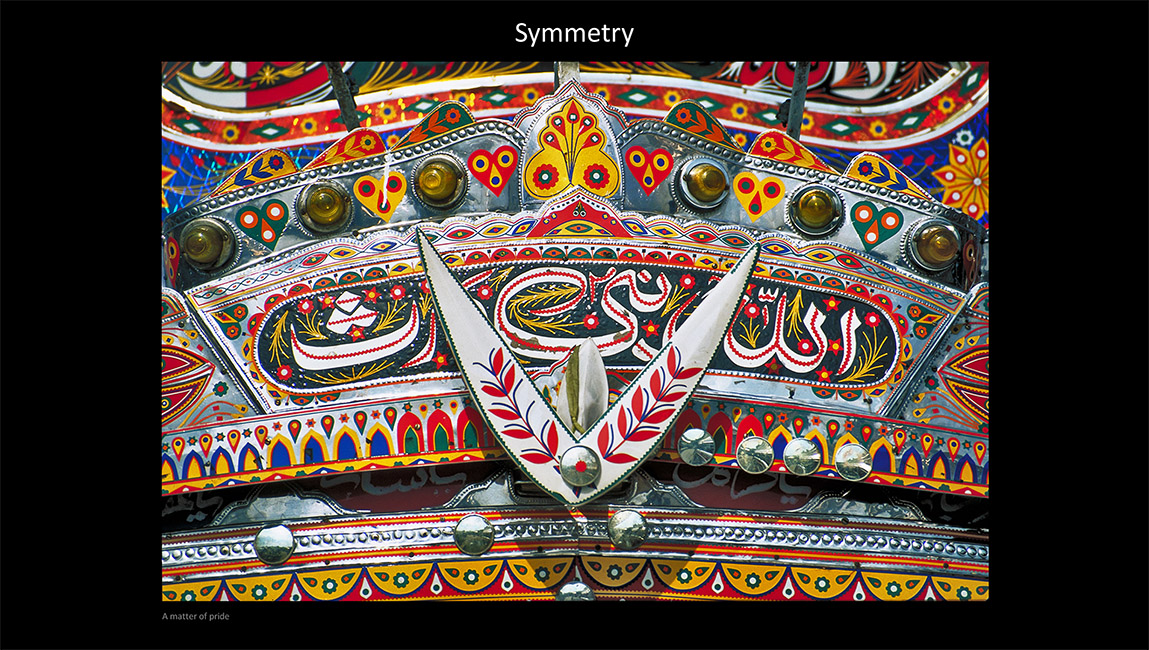
Symmetry can be a powerful visual device, giving order to chaos

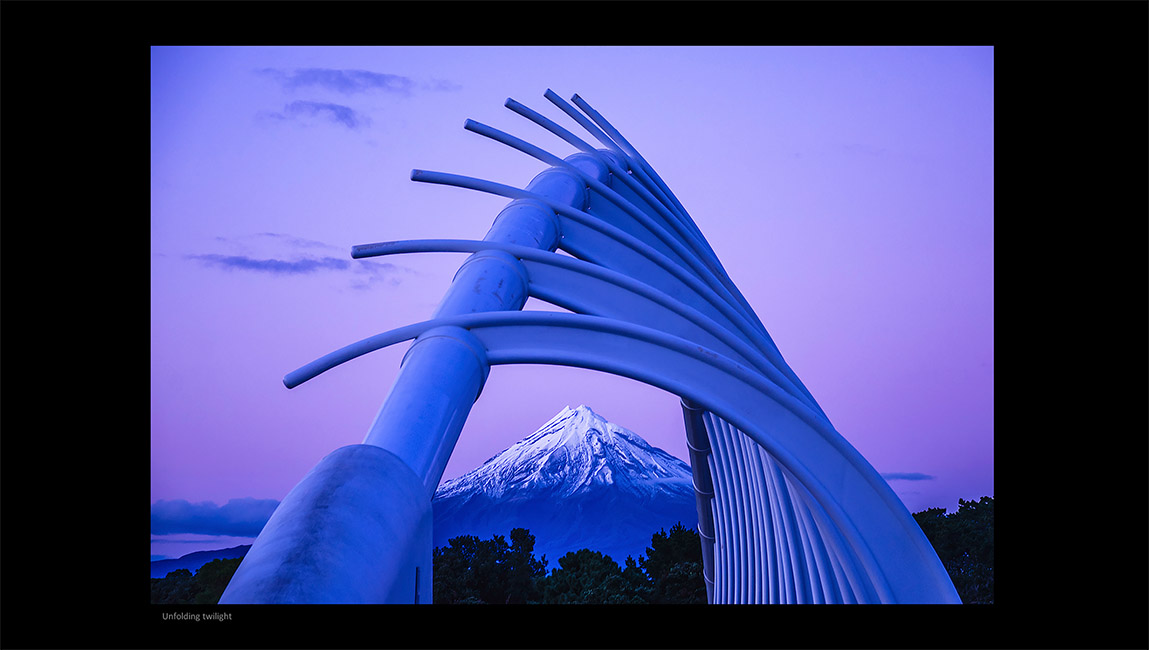
Or adding an additional dimension

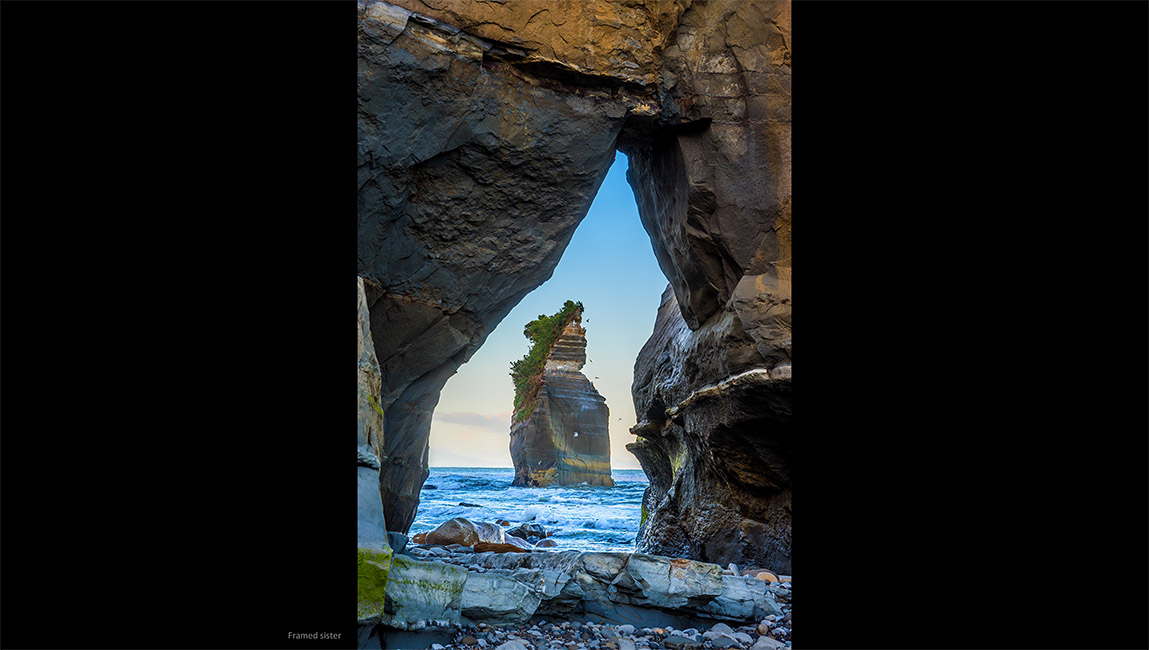
Symmetry can be used when less than symmetrical too. Here the shape of the tunnel is roughly mirrored by the distant tower. The two together convey a natural symmetry

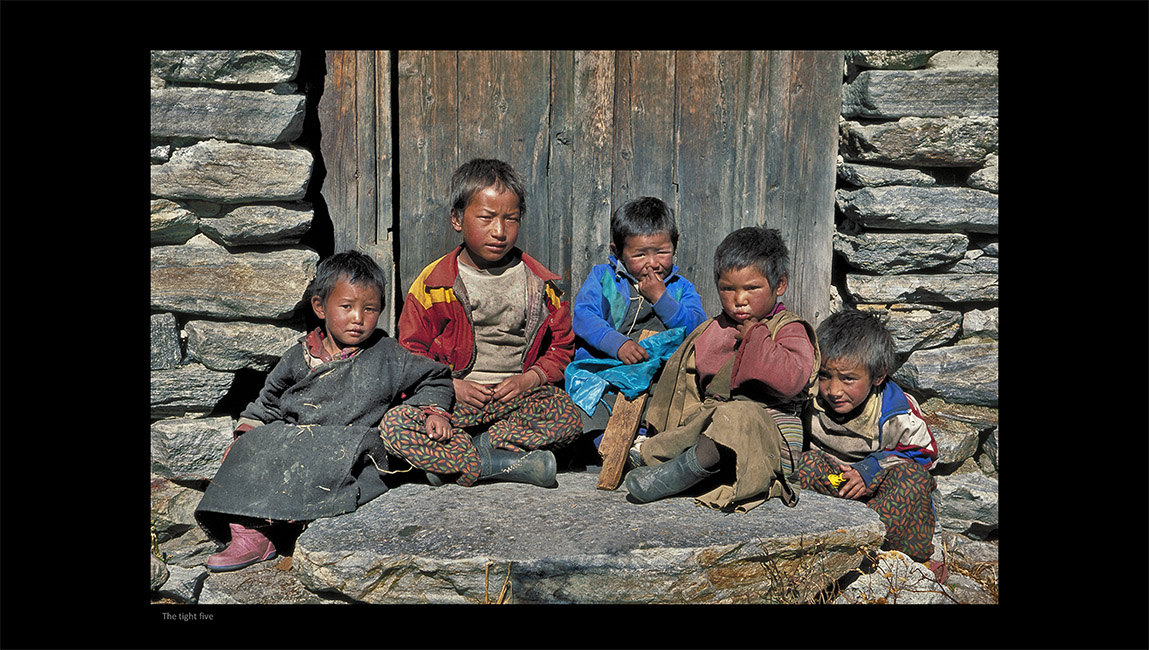
This group of Nepalese youngsters instinctively arranged themselves in this loosely symmetrical pose around the huge slab

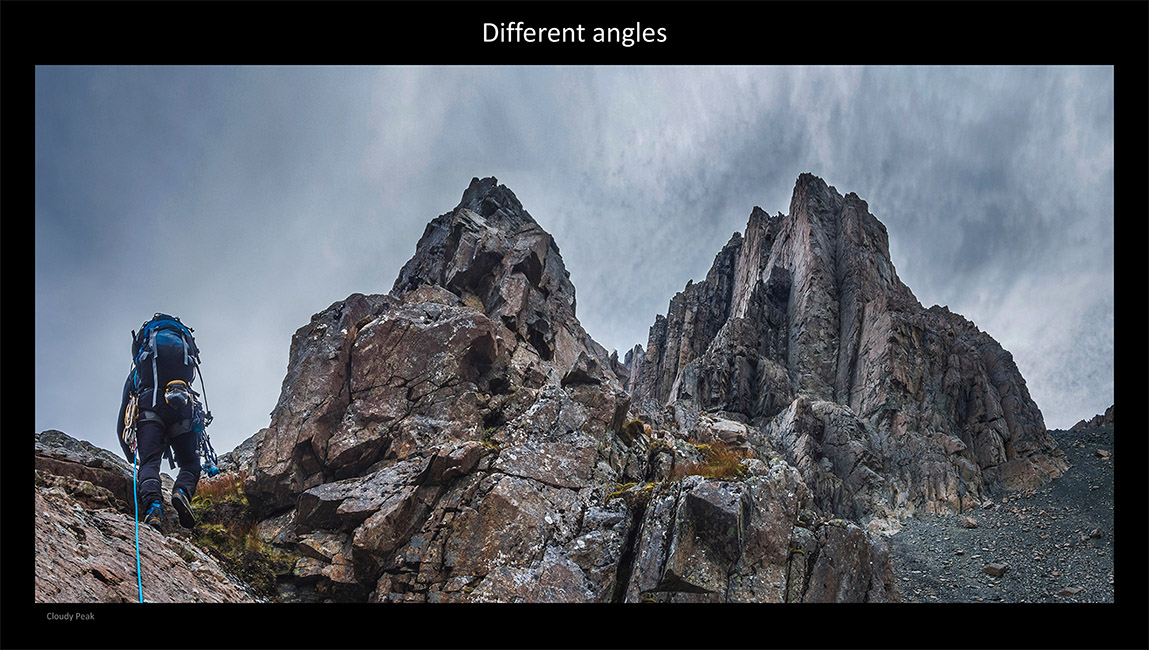
By changing the angle you can increase the drama

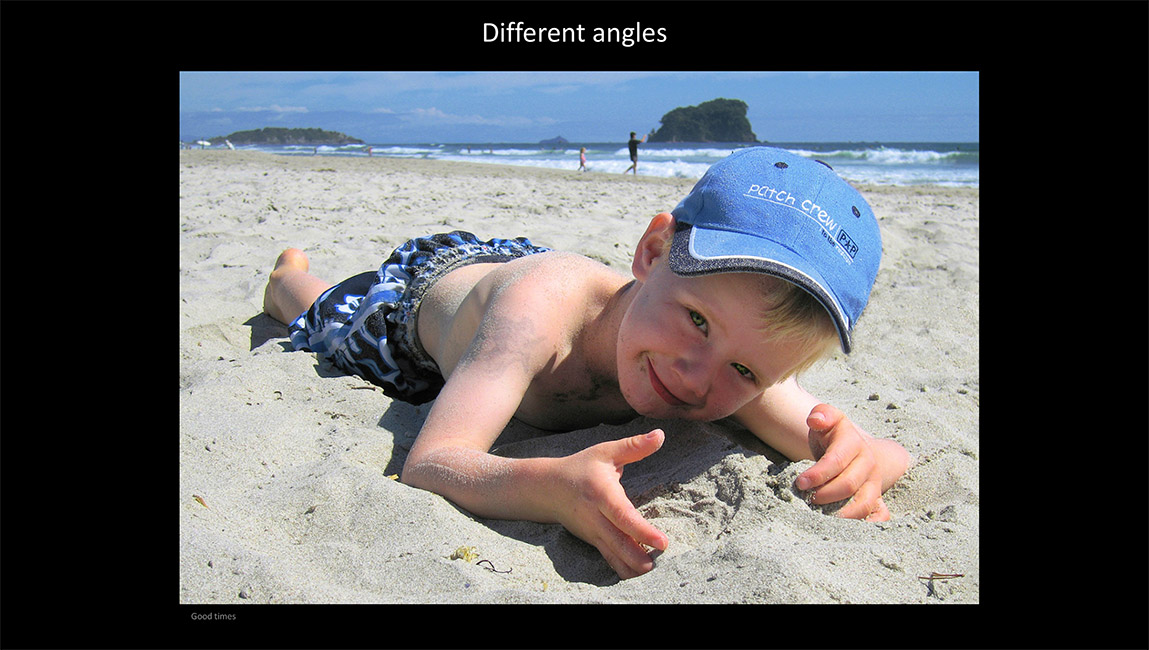
On my stomach I could get up close and personal with my sun bathing son

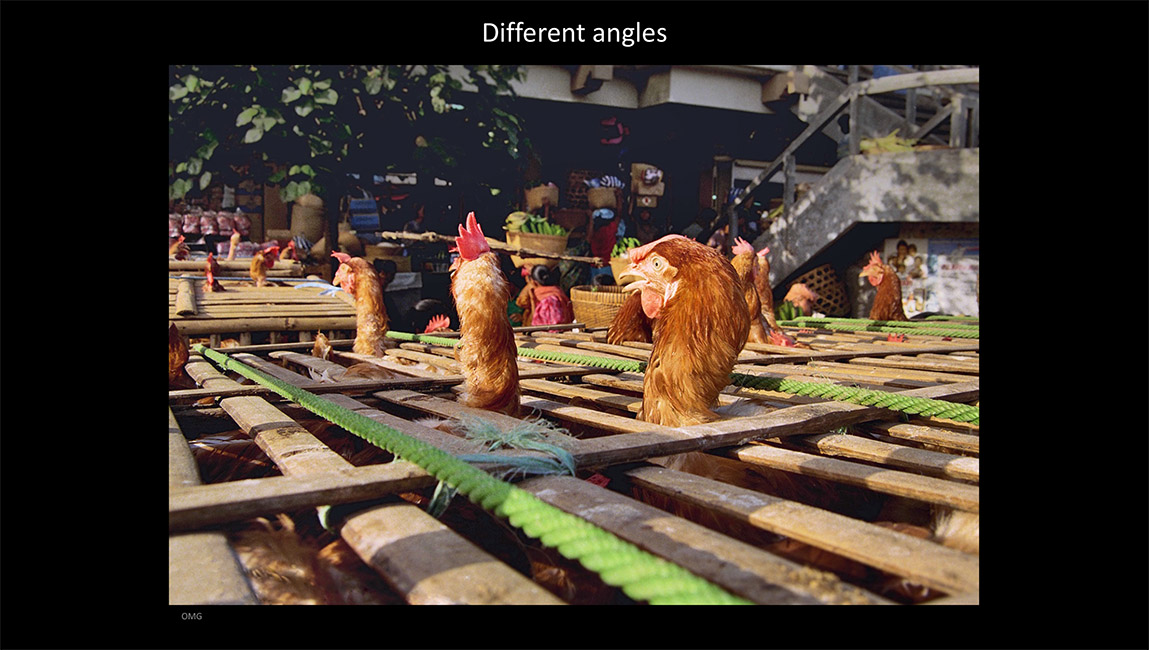
This behind the head, close up angle gives the viewer the same "oh my god" perspective as these hapless chickens

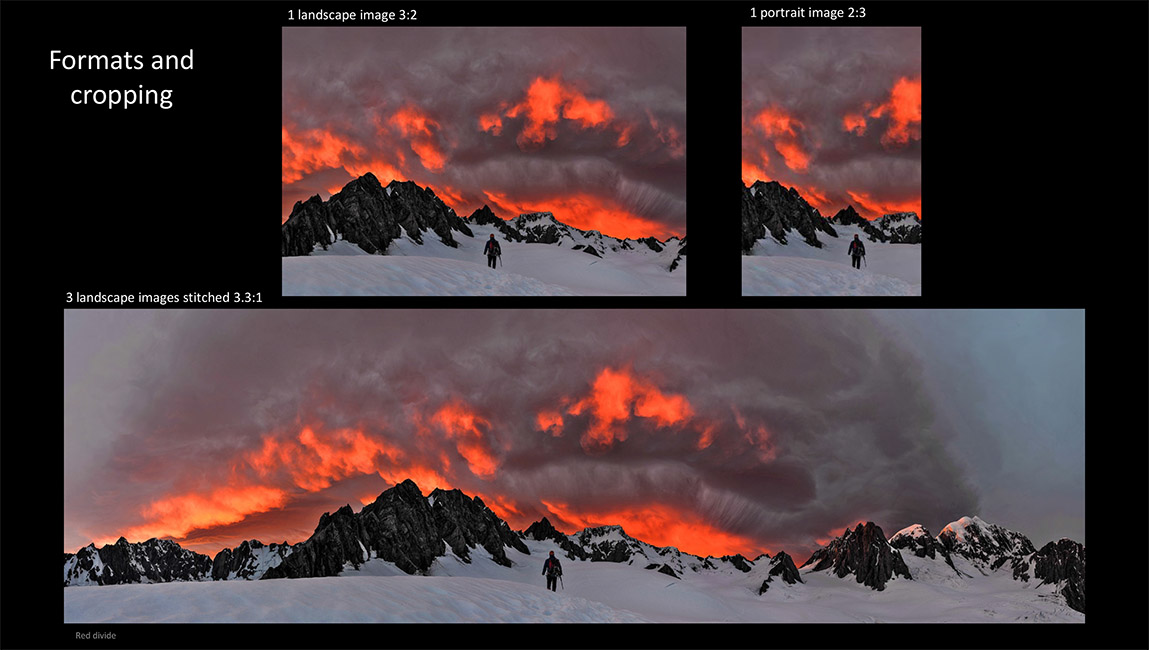
Think about which format works best for a scene - portrait, landscape or panoramic

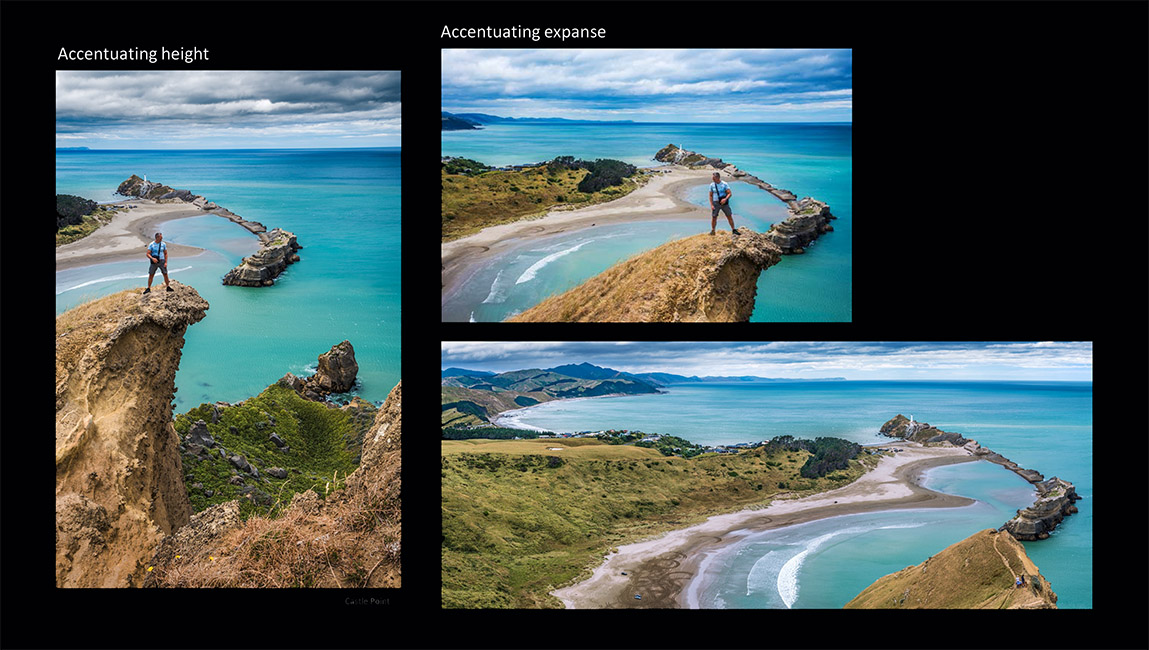
The right choice of format can accentuate an aspect of a scene

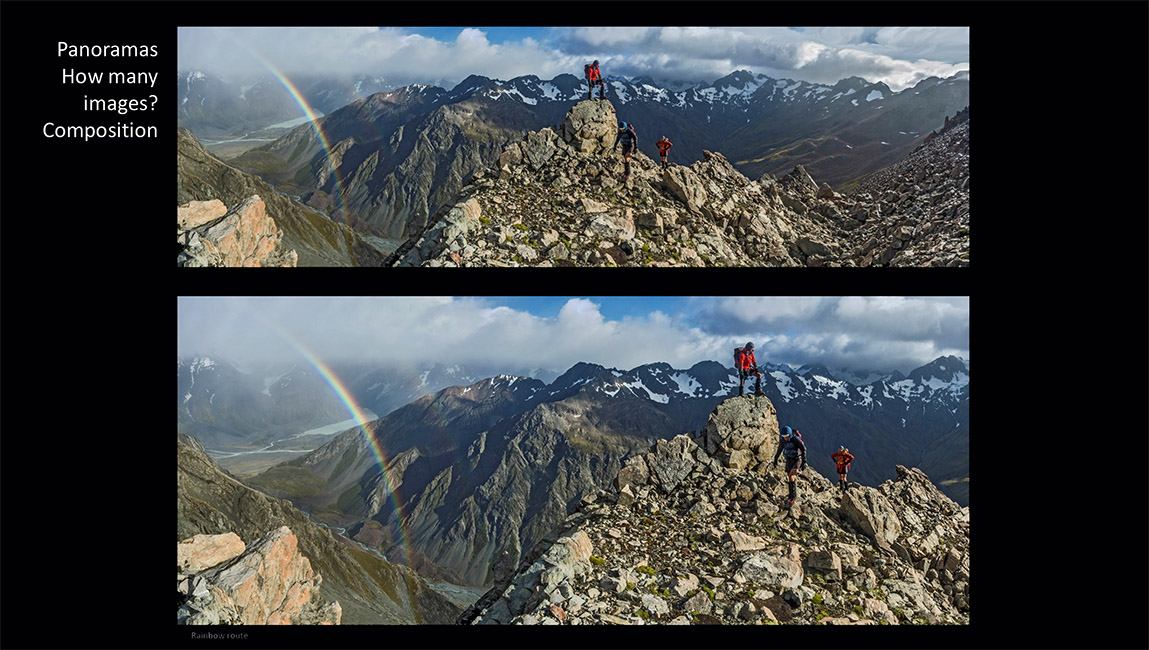
But you can over do the use of panoramas. Sometimes less is more

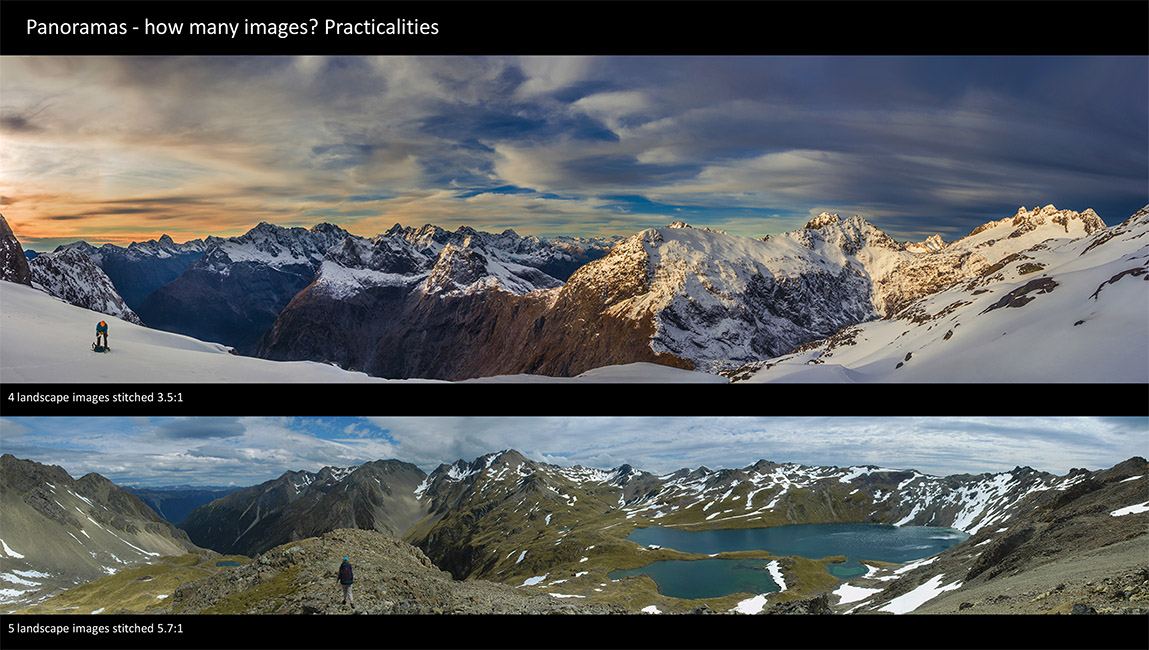
From a practical perspective, very wide panoramas are seldom used. There is no where to hang them and, when viewed small - say on a tablet or smart device, they lose their impact

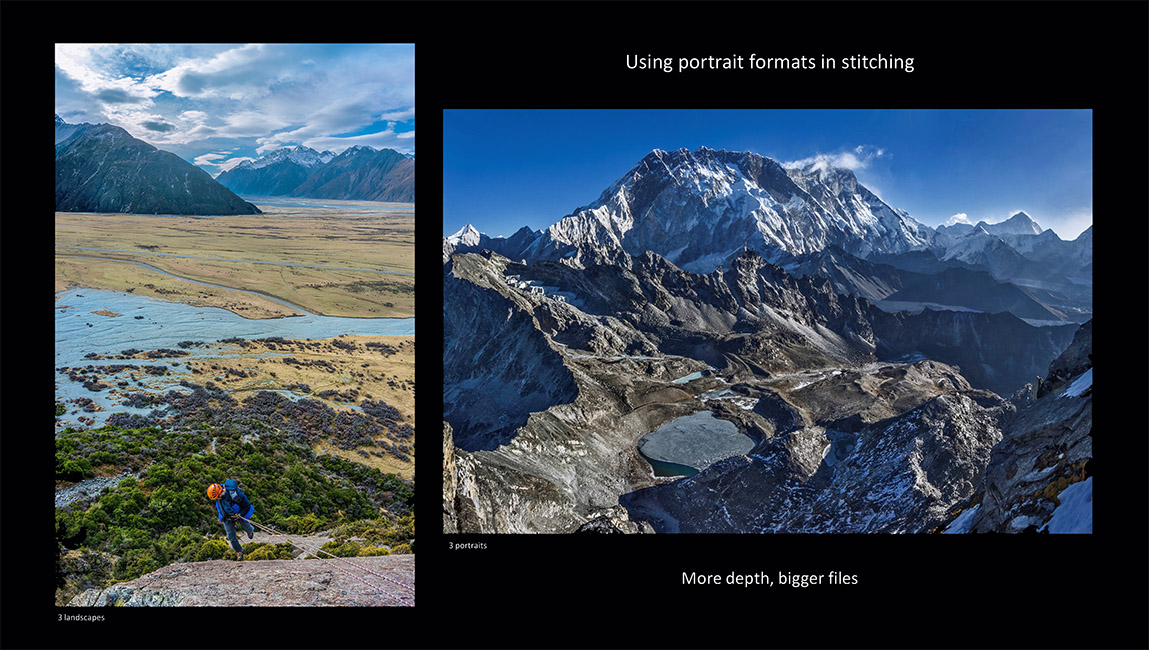
You can stitch several images together not so they form a panorama, but so that you can capture more foreground detail, or to create a larger file that can also print larger

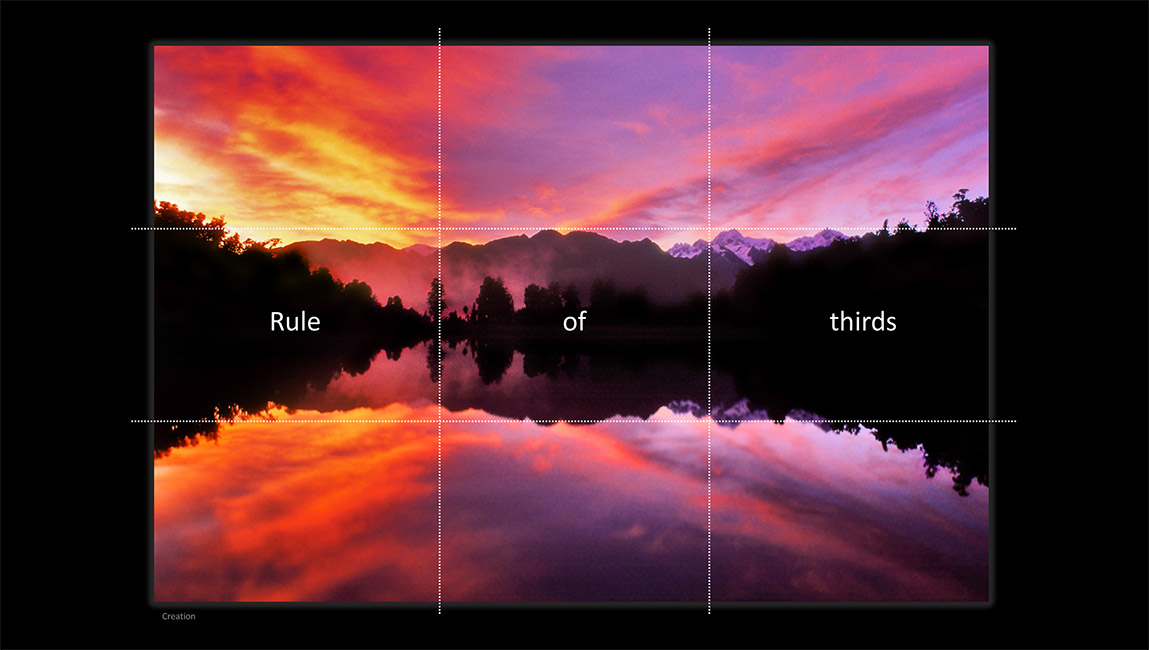
It's just more aesthetically pleasing ...

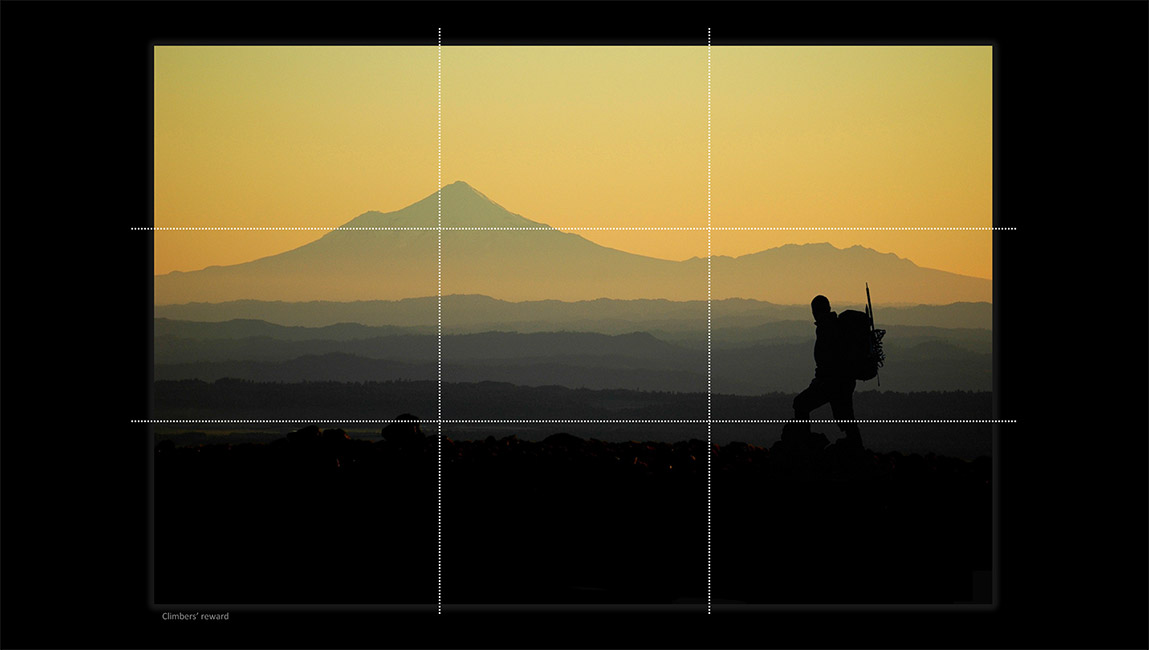

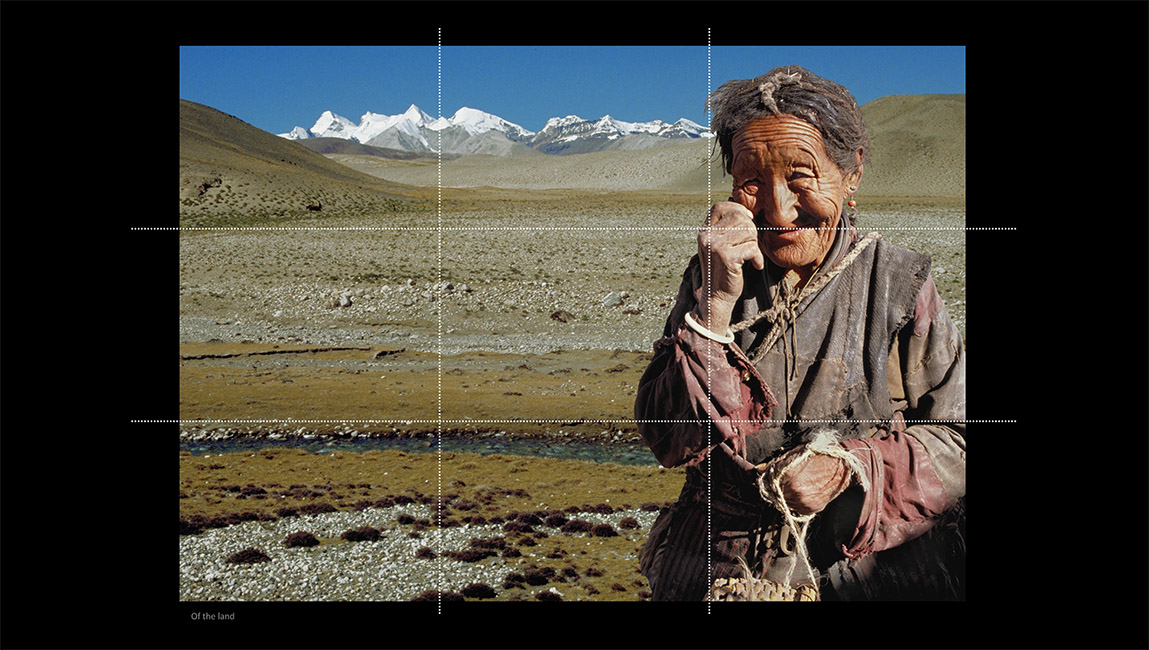

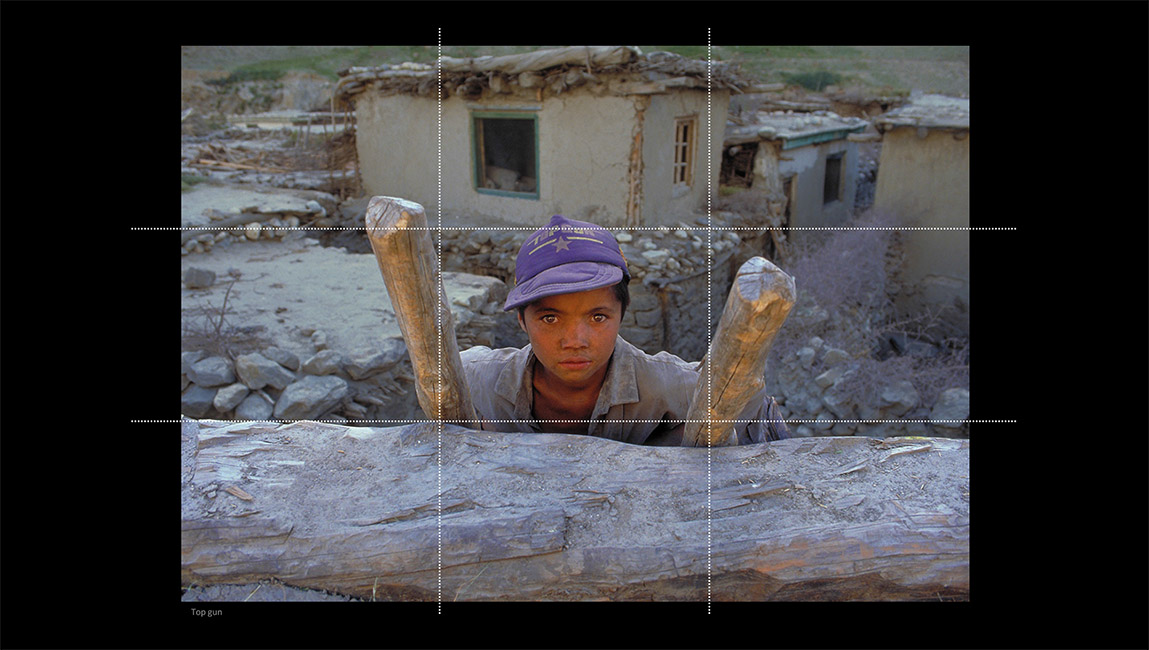
The rule of thirds applies when the subject is right in the centre, or off to one side

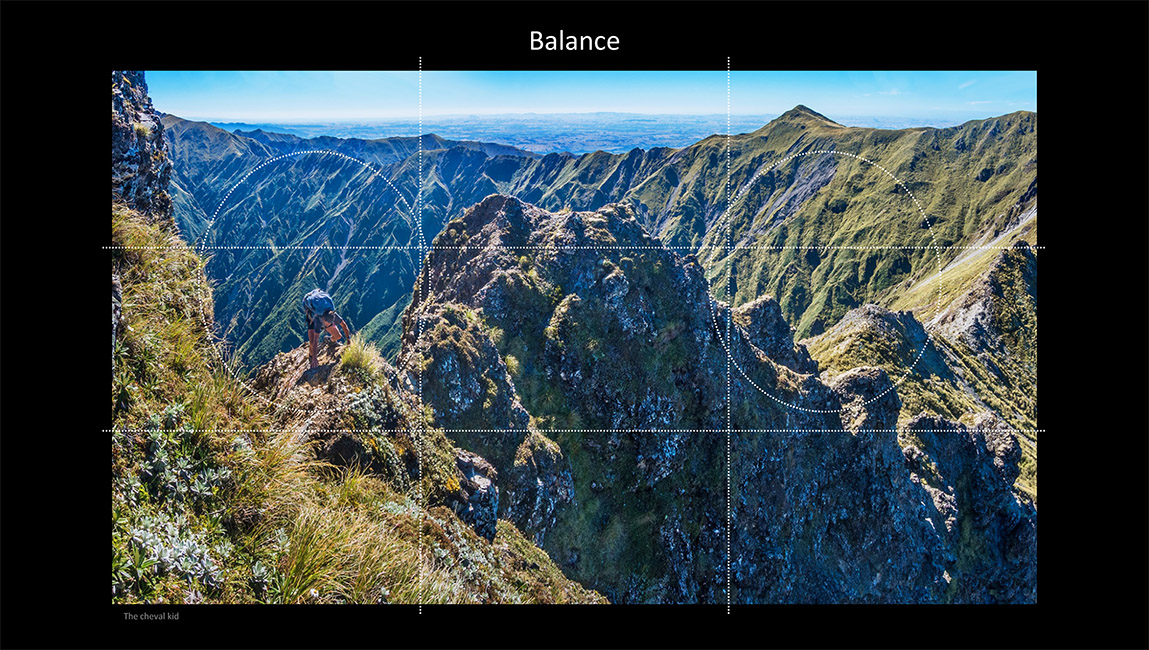
There are other aspects in a scene that can also affect the sense of balance

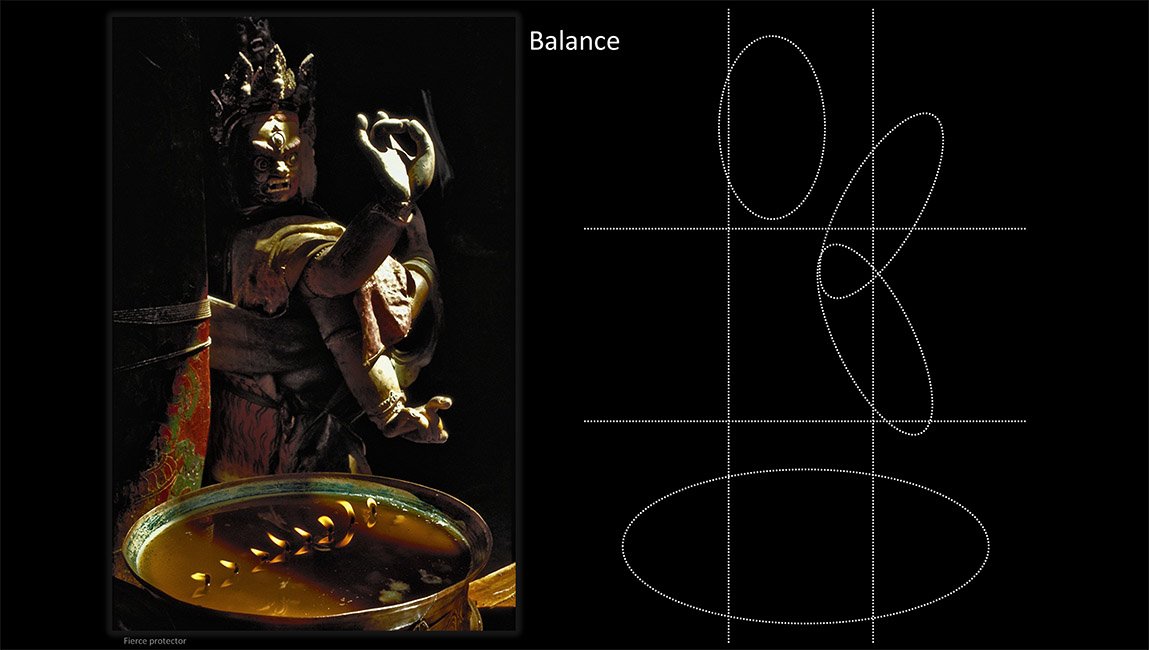

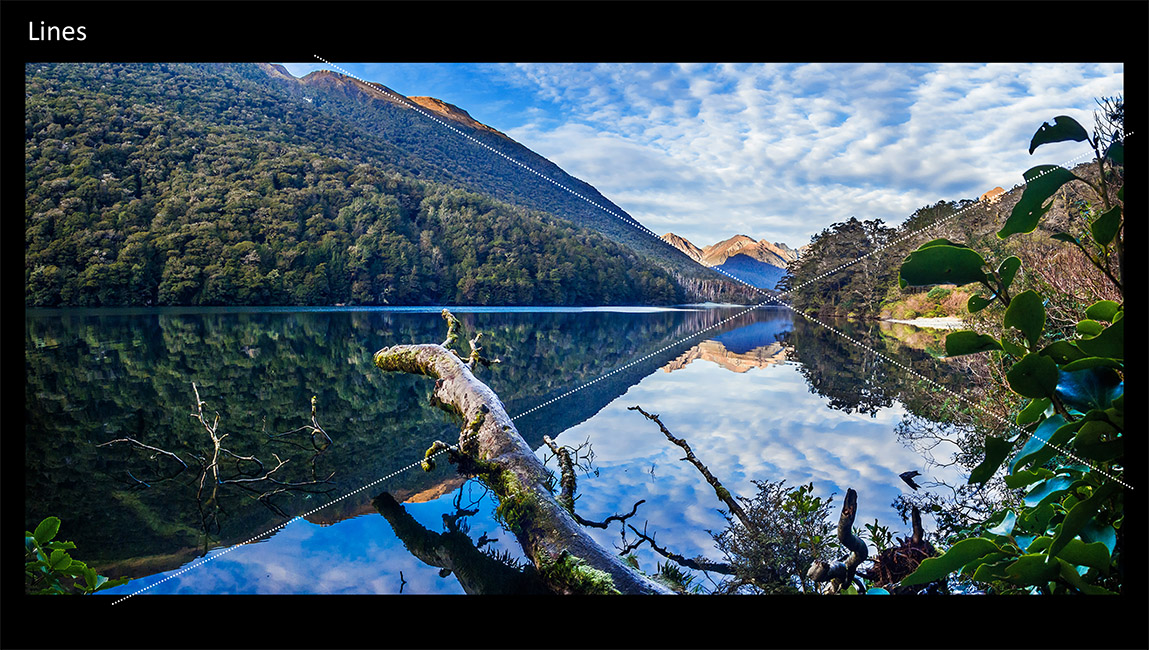
Also be aware of natural lines in the scene that can be made a feature of the image or, if not consciously factored in, can become an unwanted distraction

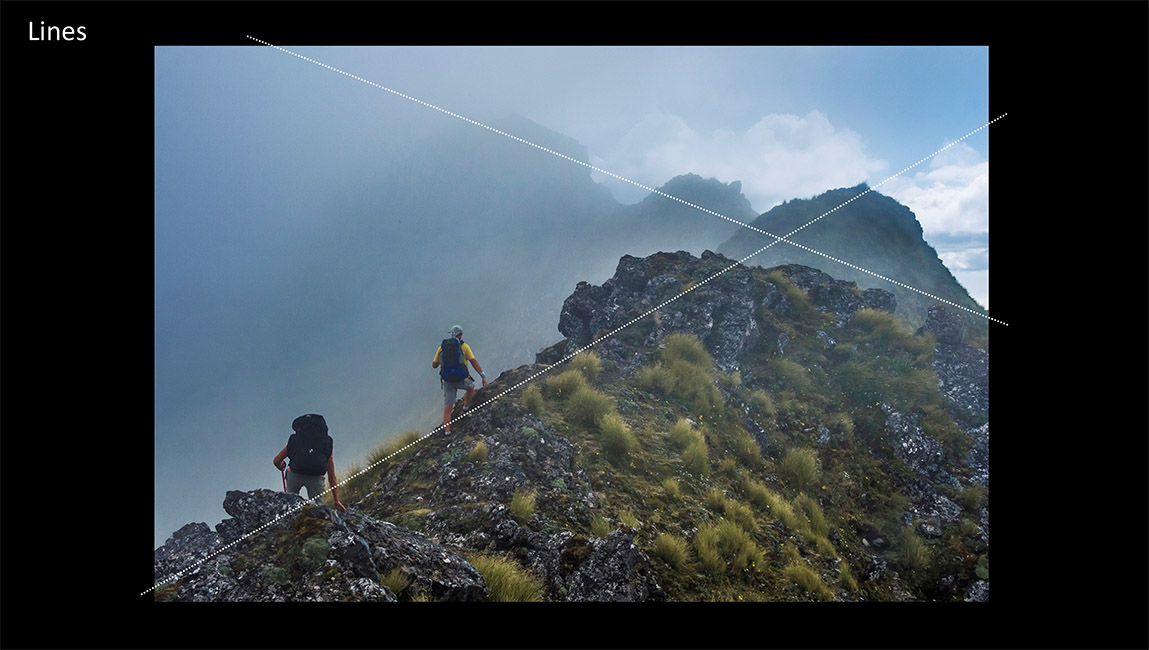

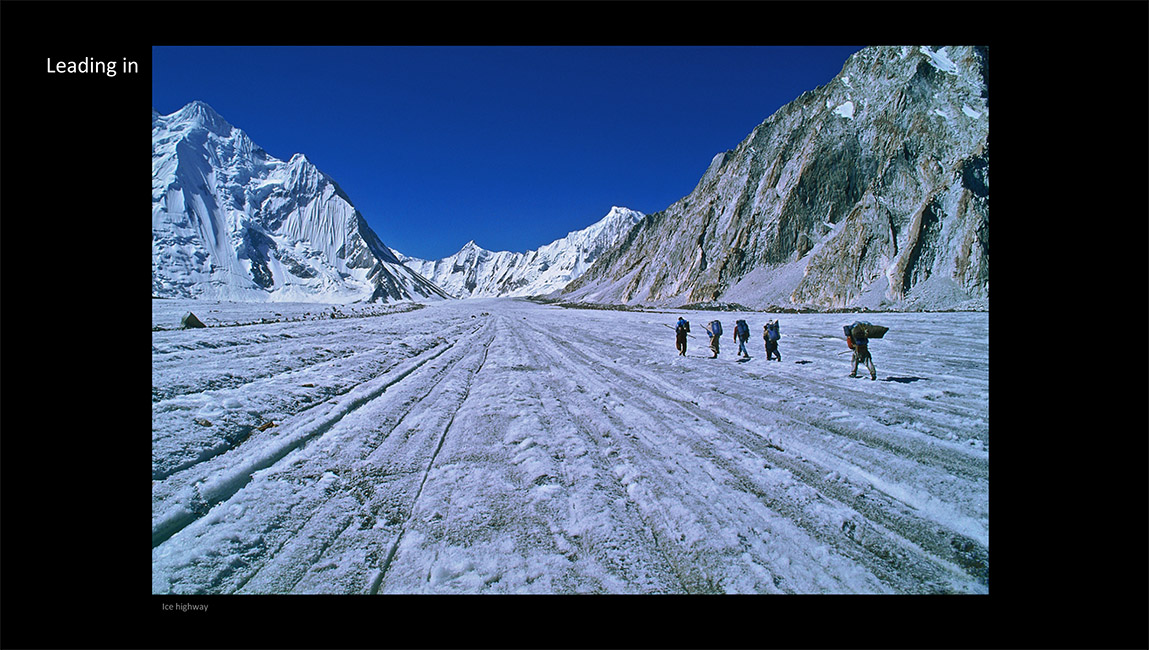
To increase the viewer engagement of an image, featuring people leading into the scene can help to place the viewer there, while also giving a sense of scale

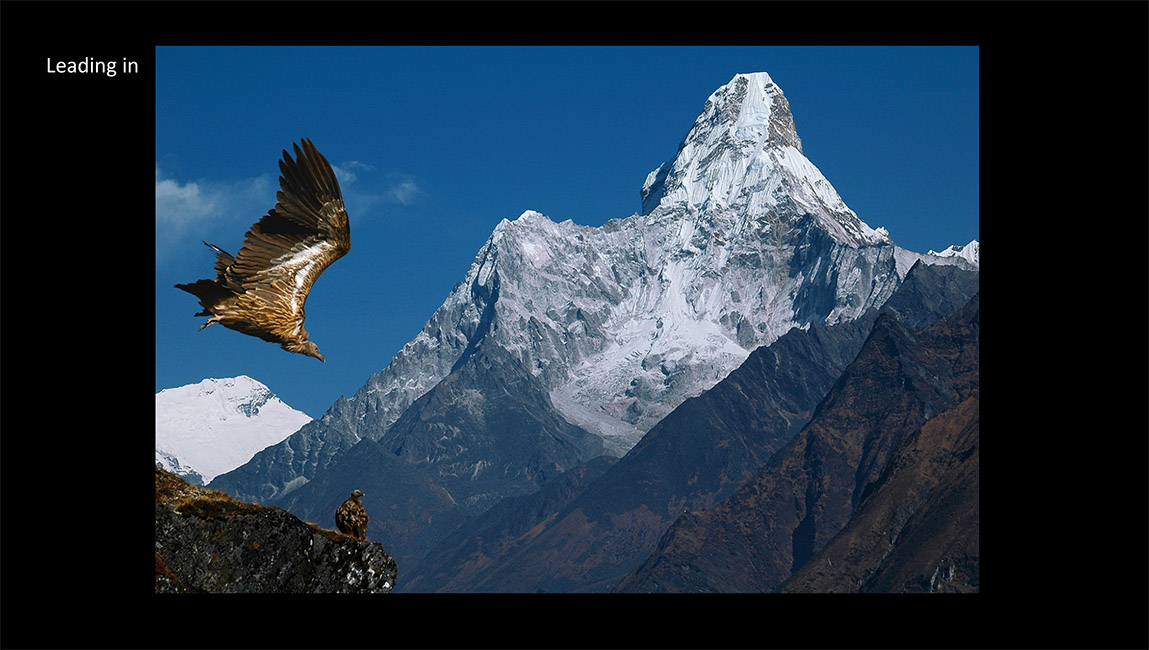
Here the Griffon is swooping in, helping to accentuate the vastness of the scene

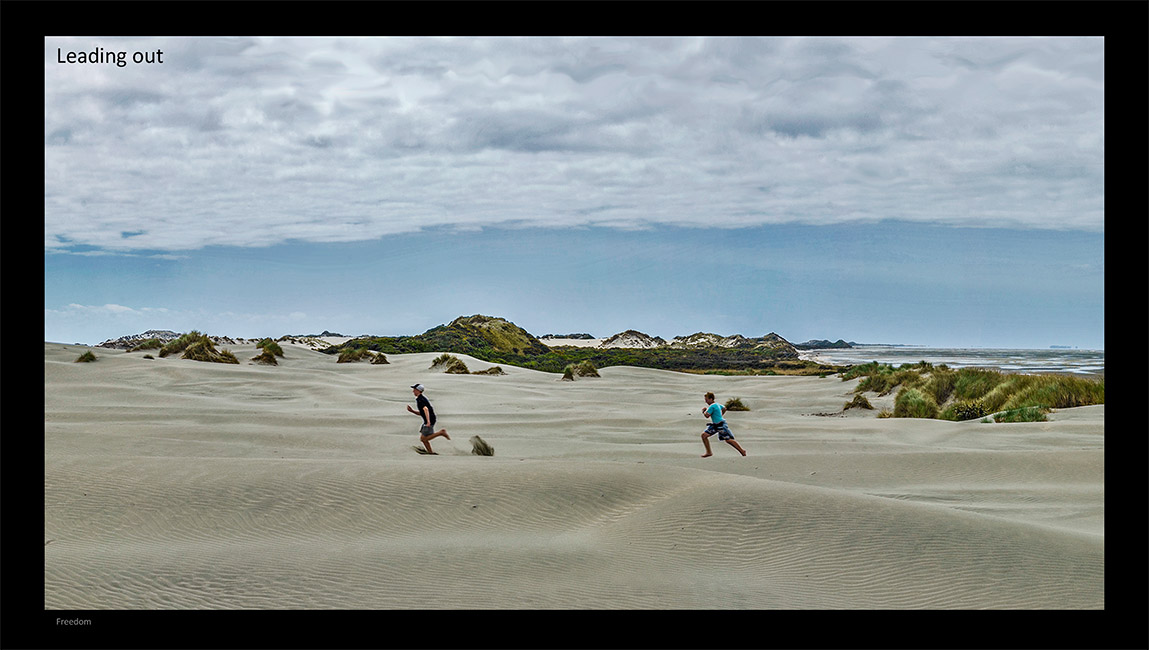
The runners have the effect of leading the eye across and out of the scene

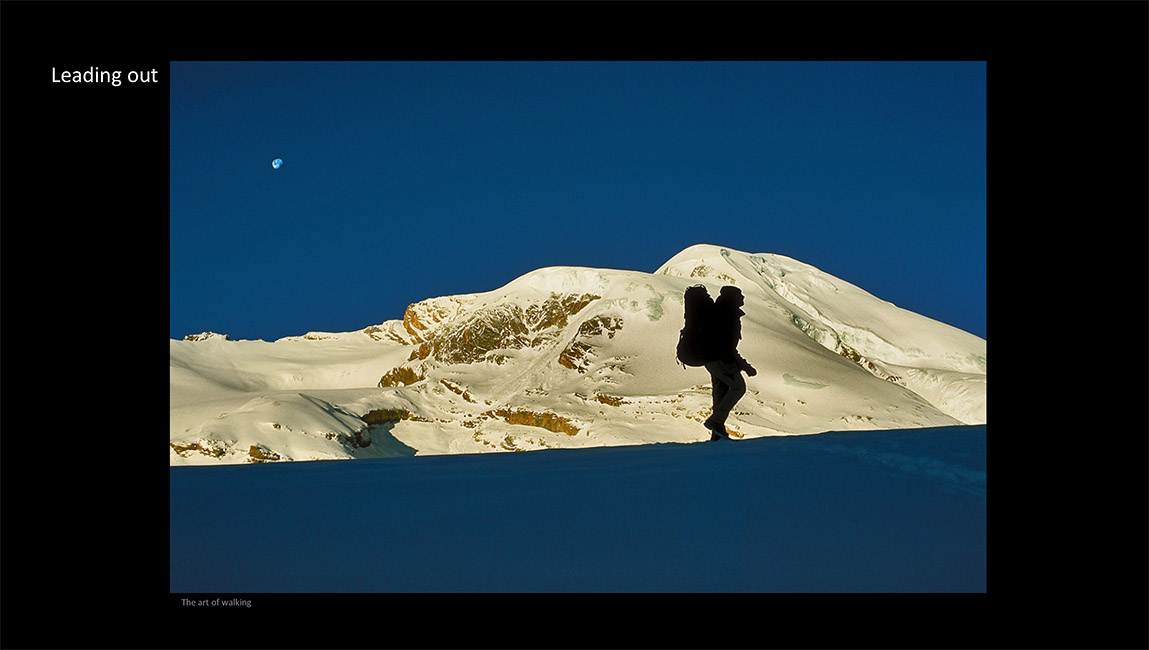
The hiker is about to leave the scene, implying more adventures to come

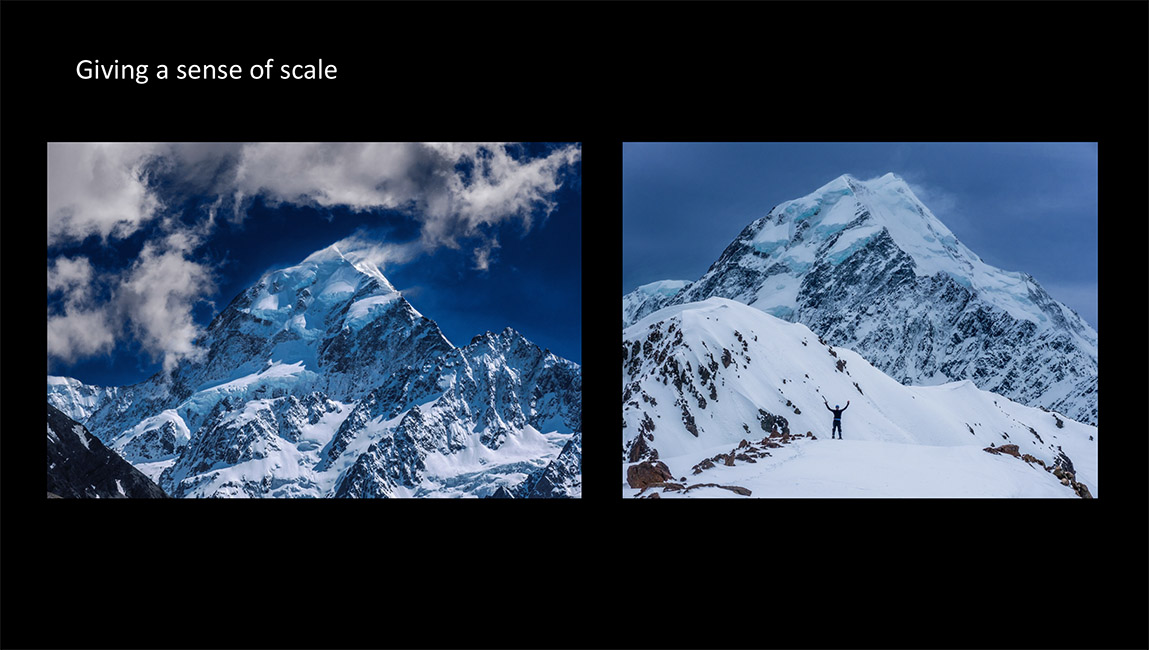
If you want the viewer to appreciate the scale of a landscape with no man made objects in it, then featuring a person in the scene will help this. Be aware that people don't always want to see people in landscape images though. If scale is not that important then leaving people out can be the better option

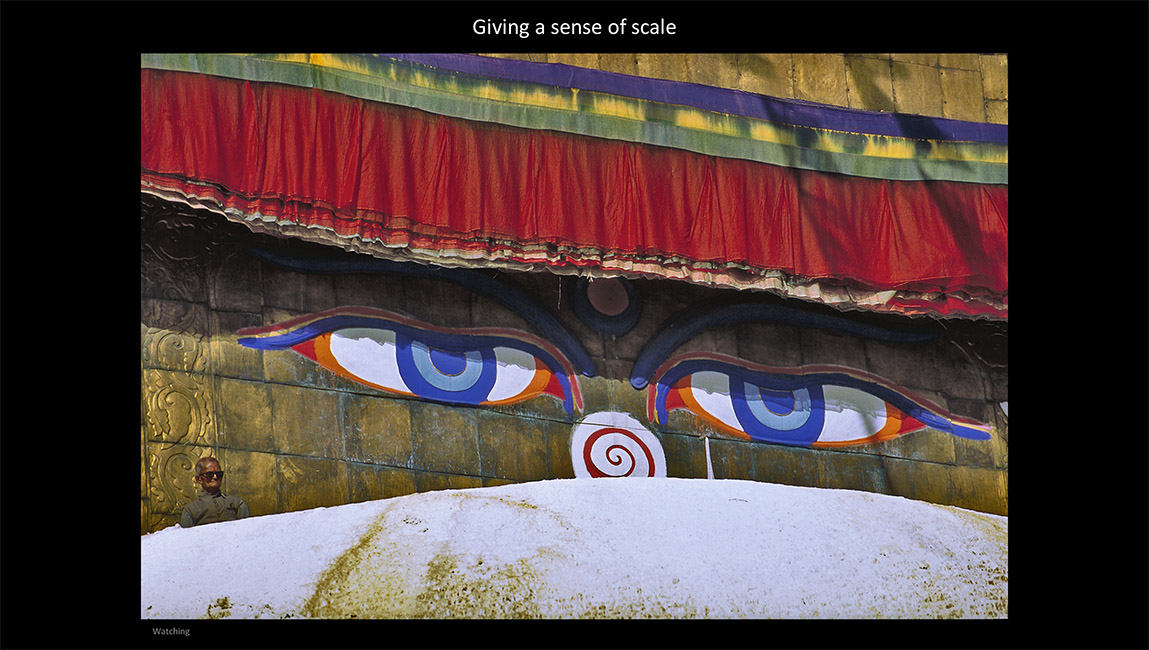
Featuring a person next to a man made object also provides scale, which is the main point of this image

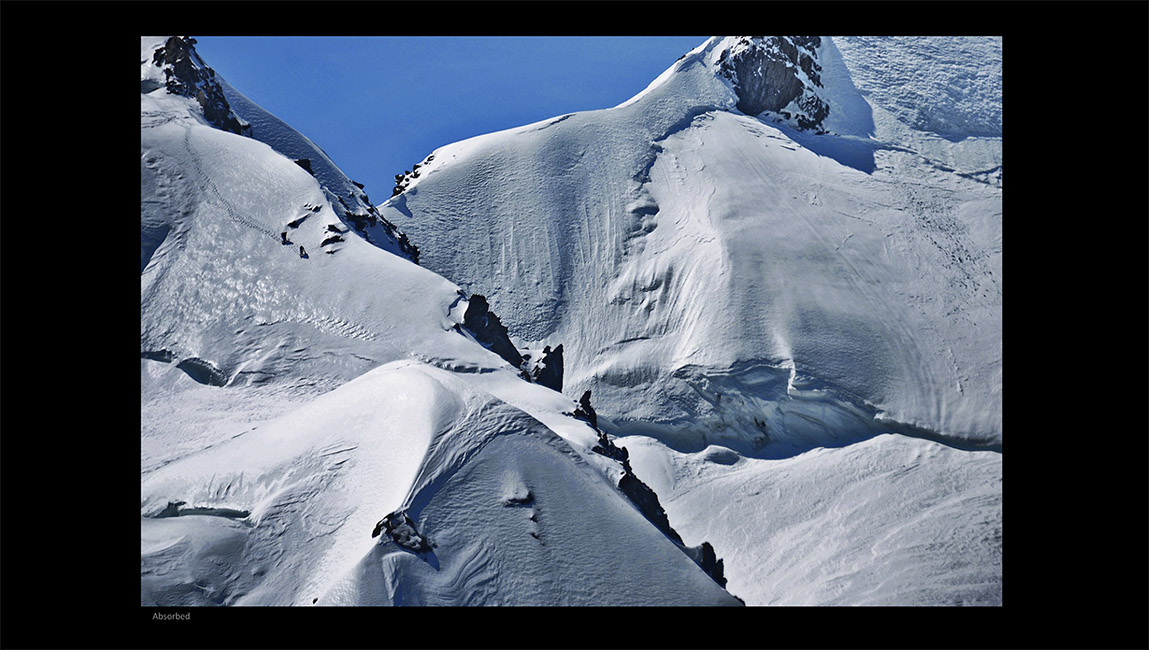
Again, the scale and steepness of the terrain are major points in this image

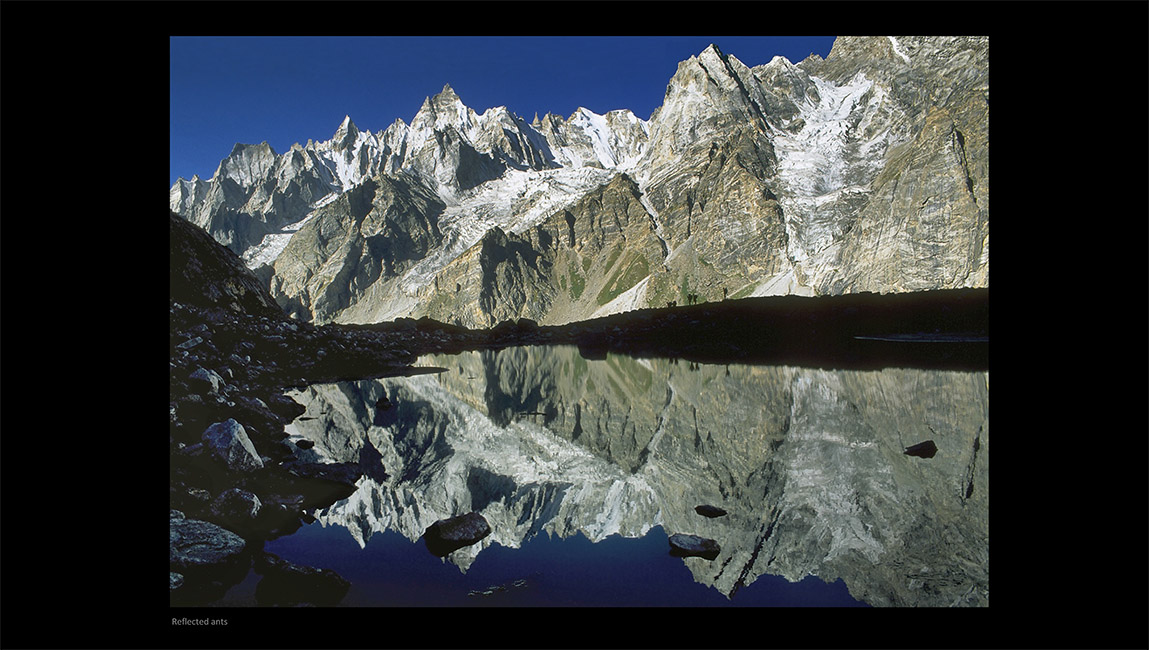
A mirror reflection on it's own here would be nice, but having the ant-like porters also reflected is what really gives this image it's impact

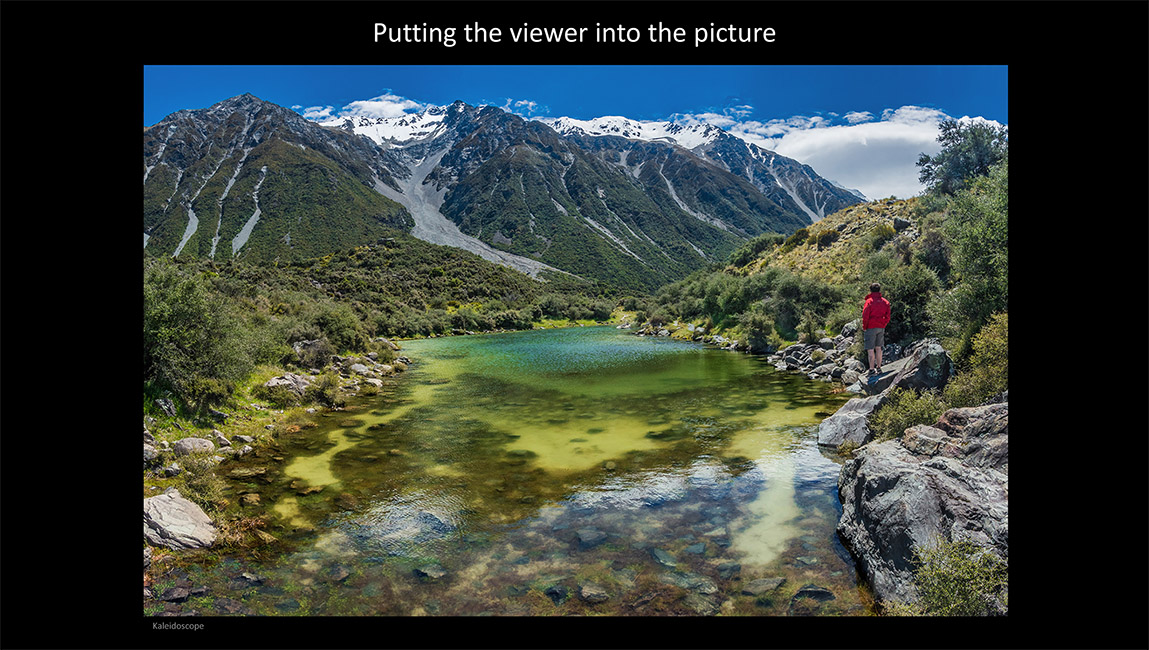

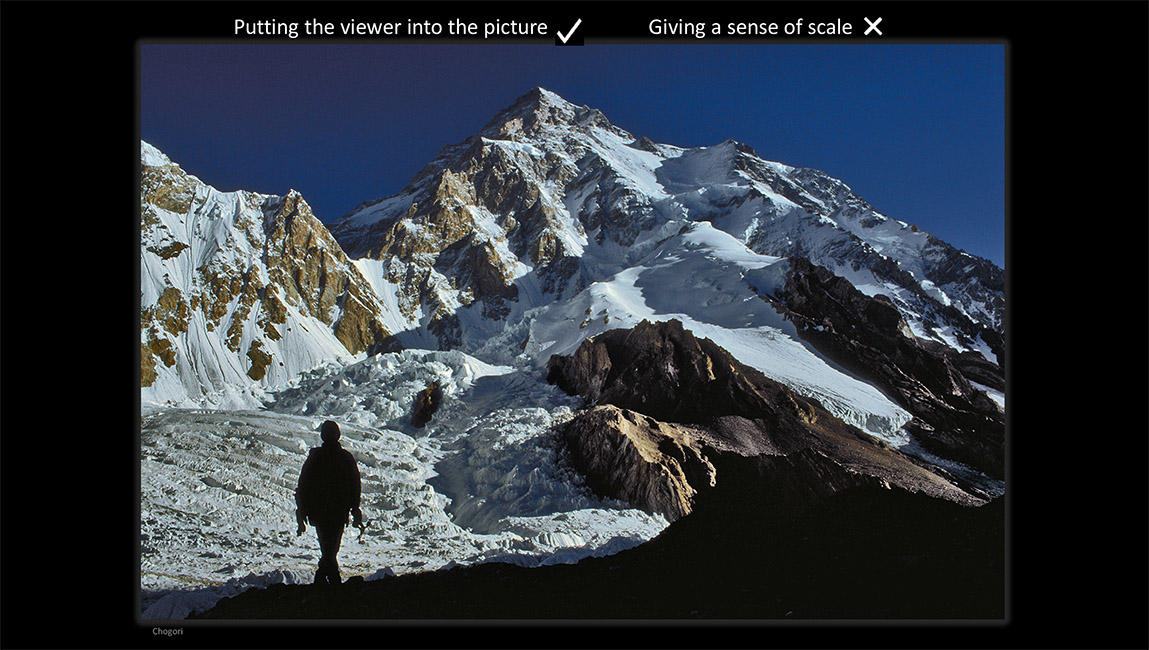
Featuring a person does not always provide scale. In this shot, taken at K2 base camp, the foreshortening effect is pronounced, making K2 appear much smaller than it really is

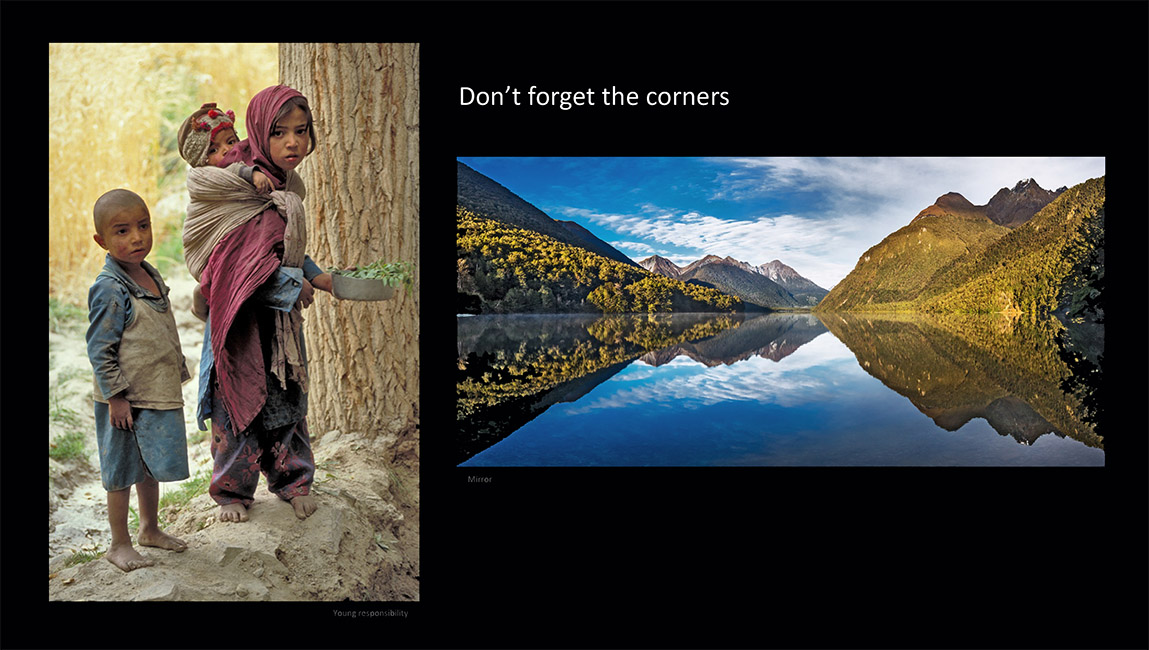
What's going on in the corners can be an unwanted distraction. In the left image I made sure that the corners were clean. Some believe it's a cardinal sin to allow lines to directly intersect with corners. Personally I don't agree. In the right image I think it adds to the feeling of perfect symmetry, becoming a notable aspect of the overall composition

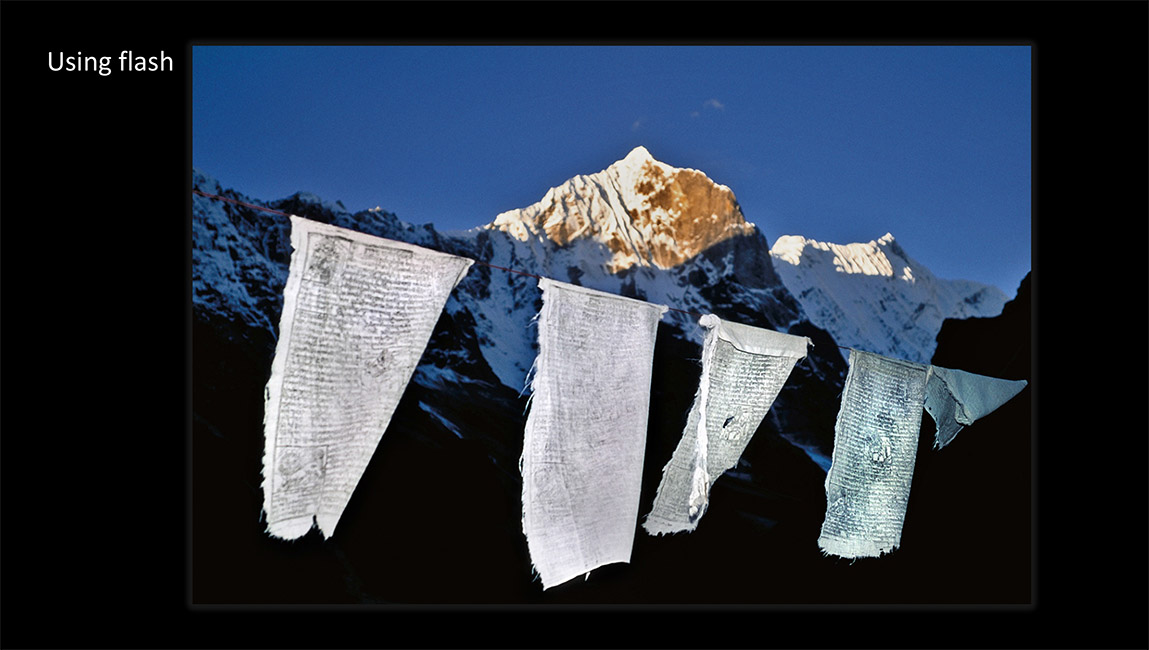
Sometimes use of flash to brighten up a darkened foreground can significantly improve an image

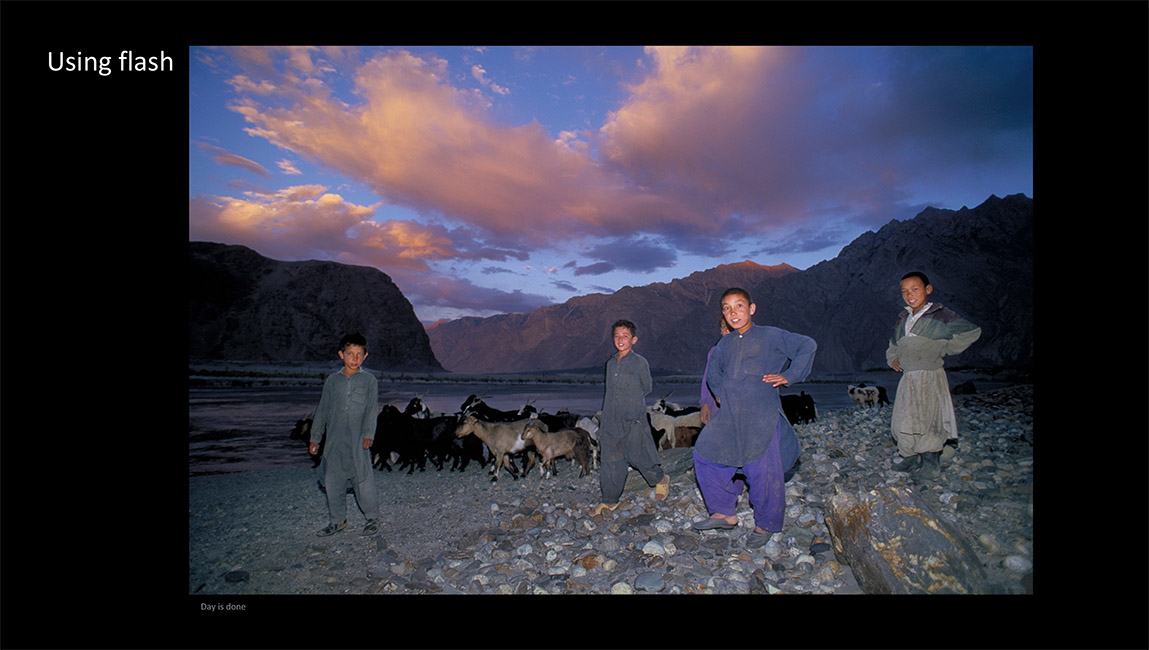

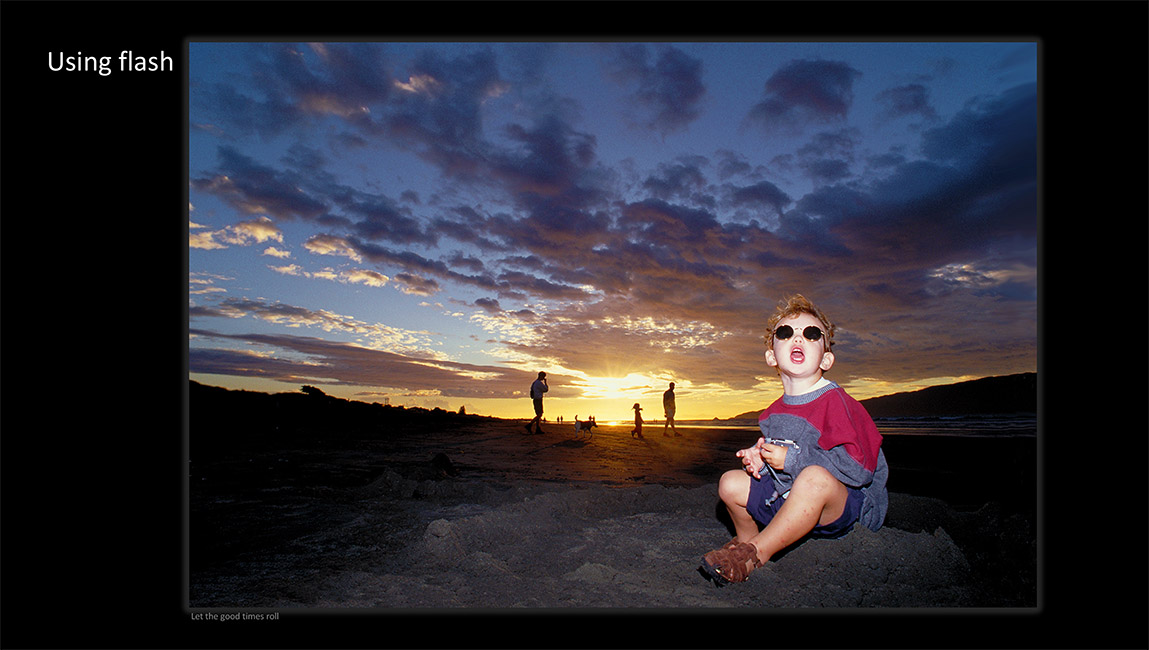

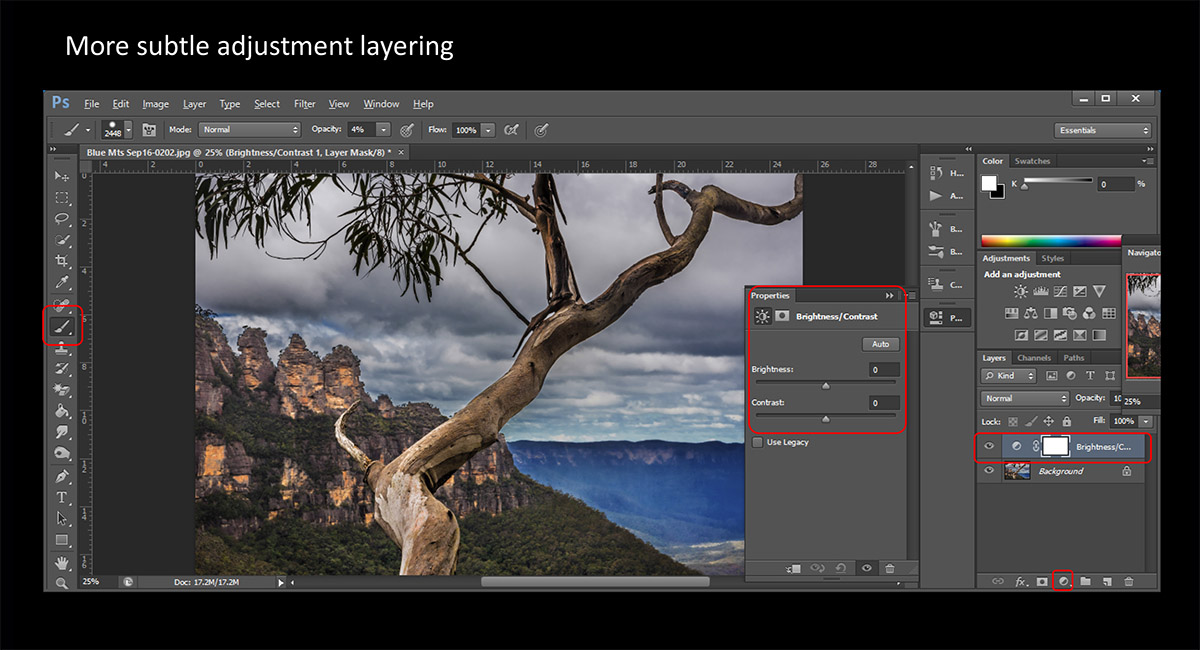
Adjustment layers in Photoshop offer almost limitless ways to make adjustments beyond Camera Raw - such as effectively light filling a dark foreground object, or backing off a distracting background

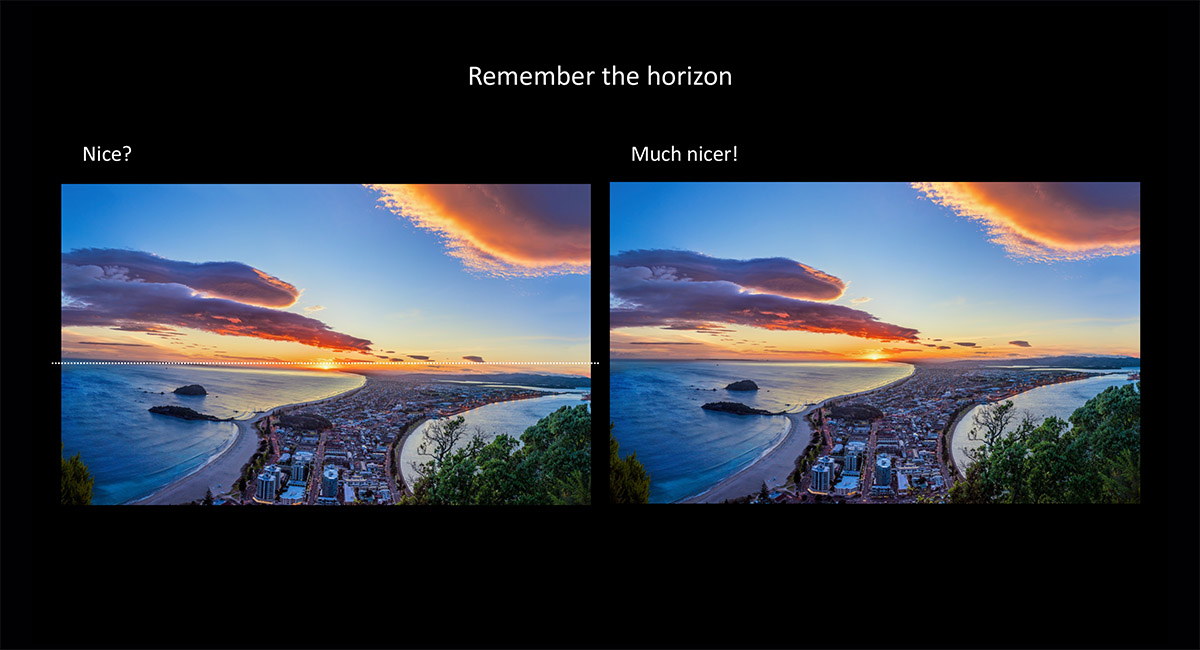
Small details really count in photography. What might be a beautiful image can be ruined by a skewed horizon

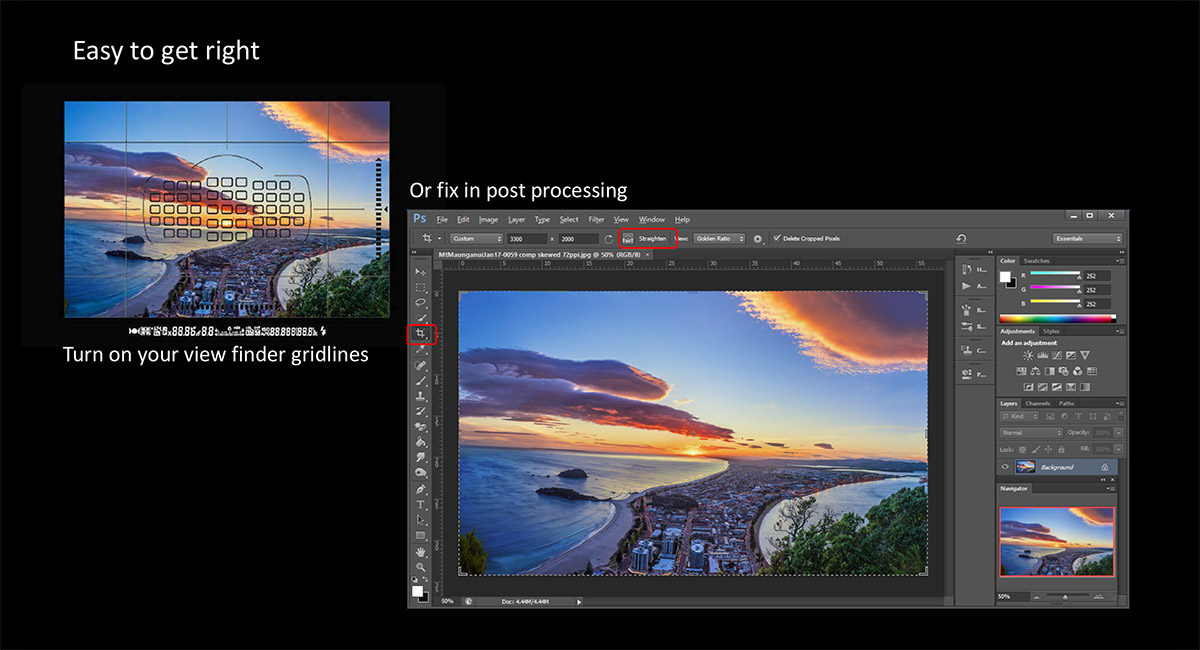
The good news is that it's easy to get right, or fix afterwards

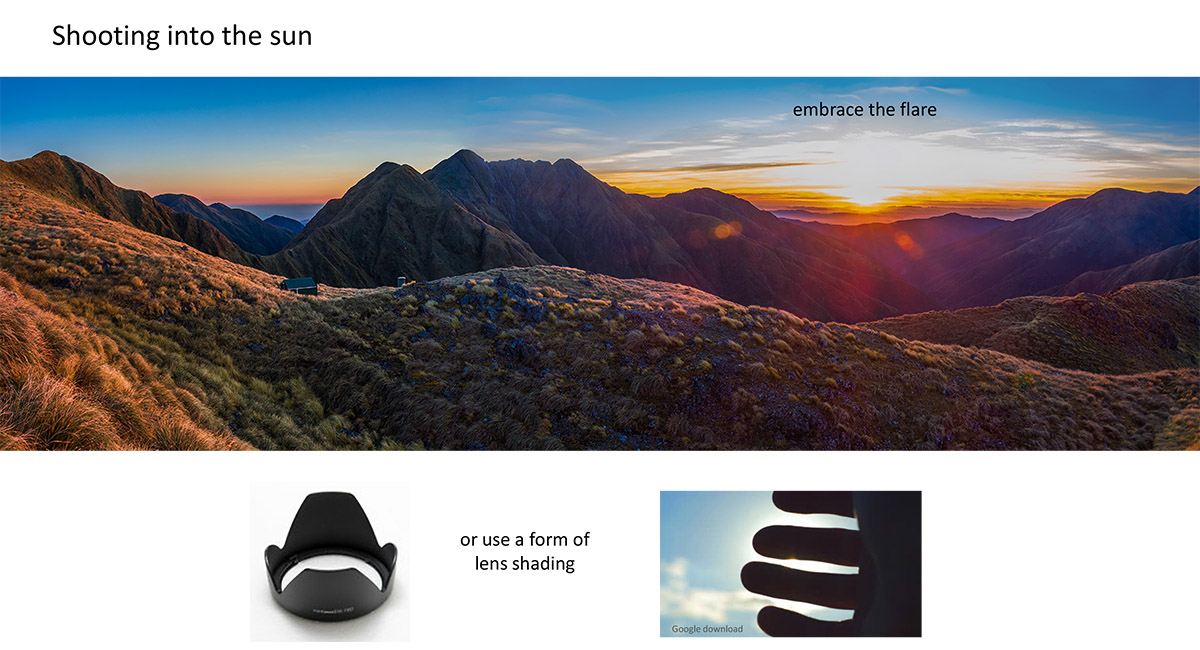
While challenging, you can sometimes get nice, distinctive images shooting into the sun. The trick is to be aware of how much lens flare is occurring and, if need be, use some form of shading to control it

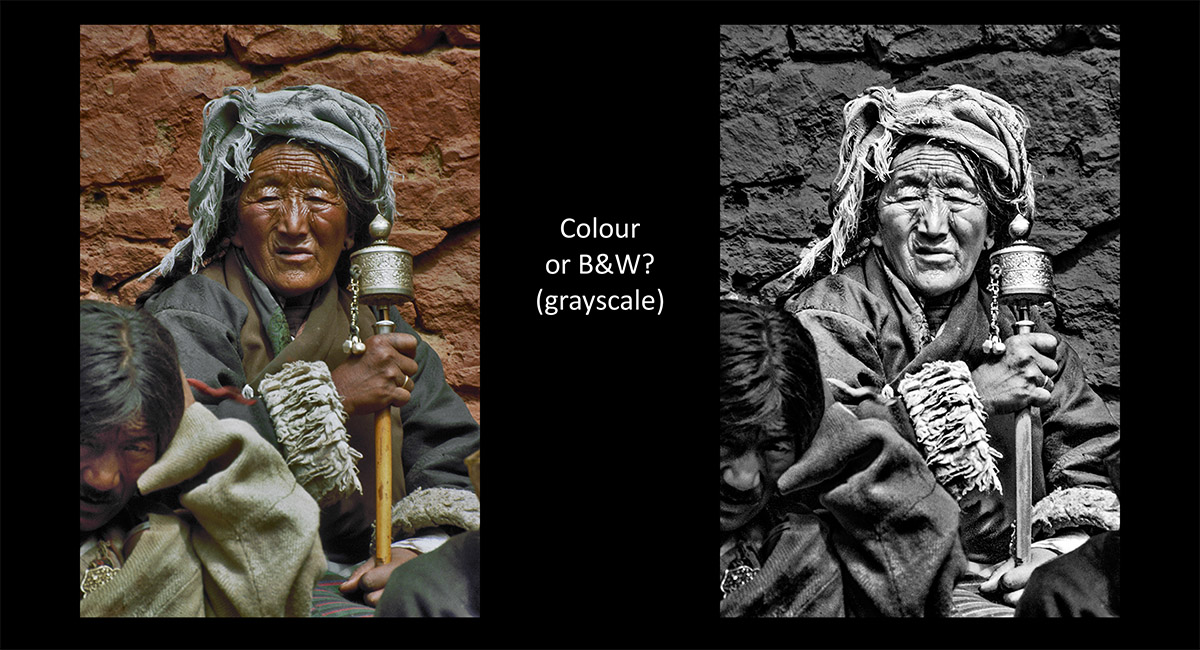
Colour and black and white photography are not as simple as converting your colour image to gray scale. It's mostly a matter of taste, but some images do suit black and white better than colour and vice versa. I personally gravitate to colour photography in the outdoors, but I've seen some stunning black and whites of mountains too. Experiment!

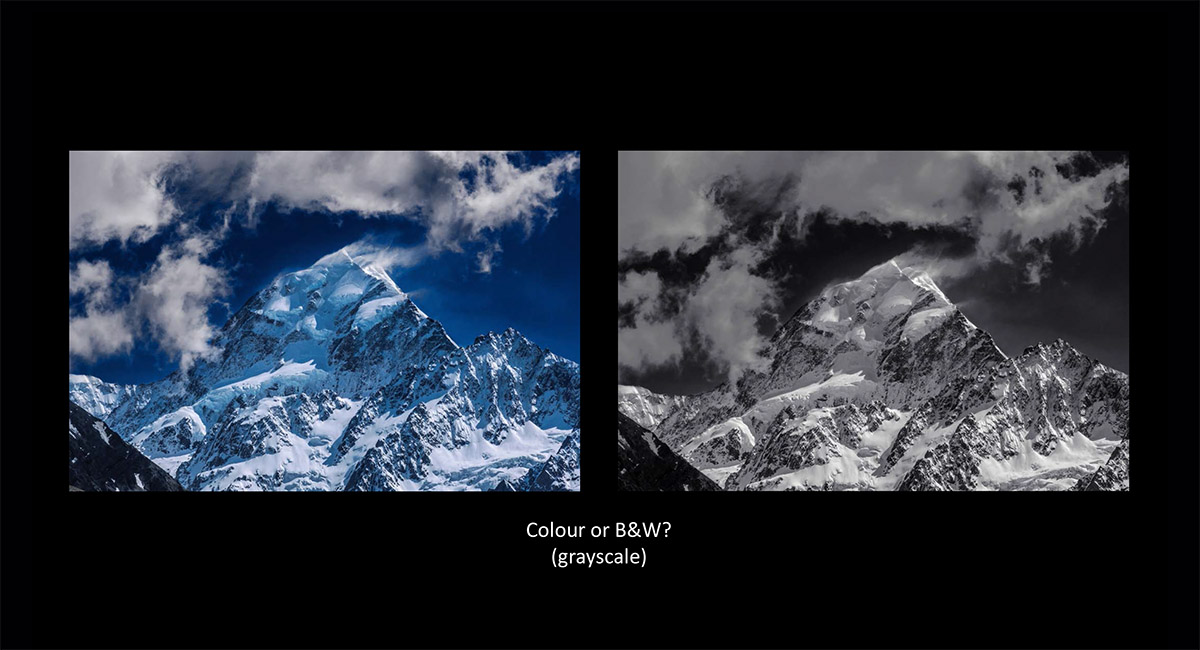

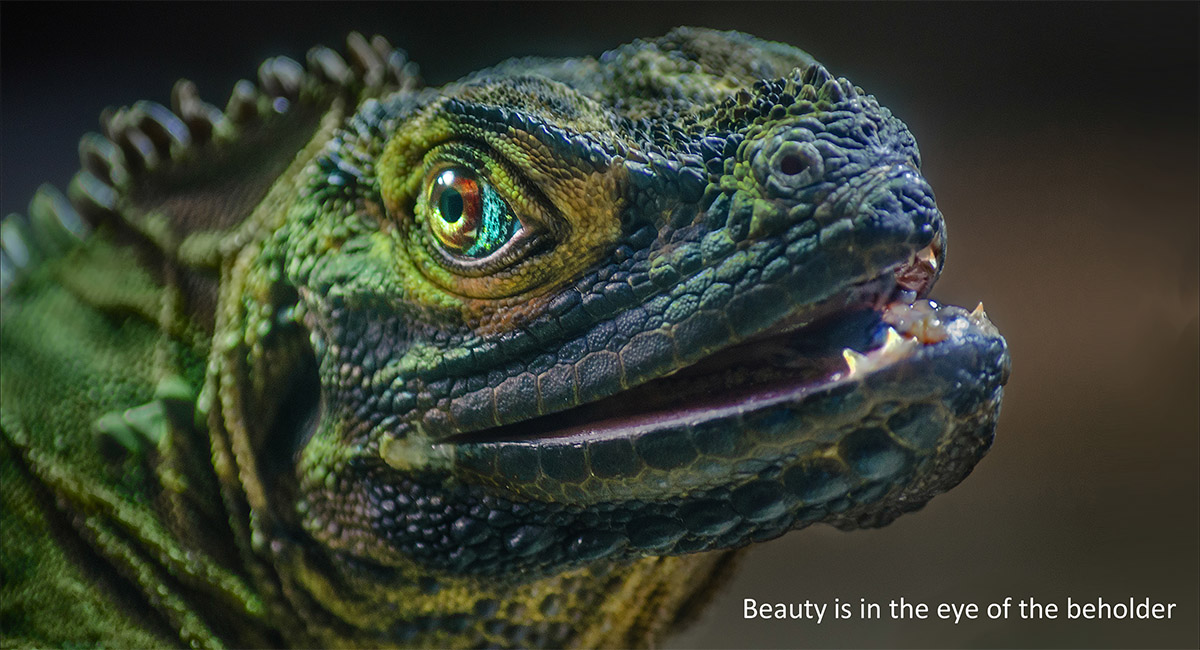
While you need to get the technical aspects right, photography is mostly an art form. And as we know, in art or in love, beauty is in the eye of the beholder

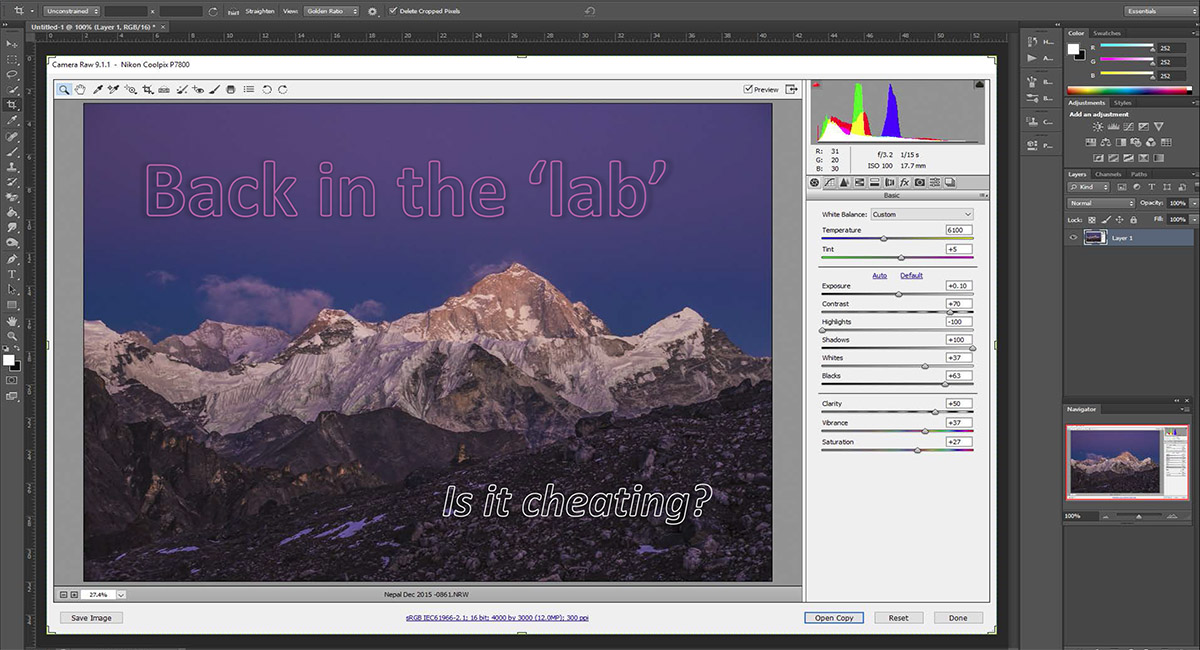
With software like Photoshop and Lightroom, we can achieve things as photographers today on our computers that only the most dedicated masters could in their darkrooms of the past. So, is it cheating? Was it cheating back then?

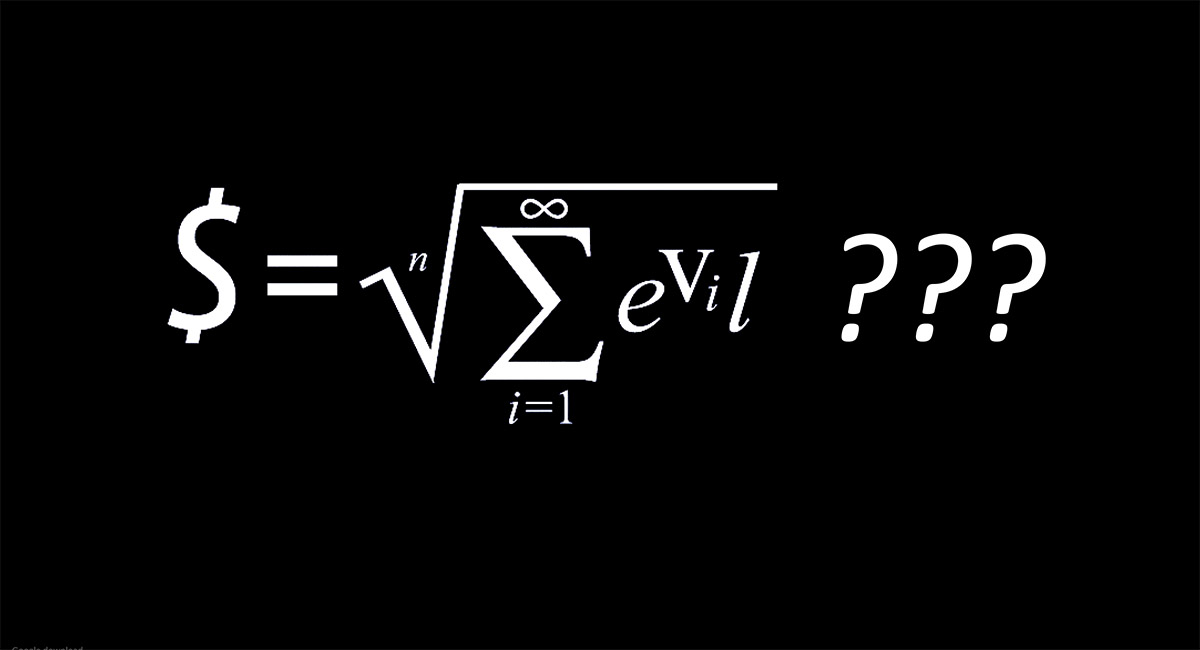
It's said that money is the root of all evil ...

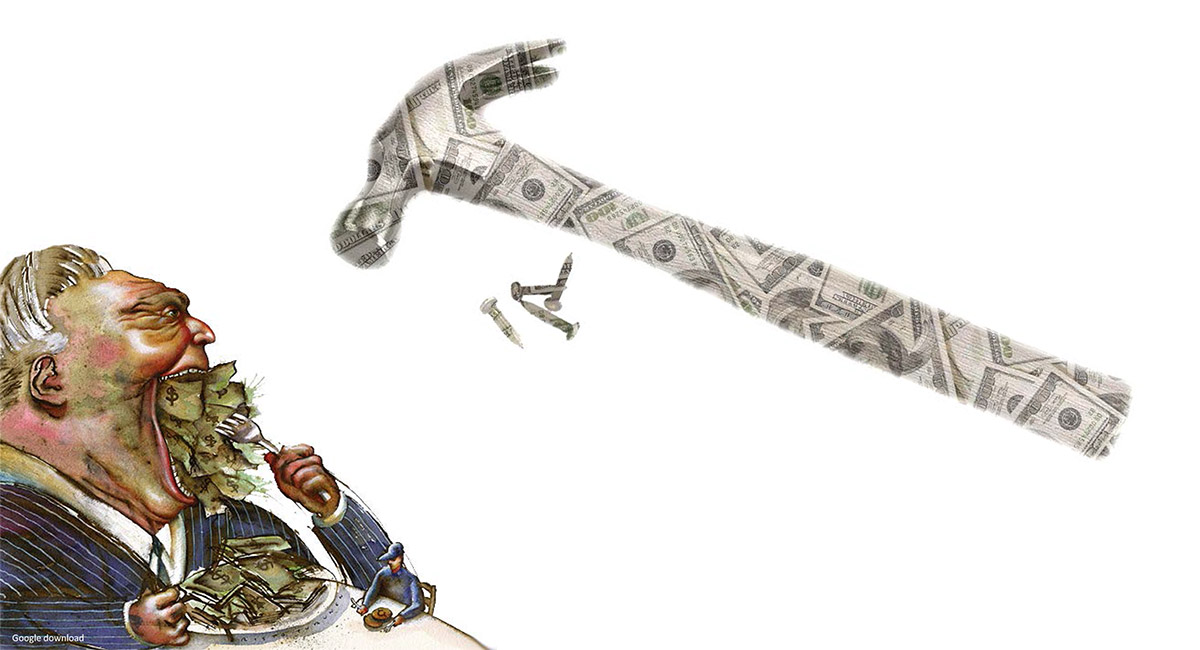
I don't think so. Money is simply a tool. It's human greed that could better claim the title of "root of all evil". Just as we can choose to use money well or badly, so it is with post processing our images. Photoshop is a set of tools

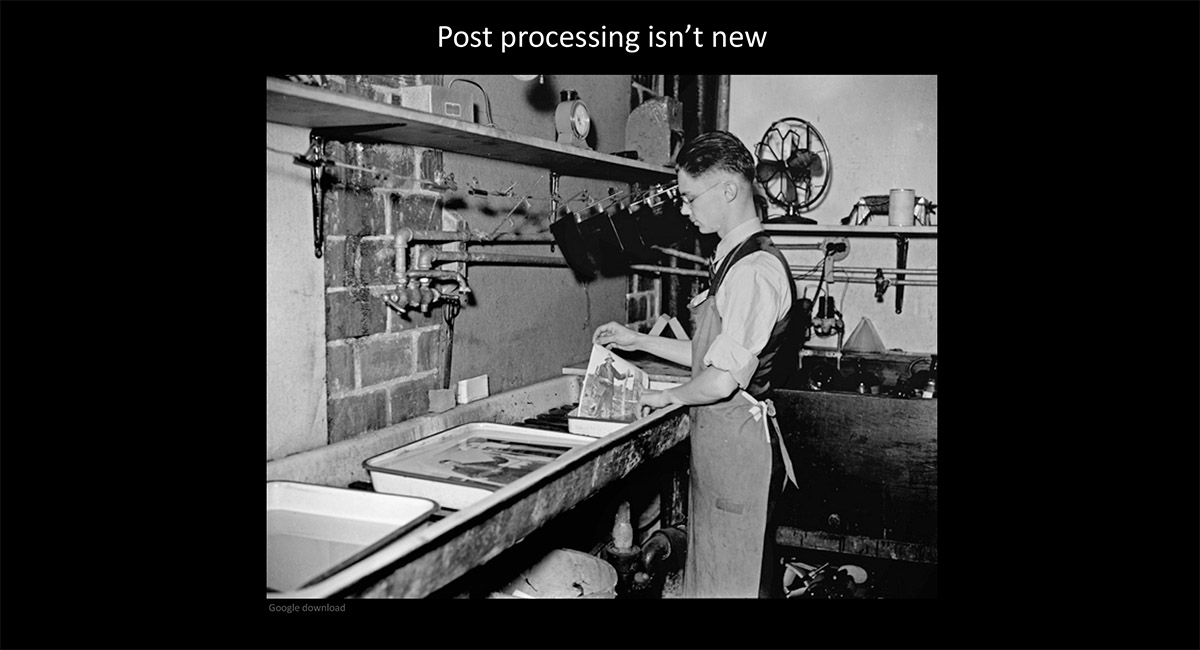
Today's tools are arguably easier and more accessible to use than the ones used in the dark room, but using tools to post process images has been going on pretty much since photography began

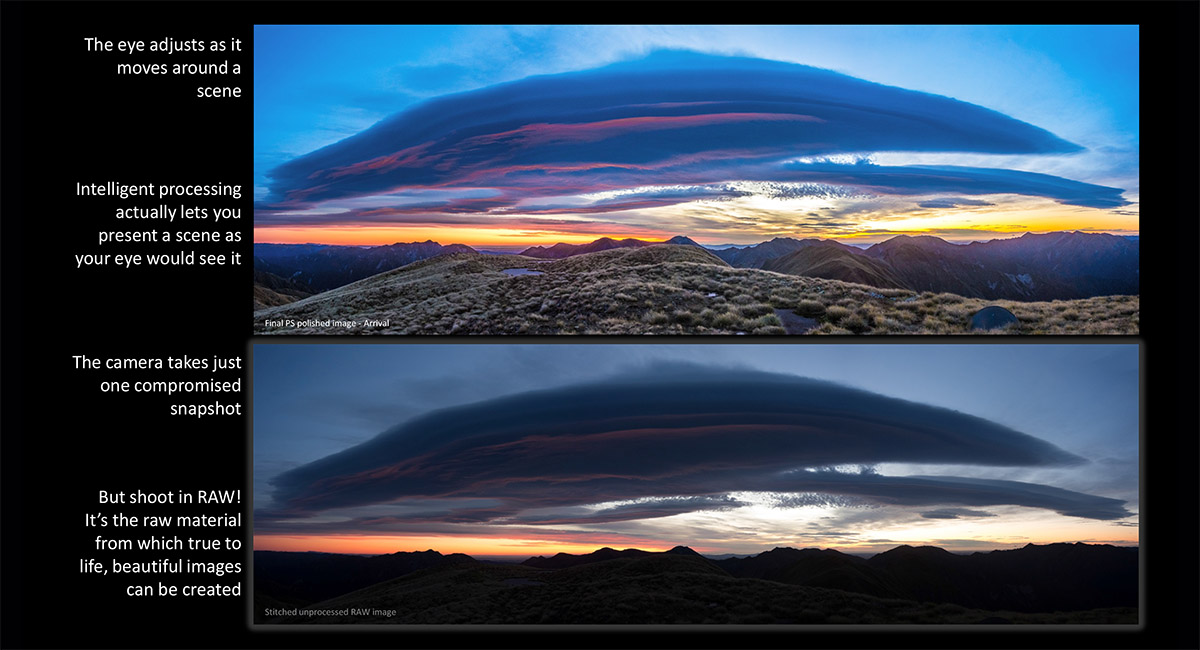
Unlike our eyes, which constantly adjust to light variation as we move around a scene, our cameras can only take a moment in time snapshot. Therefore the resultant image (especially when there's a wide variation between light and shadow in the scene) is often a lesser compromise on what our eyes would actually see. However, our camera, when Camera RAW is used, can capture a massive amount of information in one moment about any given scene. Armed with this, when we get back to our computer we can tap into this information to reveal different areas of a scene in the variable way our eyes saw it. This is the beauty of post processing. Rather than cheating, what good post processing does is unleash the full, real life potential of the moment in time image initially captured by our camera.

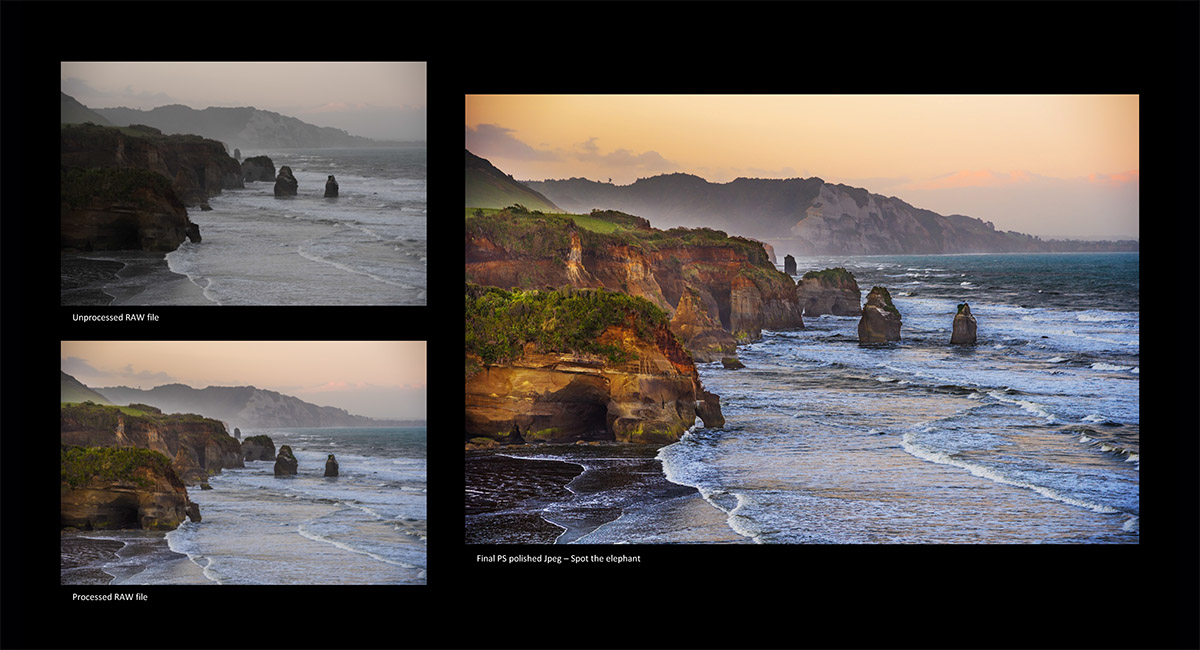
Here's an example - a frequently photographed scene along the north Taranaki coastline at dawn. Unprocessed RAW files are usually much duller than the actual scene. But once you unleash the magic held by them they start to look like the beautiful scene you actually saw. Beyond RAW you can polish an image further in Photoshop. When I do this I'm trying to bring the image up to the point where it's EMOTIONAL impact is getting close to how I FELT when actually there taking the photo. Post processing is not just about replicating what you saw, but also how you felt about it. As I said, photography is mostly an art. There is always more than one way to present an image. And none of them is necessarily the most right or most wrong. That's one of the beauties of photography in this 21st century. Embrace post processing and express yourself

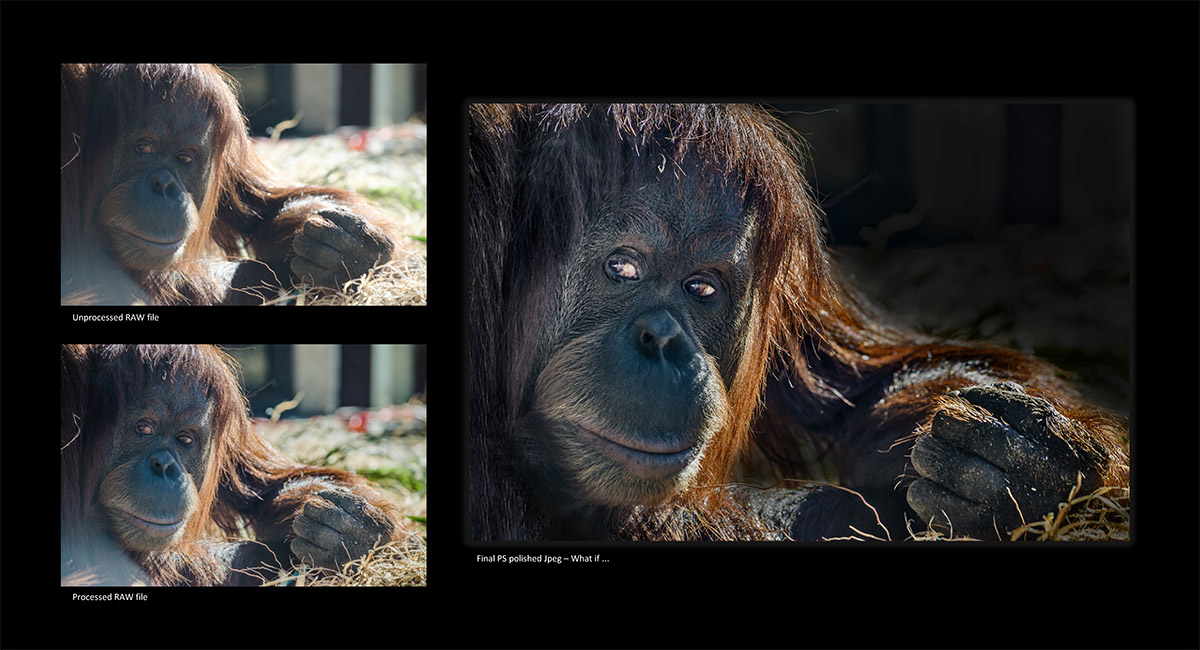
Another example taken in very difficult, into the sun conditions through glass at Melbourne Zoo. I wanted to capture this Orangutan's wistful expression. He seemed to be brooding, perhaps about the unfairness of his captivity while us humans gorked at him. Without post processing there would have been too many unsightly distractions to convey this single mindedly

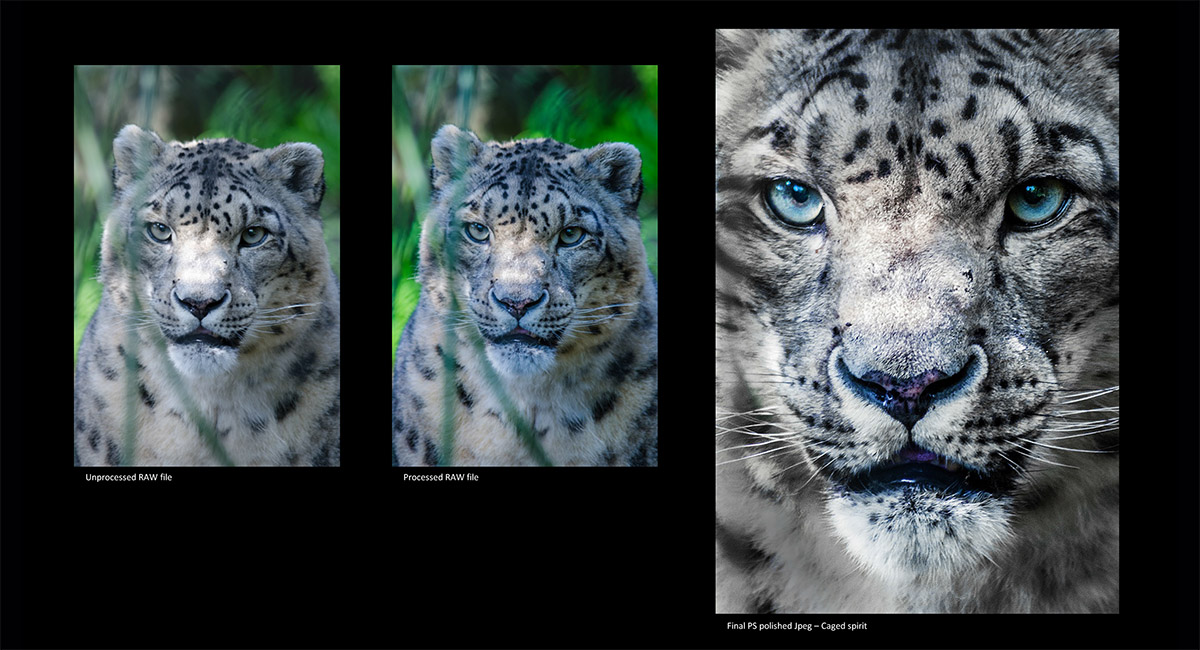
And another. As a climber the Snow Leopard really impresses me. I find it saddening to see them cooped up in a tiny space when their natural habitat is so vast and formidable. But through the wire of his cage, under mottled light, this Snow Leopard strode calmly, purposefully and directly towards me, looking me straight in the eye, or lens. I felt the power of his mountain spirit then and that's what I wanted to capture

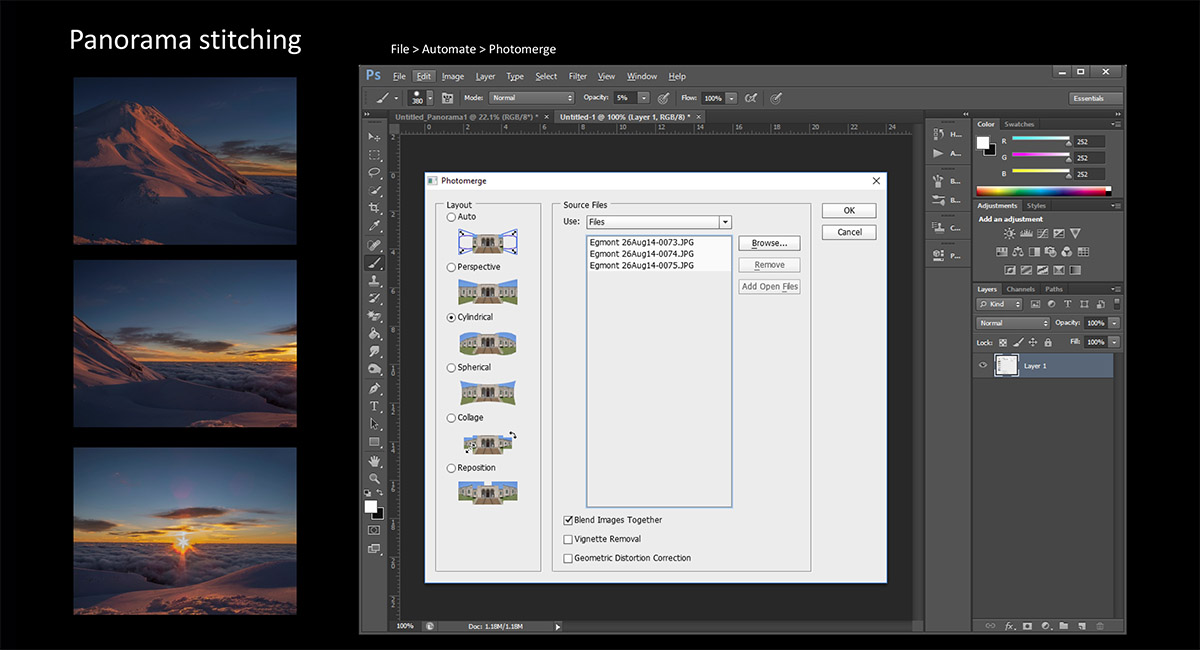
Photo stitching software is not difficult to use, but does add quite a bit of extra post processing work. It's often time well spent though - panoramas present an often more compelling story about the vastness of the mountains and other outdoor places than a standard landscape image can

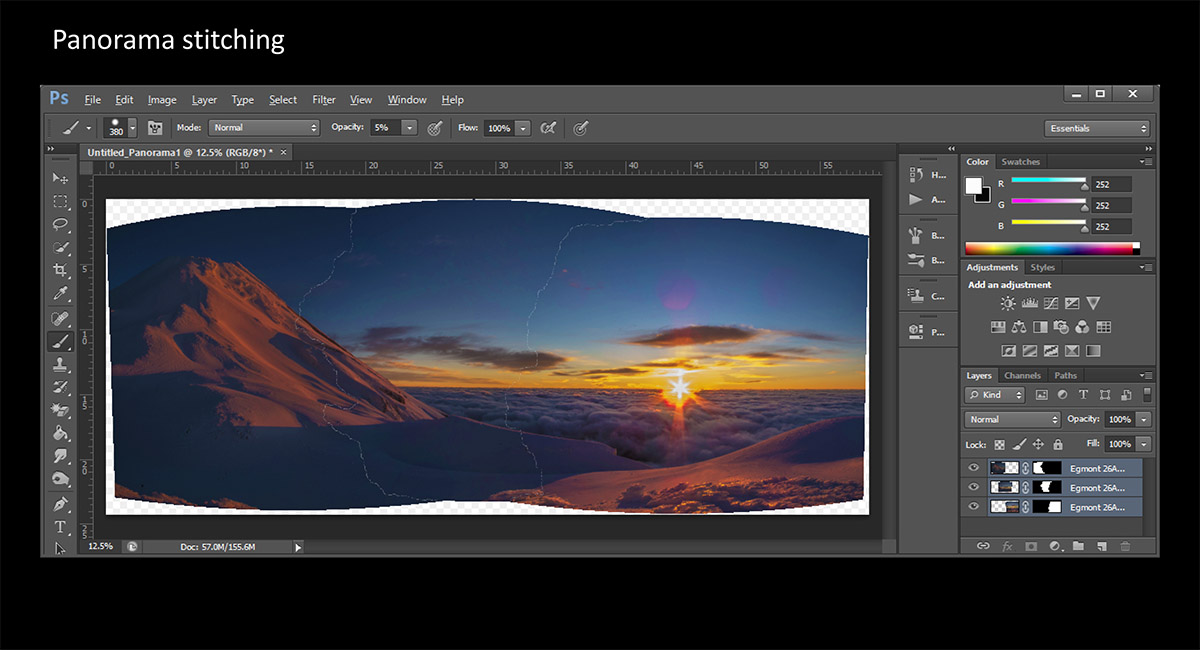
Here the three images are stitched and, once flattened into one image, are ready for further work - such as horizon correction, cropping, etc

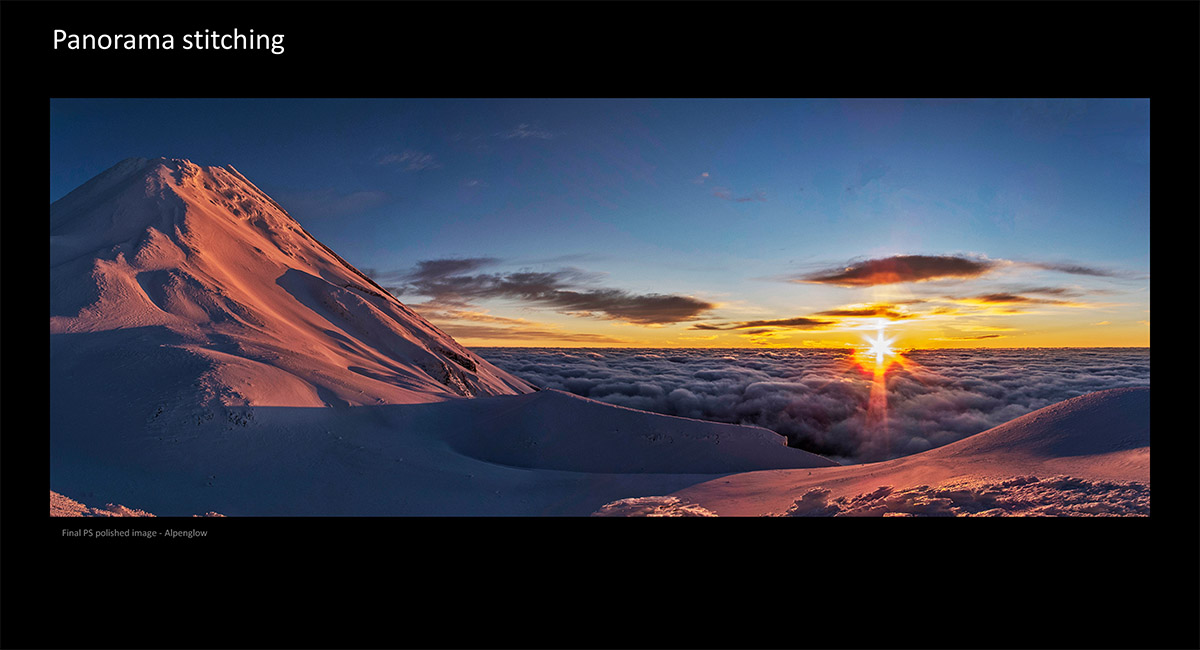
The final image takes me back to the awe and excitement of a magnificent sunrise at Syme Hut, before I went on to the summit of Mount Taranaki

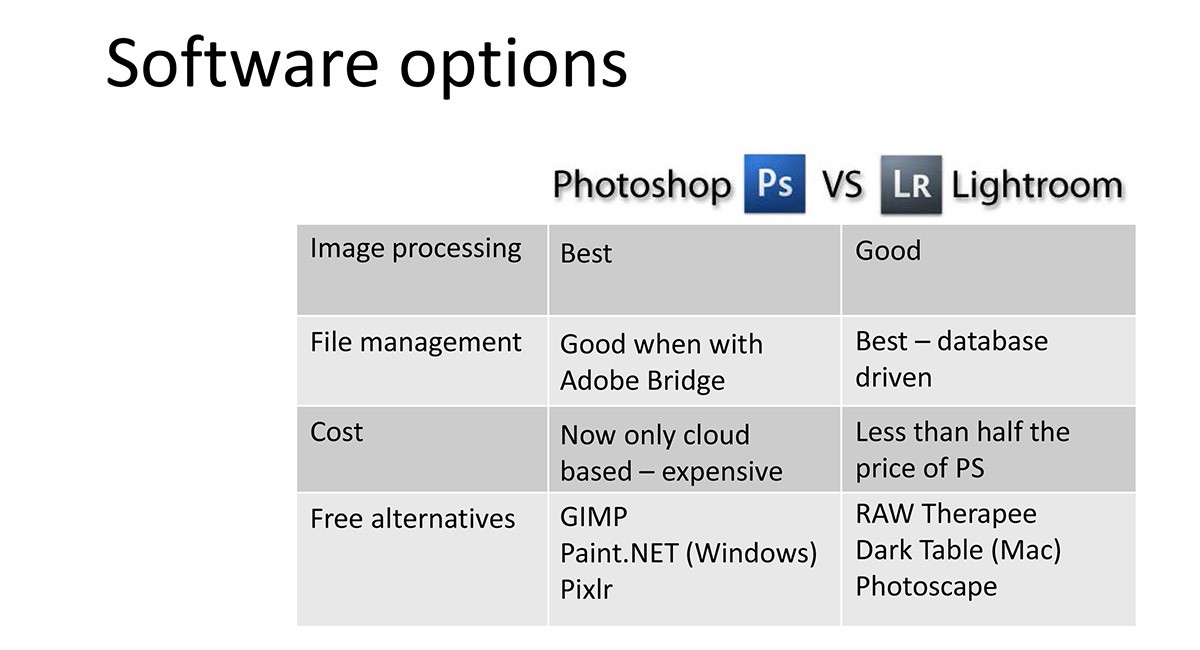
The two main aspects of post processing are the processing itself, then the file management of your growing collection of images. This table is high level, but gets you into the right head space for thinking about what's right for you

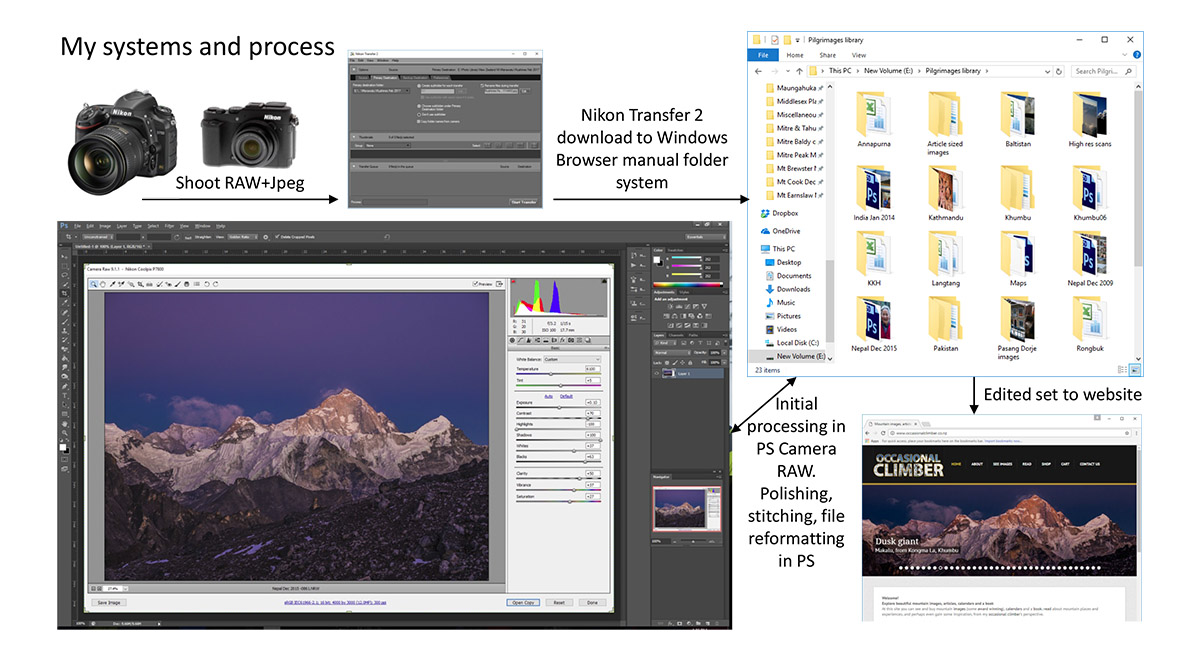
To do post processing well does demand considerable effort and skill. Being consciously aware about the process and systems you need will help to make them work better and more efficiently

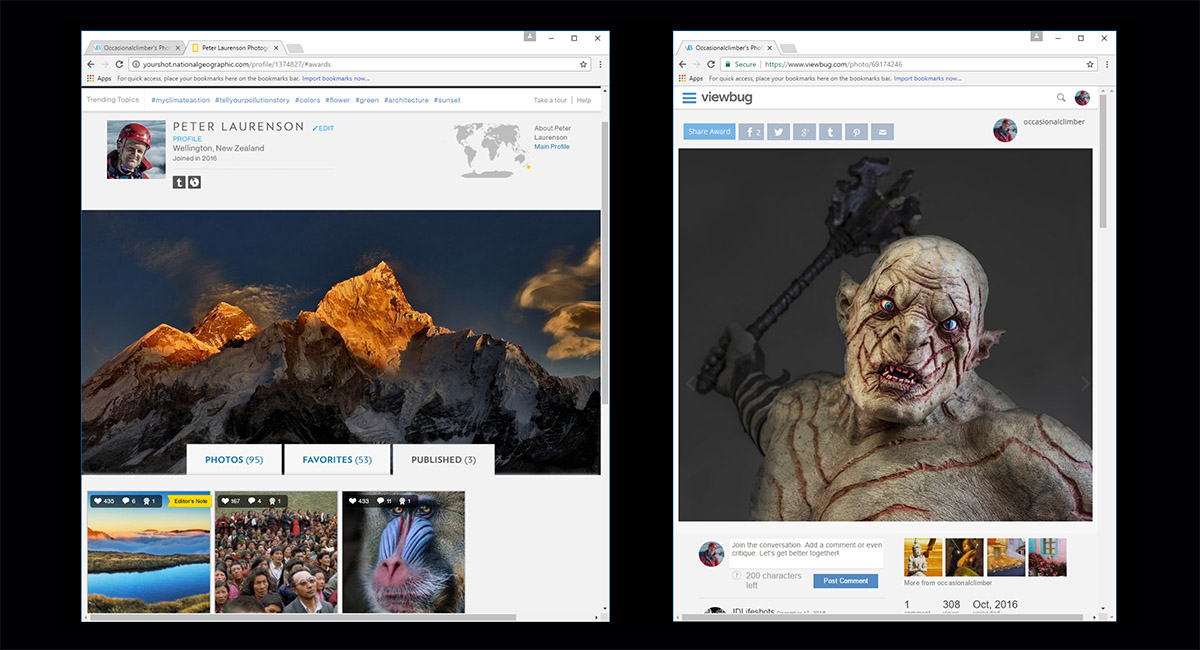
Depending on why you take photos, it may be worth thinking about how to share you favorite images. For me, knowing that others enjoy my images gives me added purpose to keep shooting. Aside from this website, to get my images out there, I've published a book and annual calendars. I write articles for several publications. I have pages on two notable social media sites designed for the photographic community - National Geographic's YourShot and ViewBug. I occasionally enter photo competitions. And of course there's always FaceBook

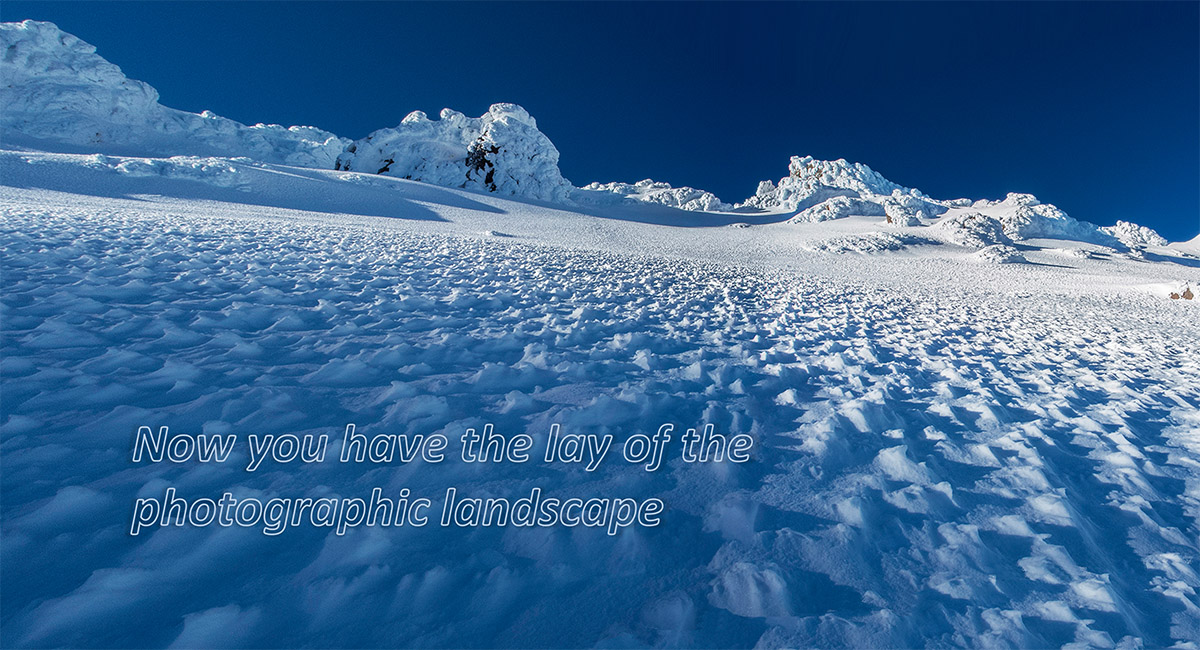
I hope you've found this presentation helpful and thought provoking

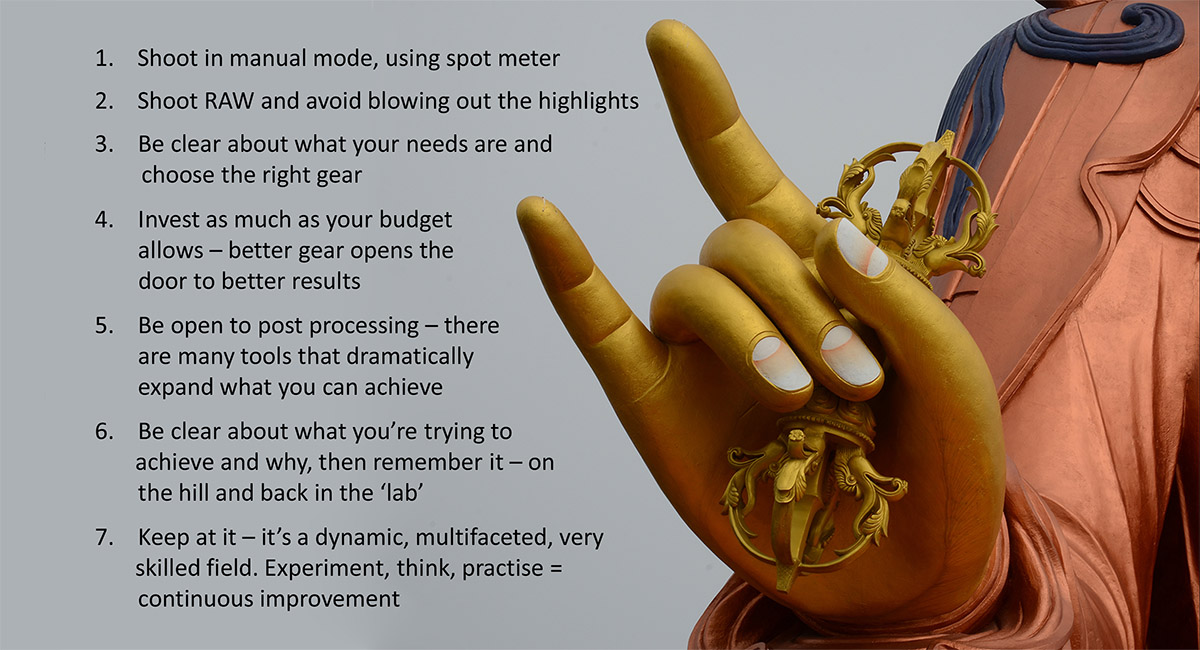
To finish, here are the most important points again ...

